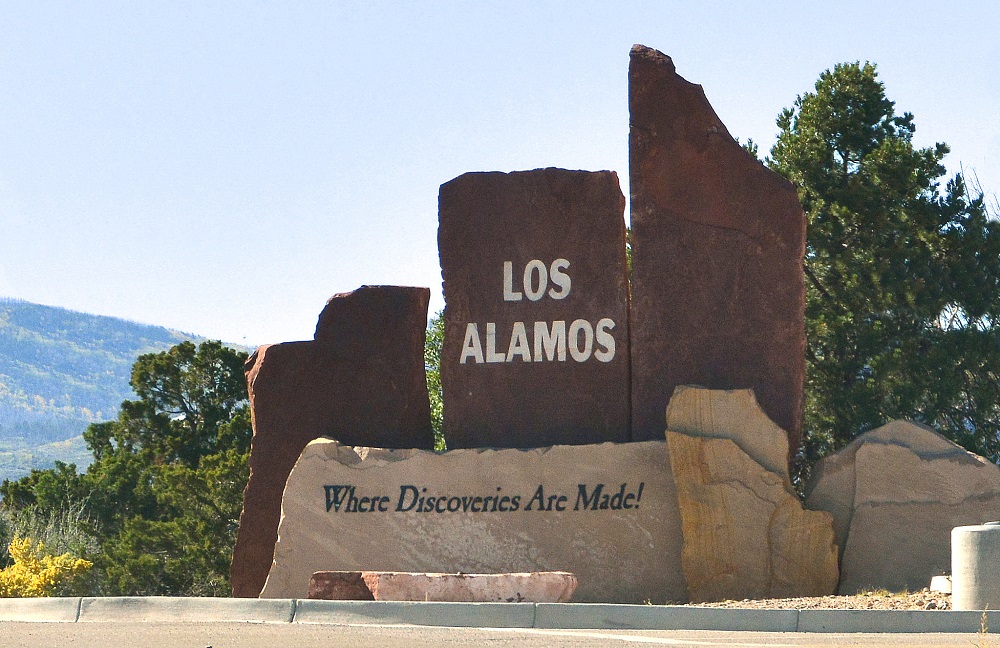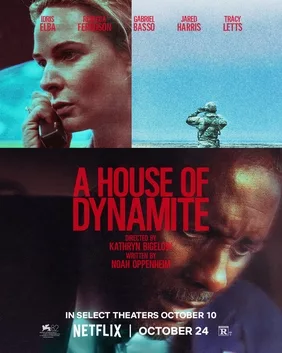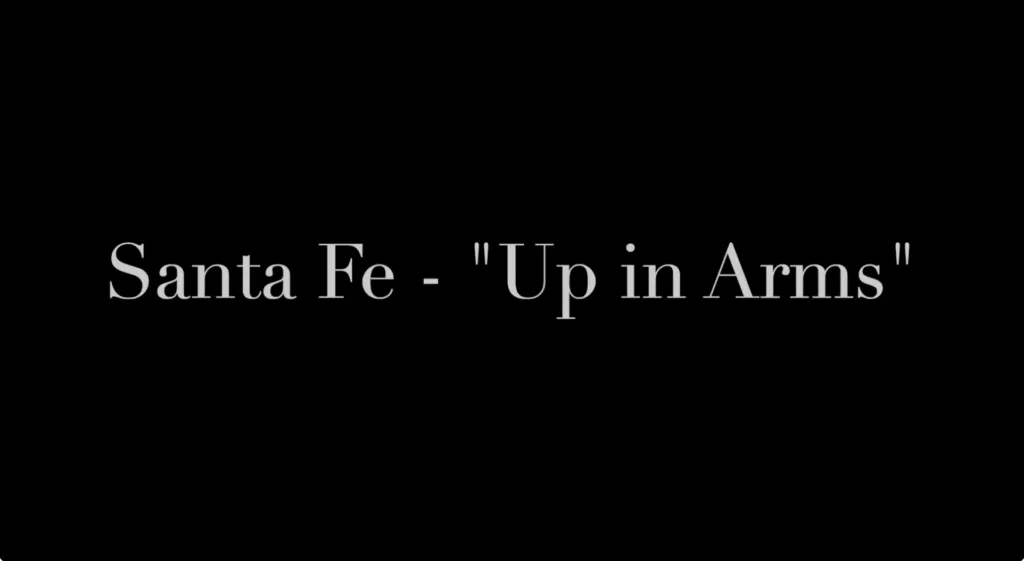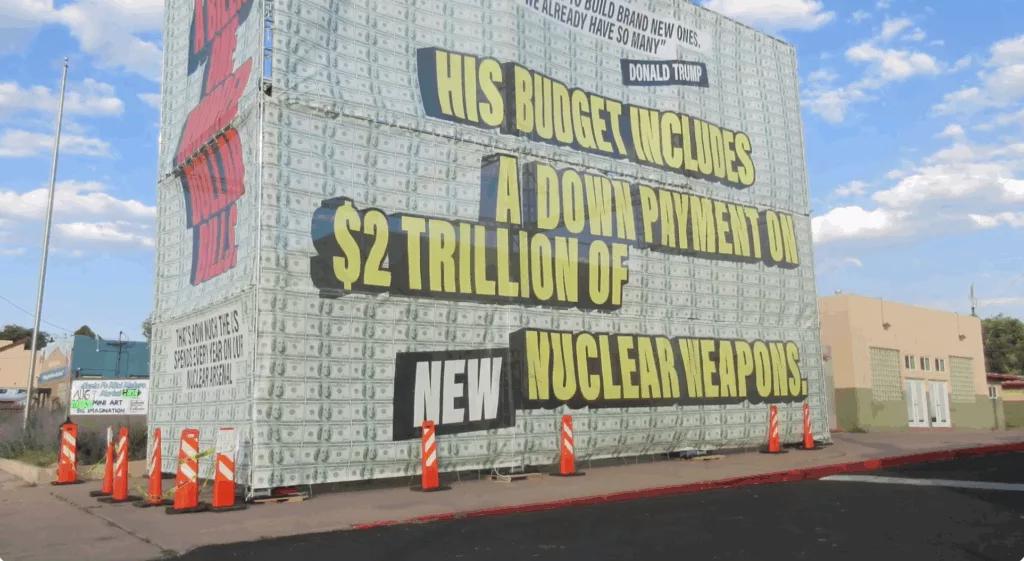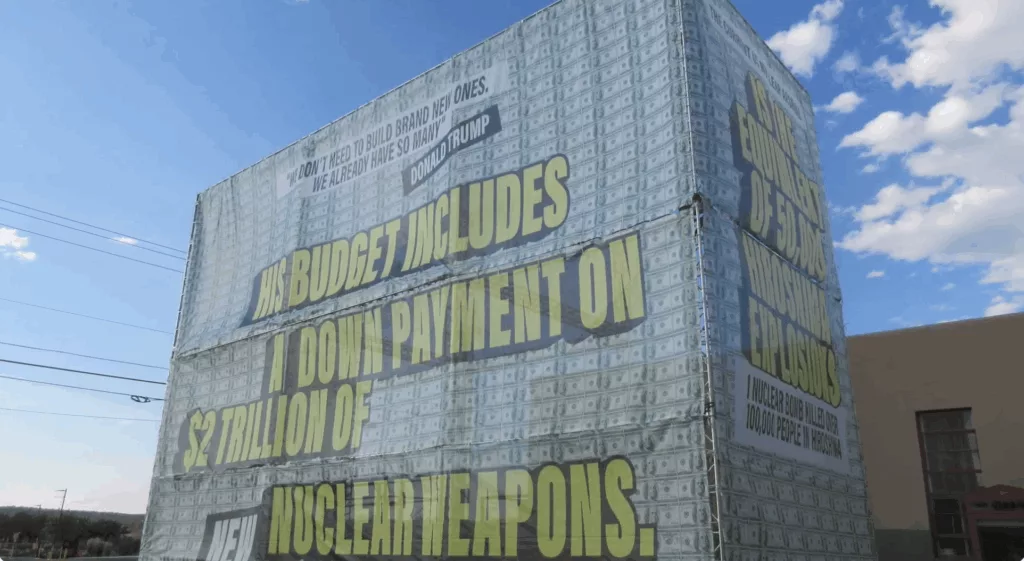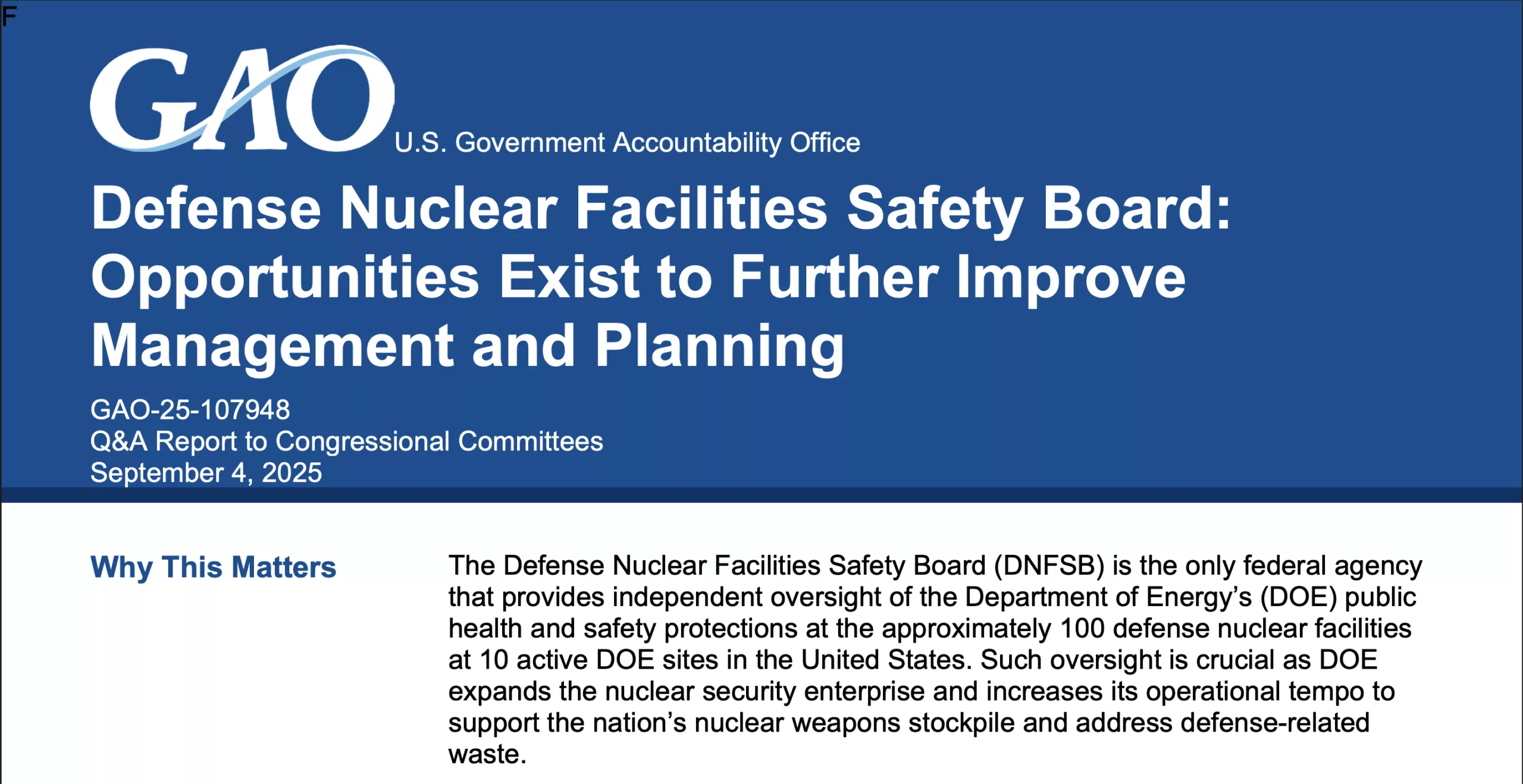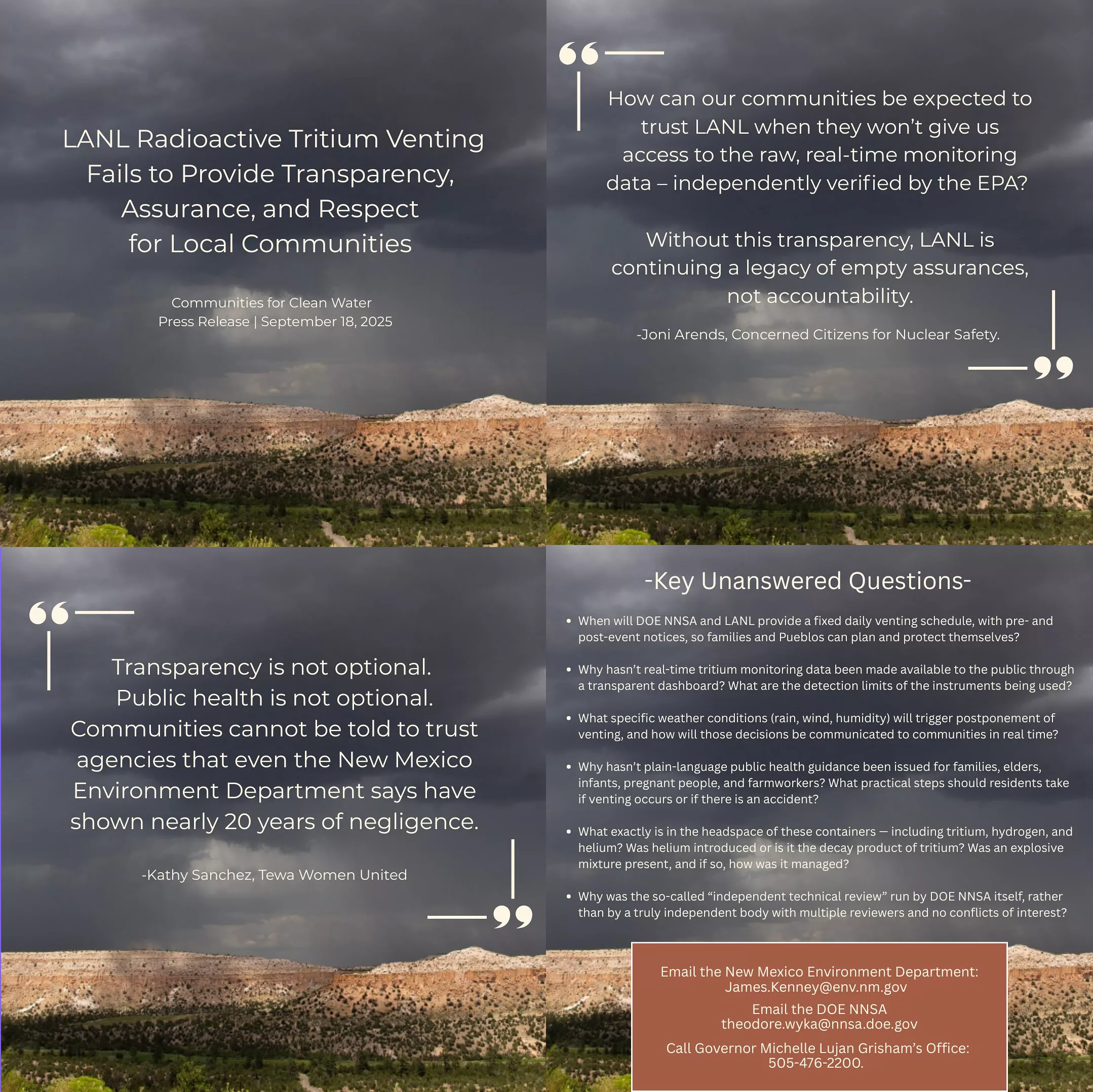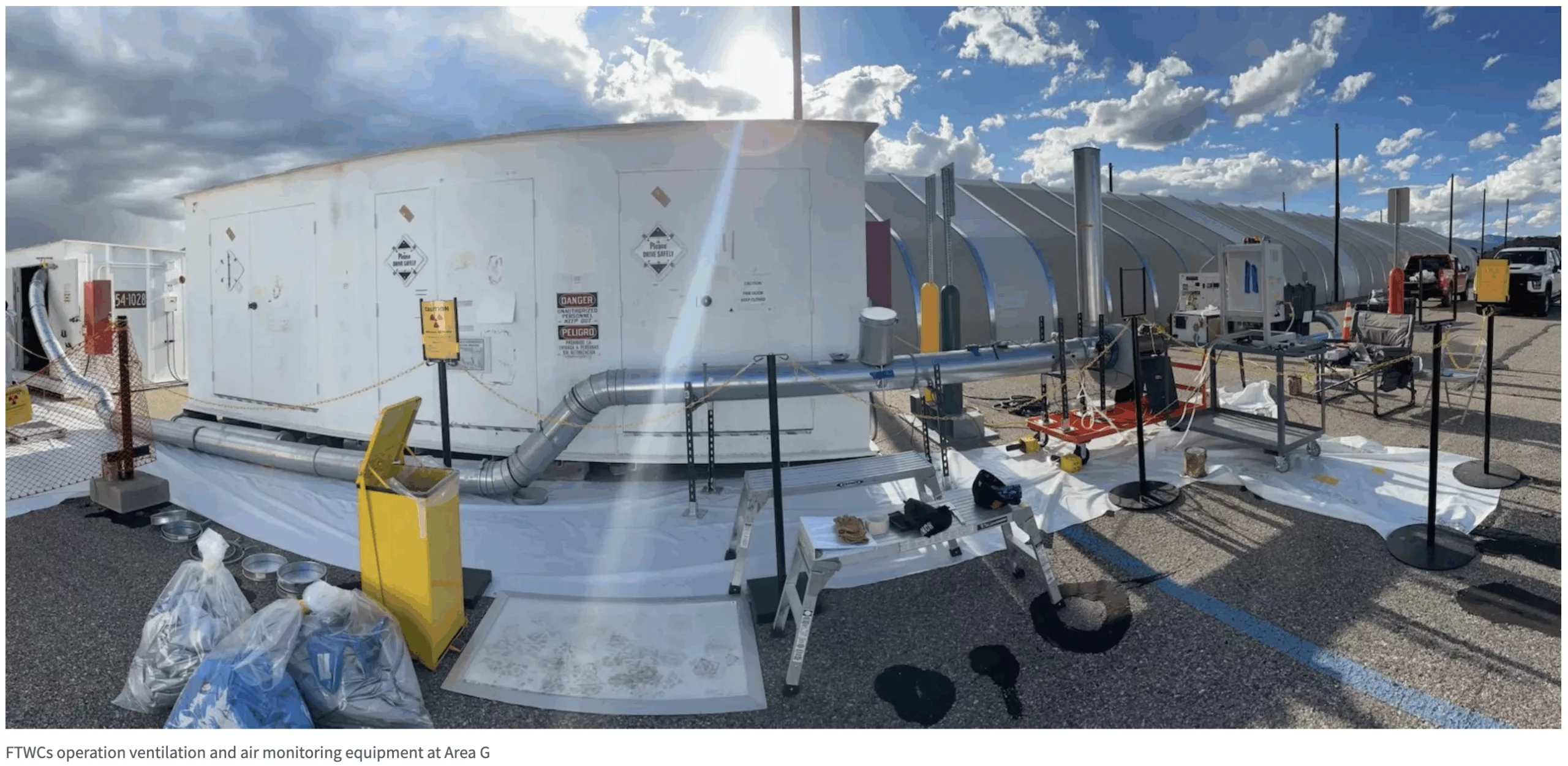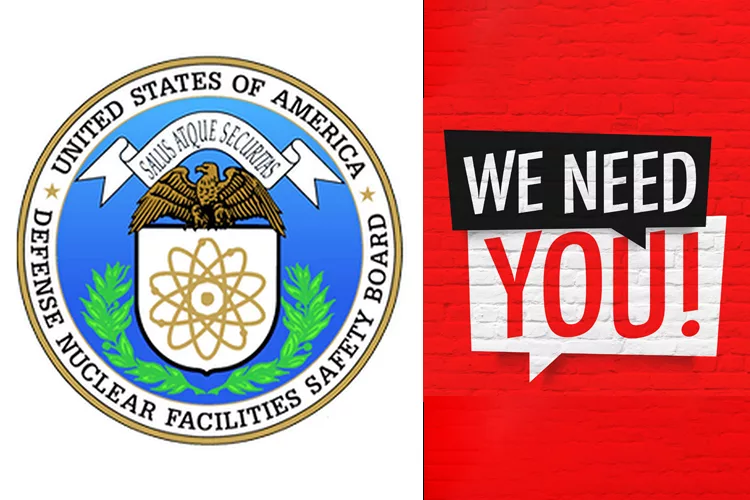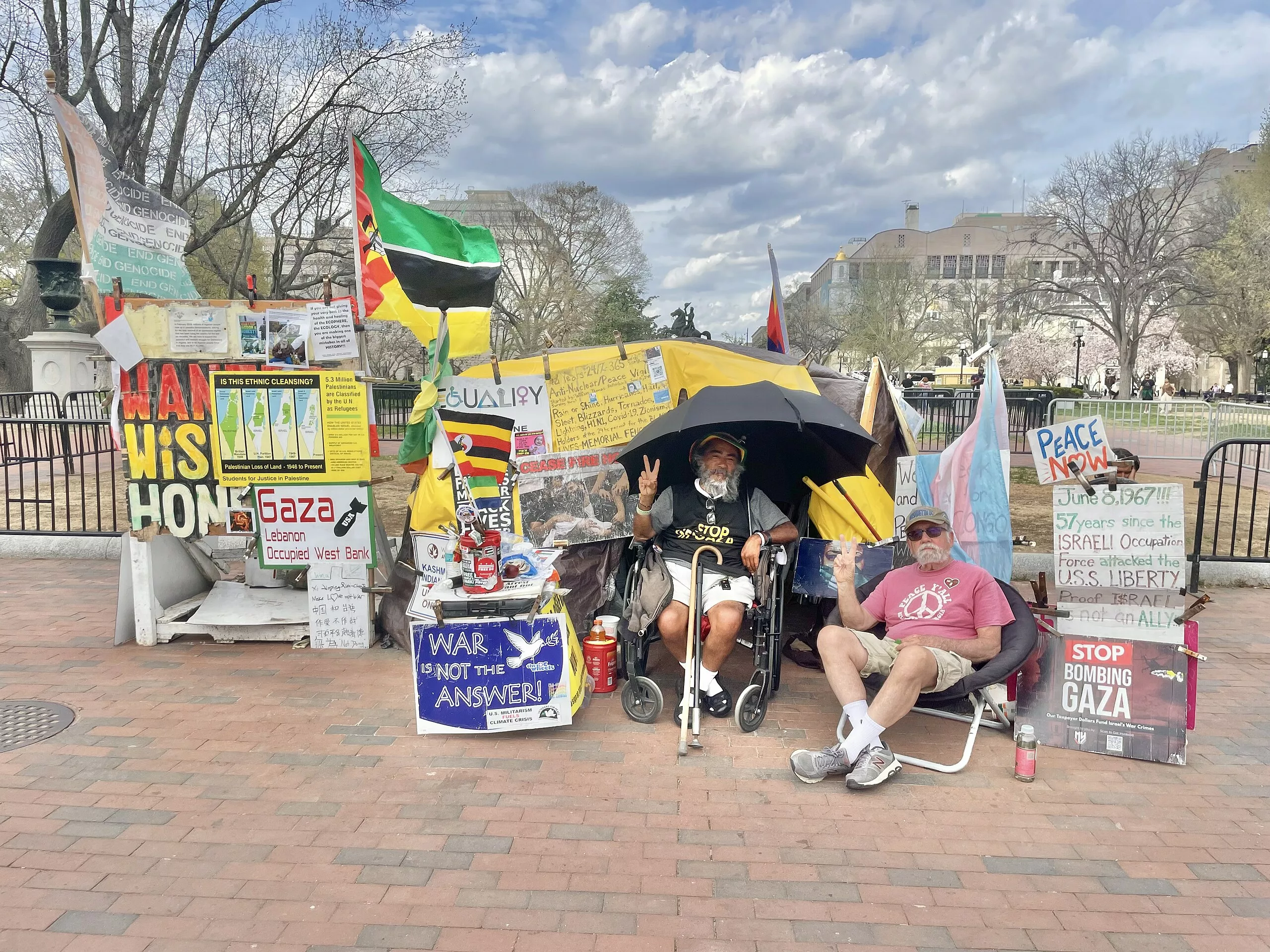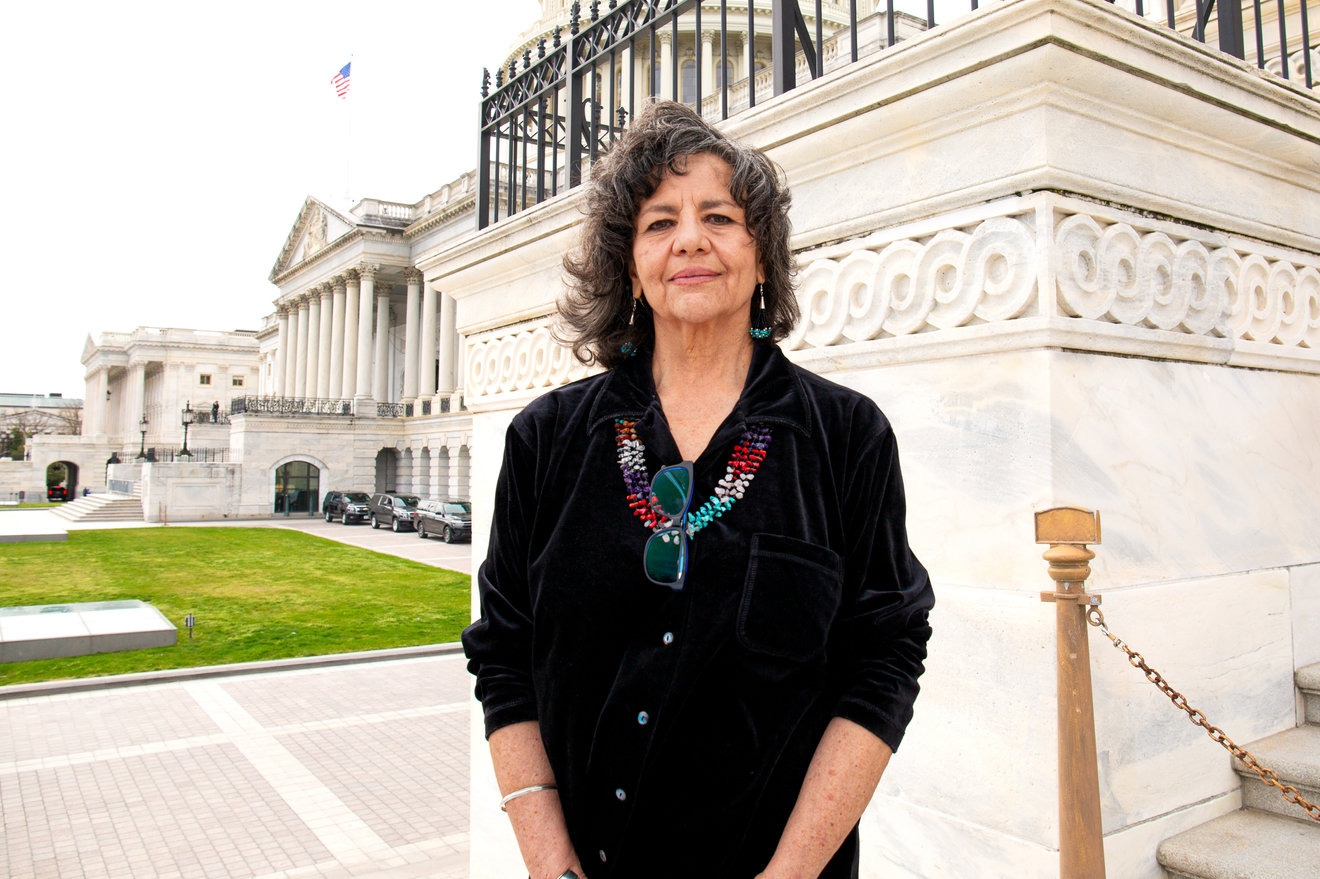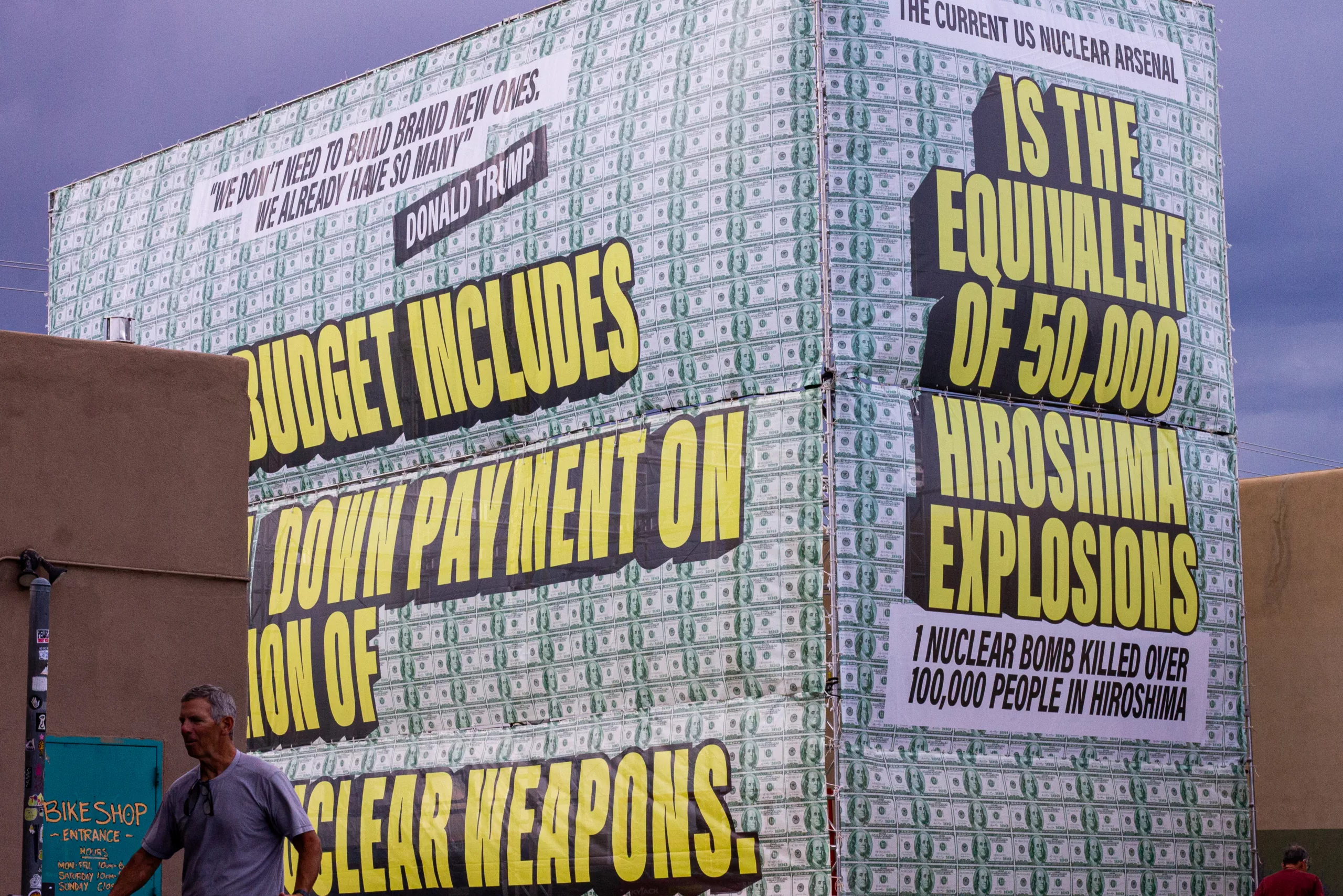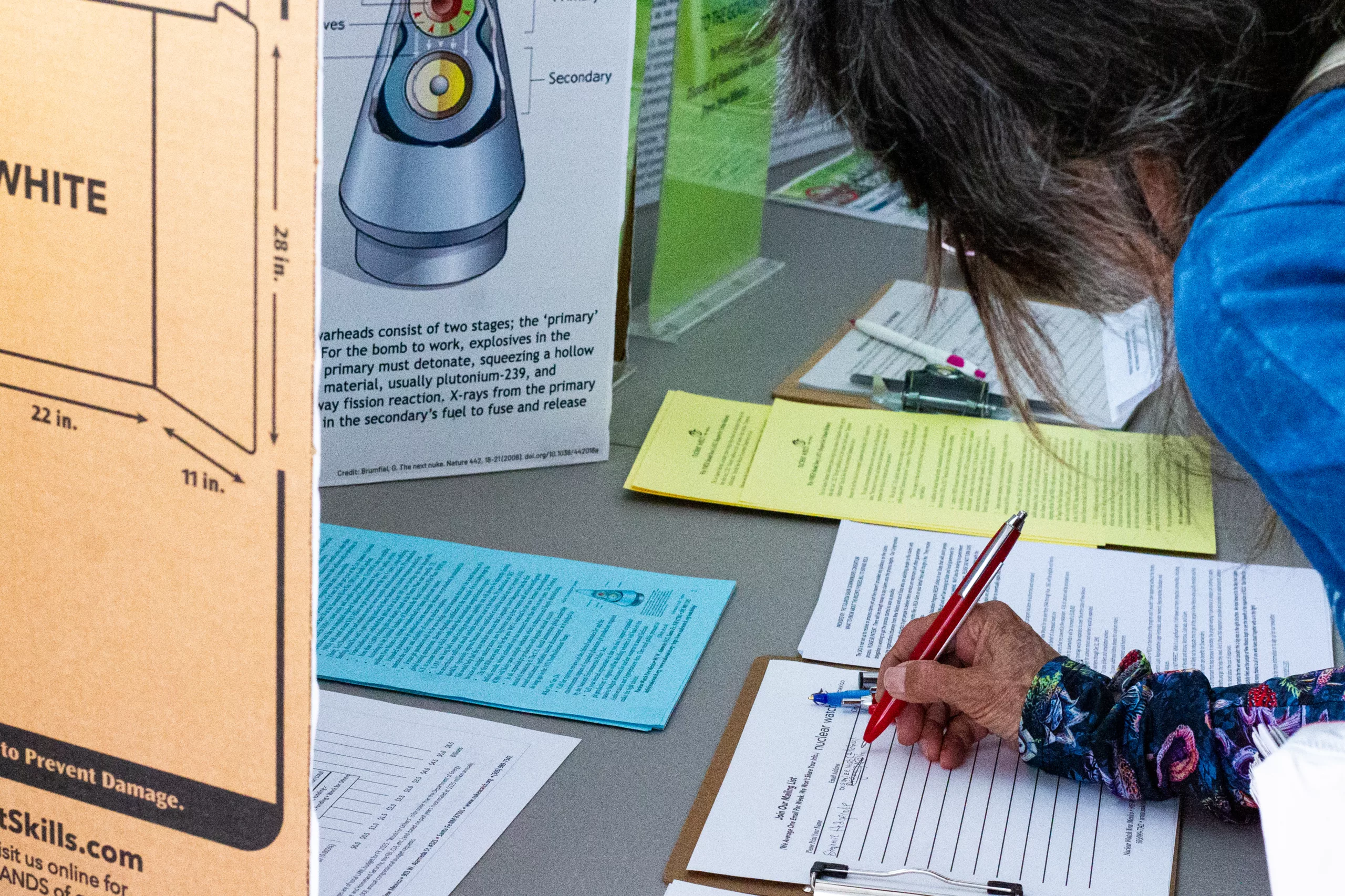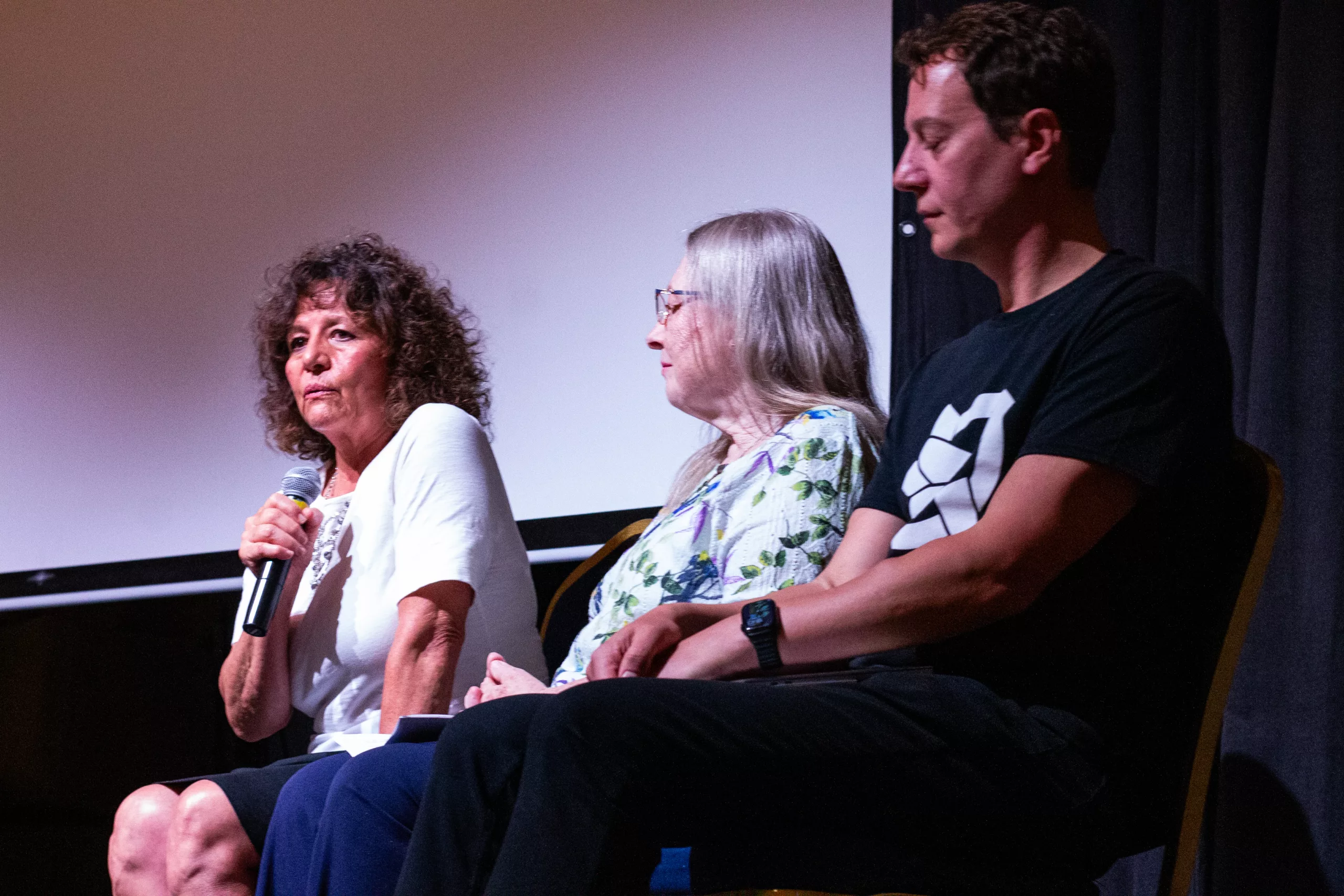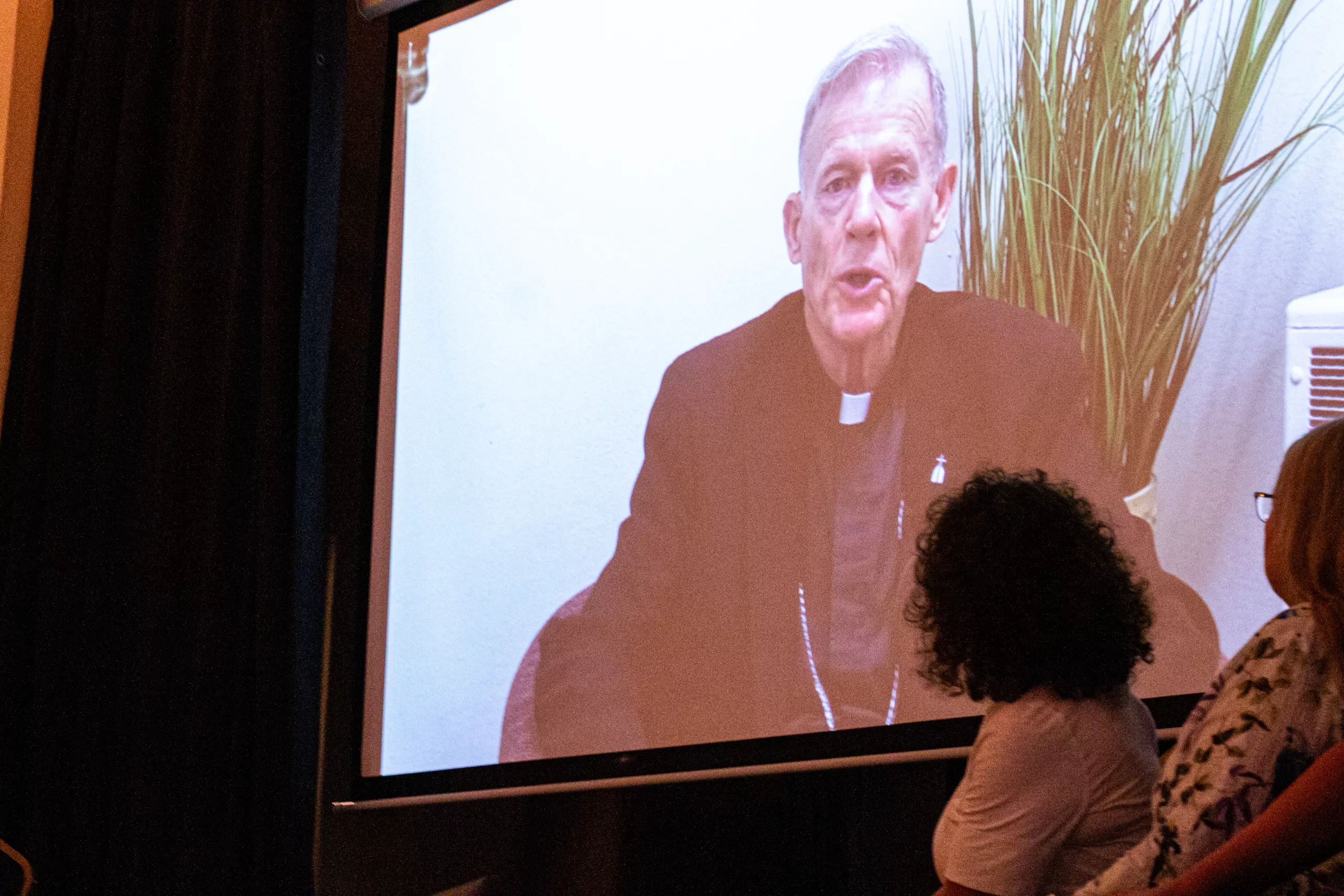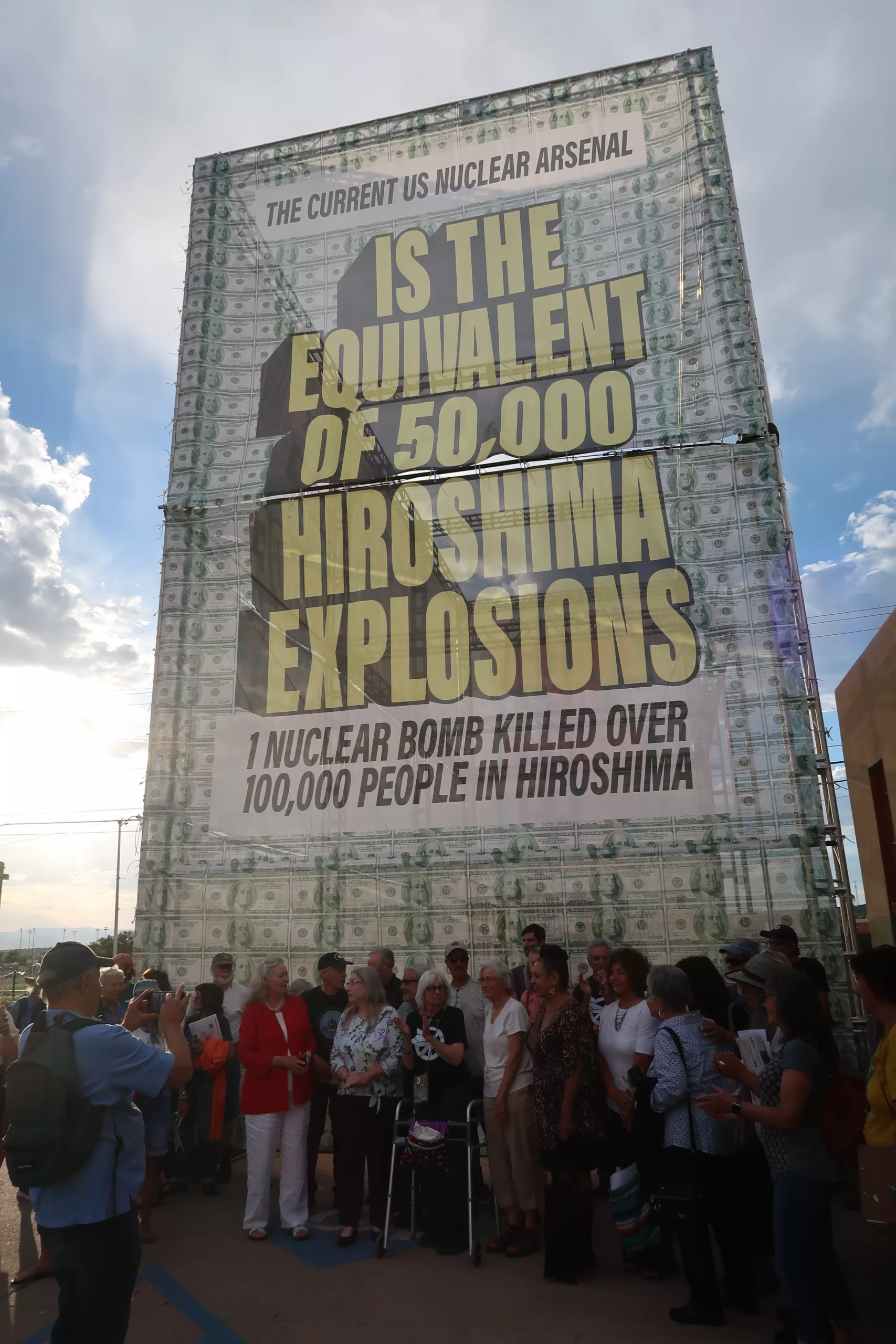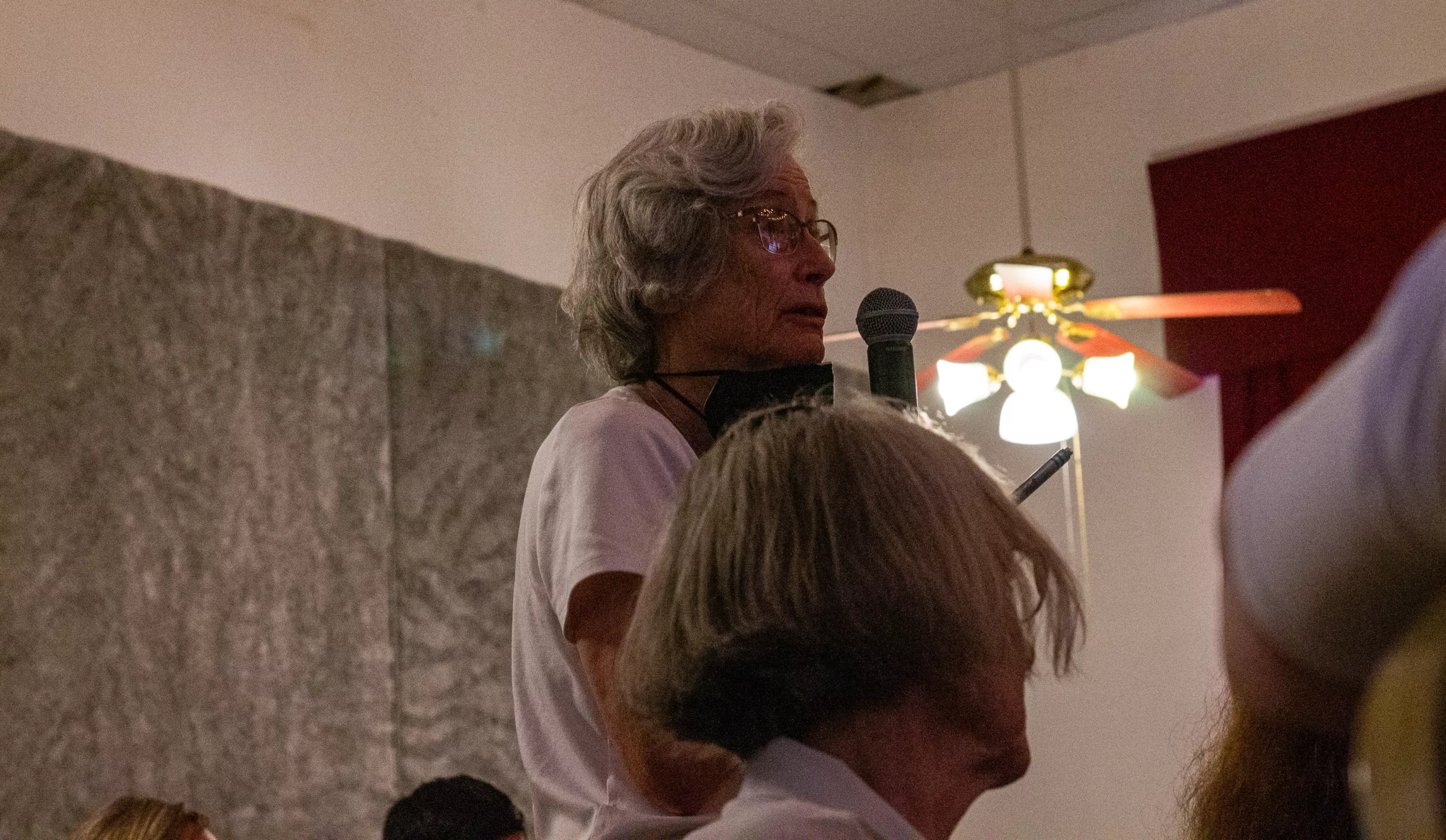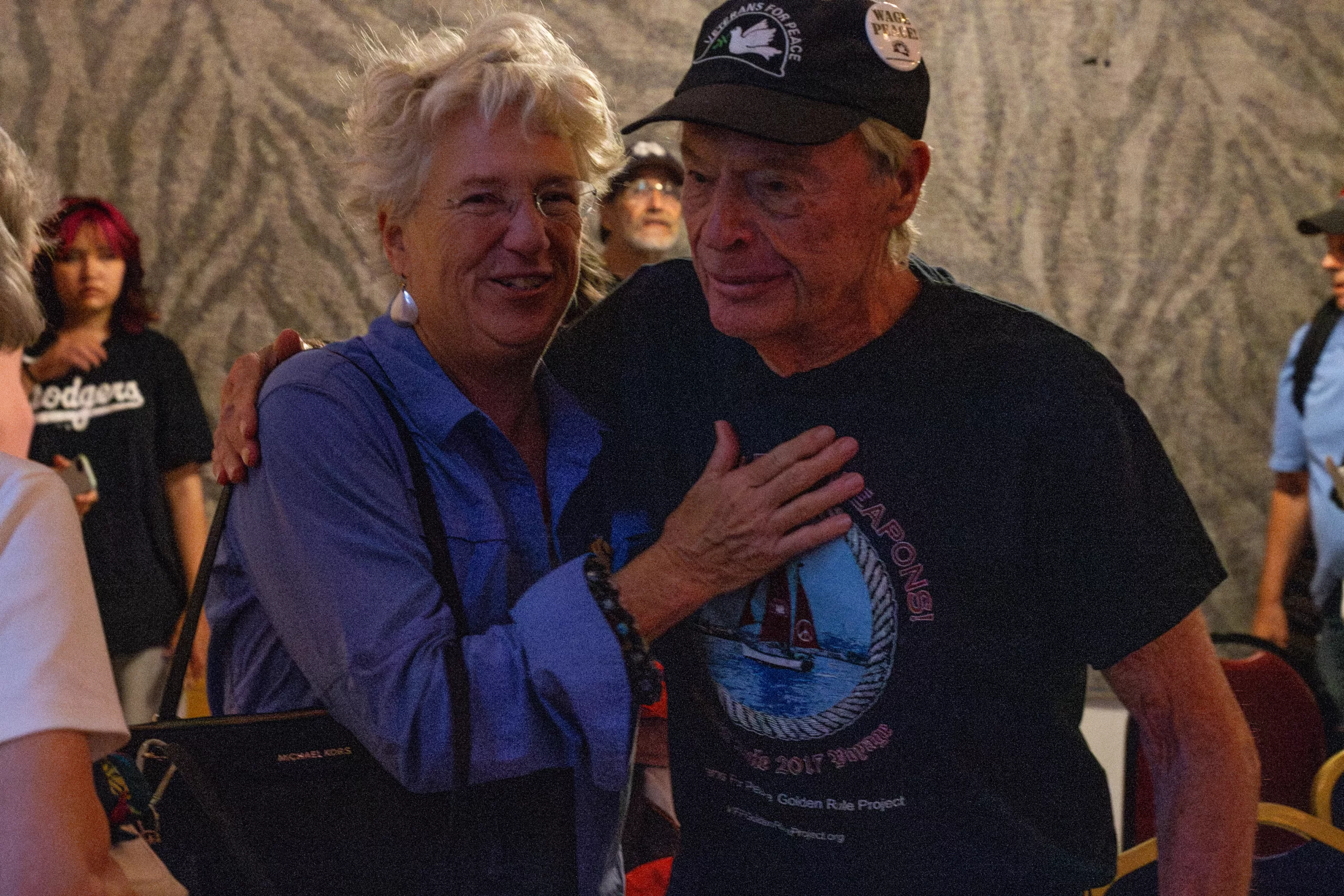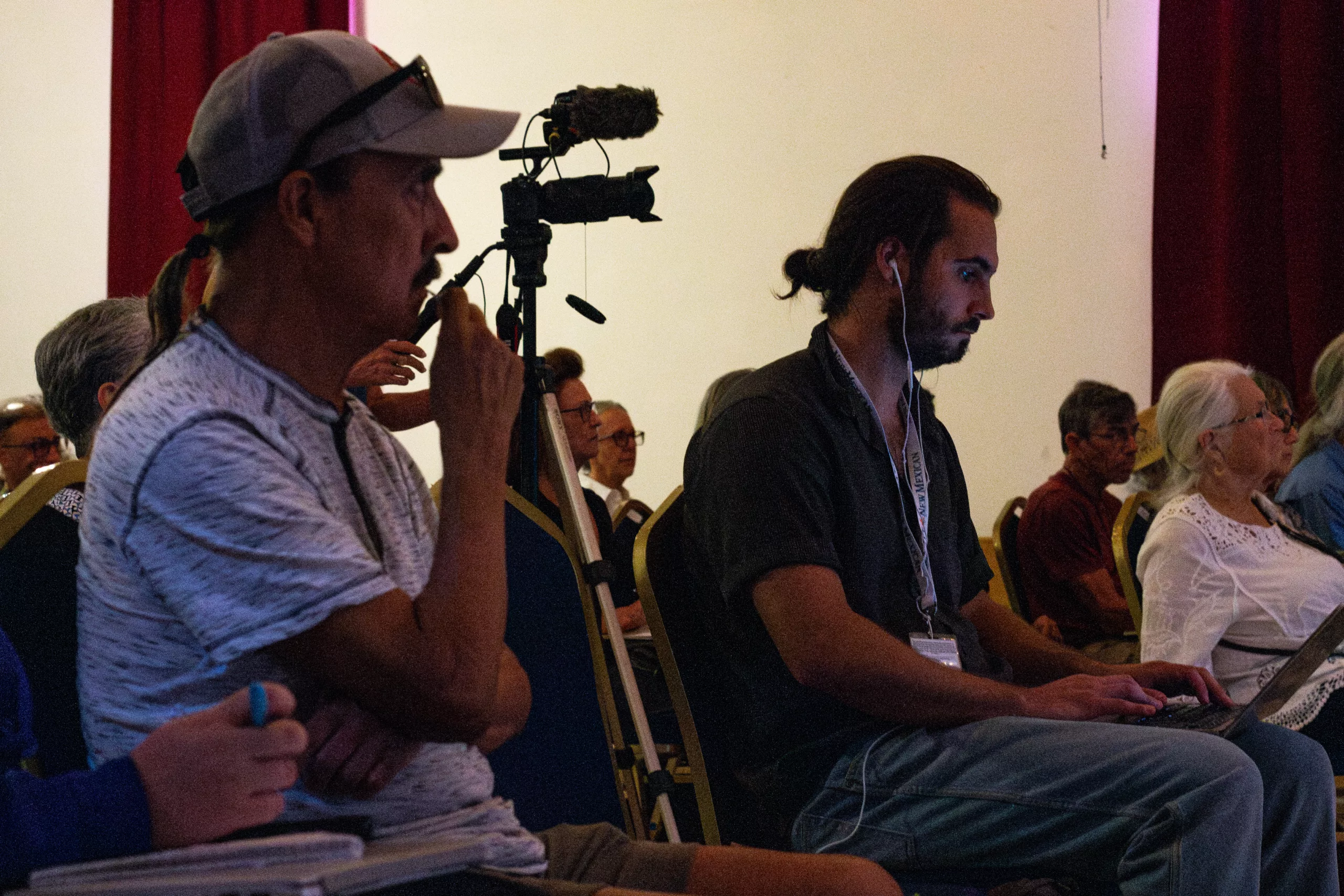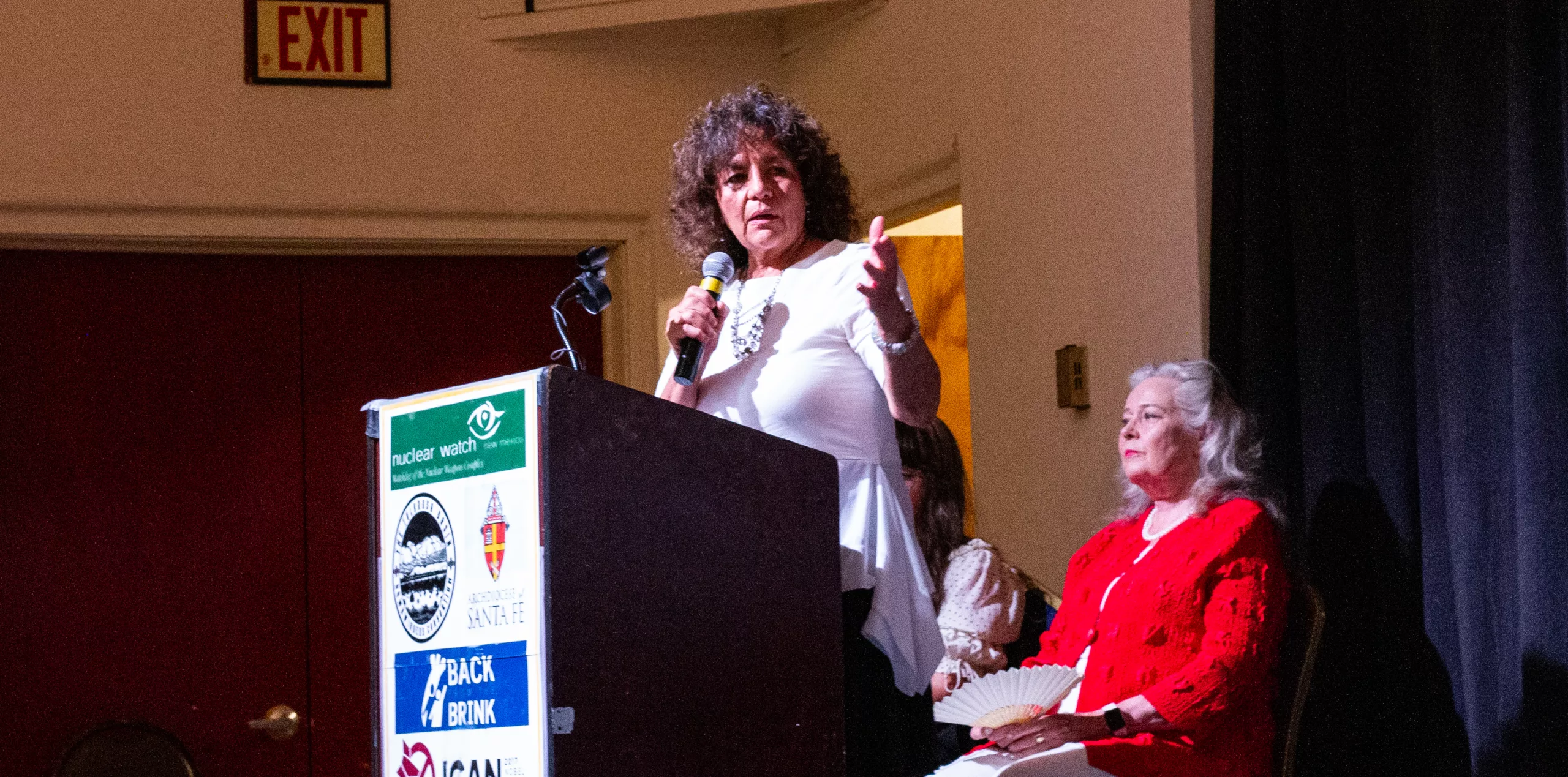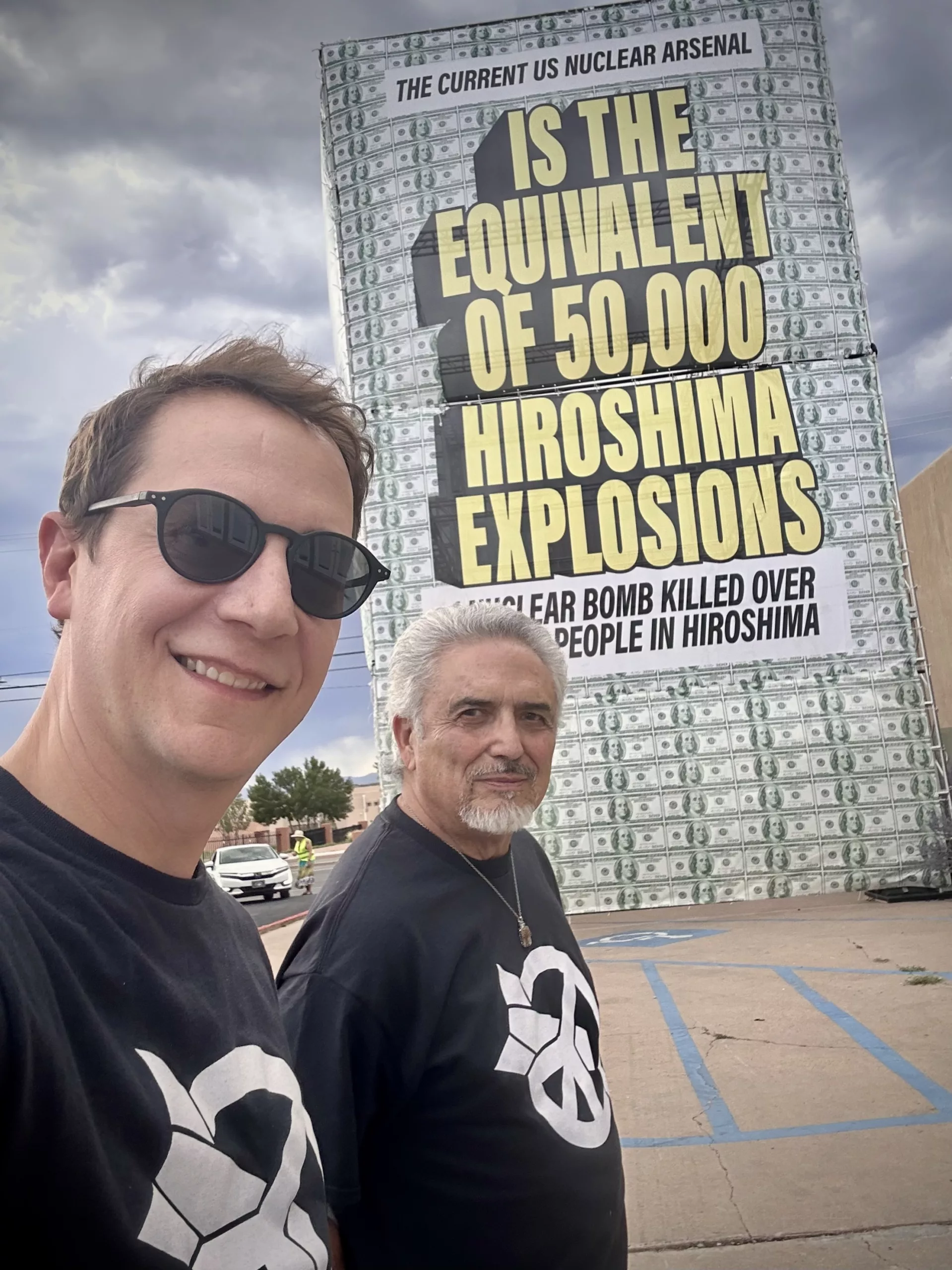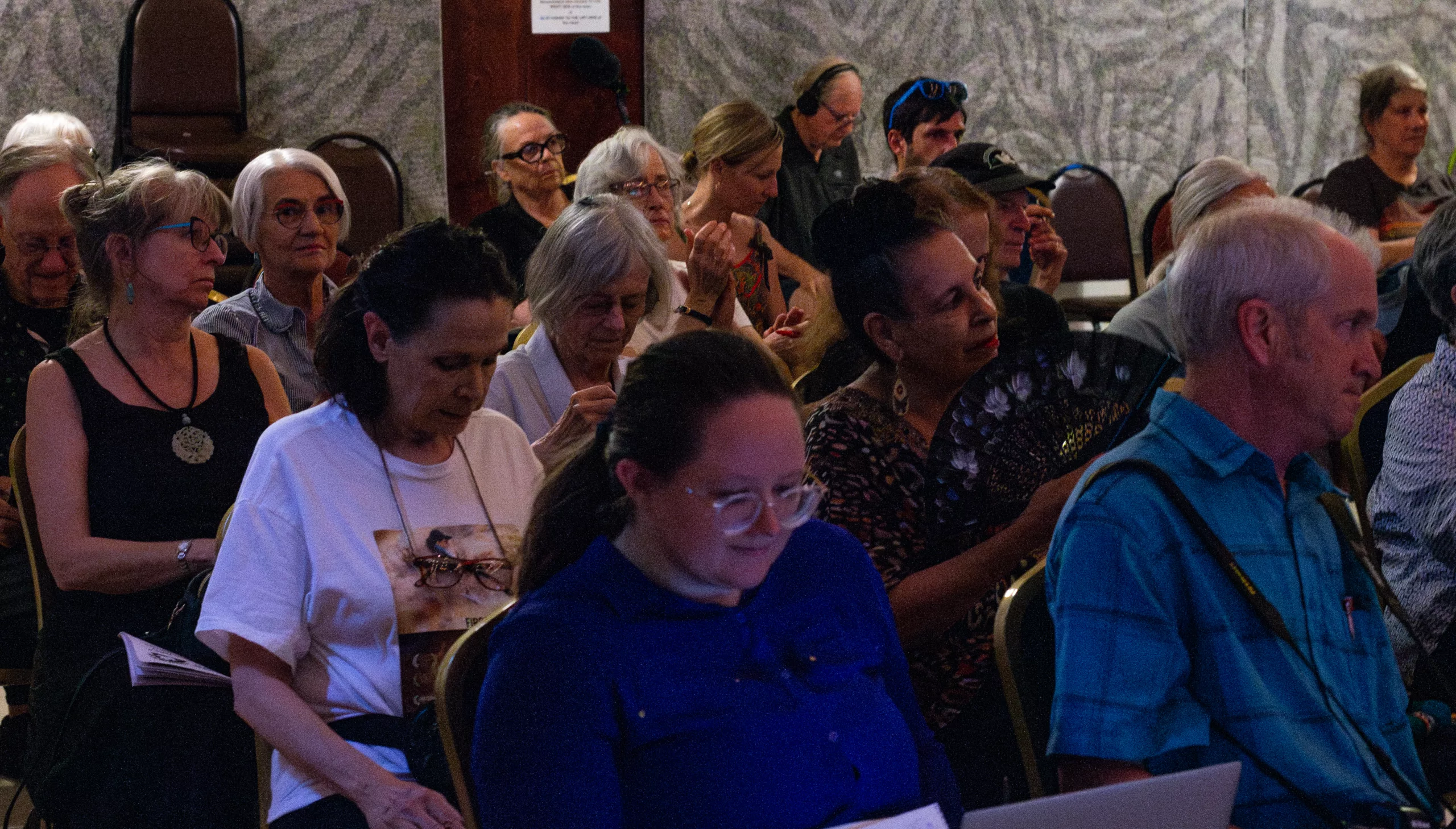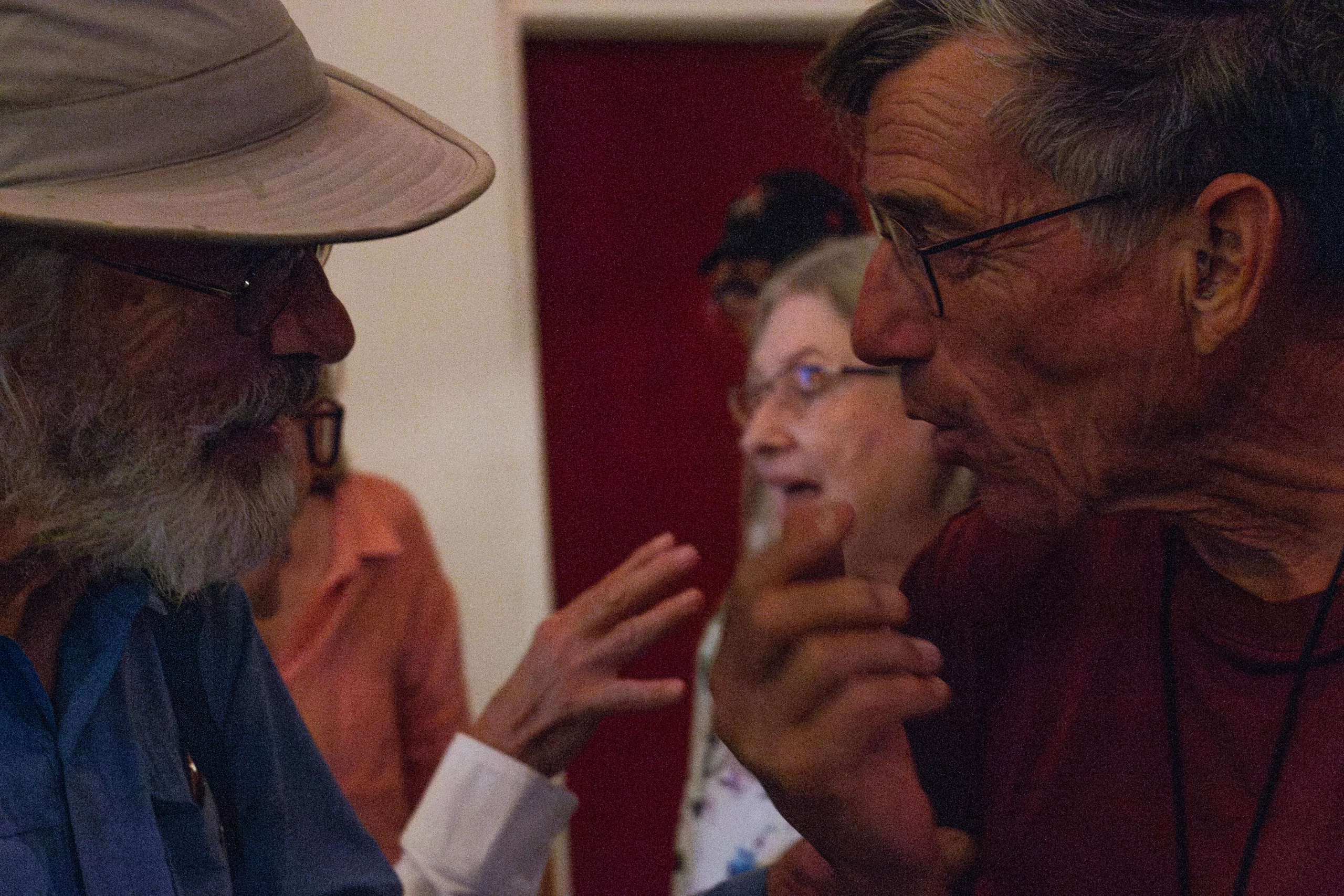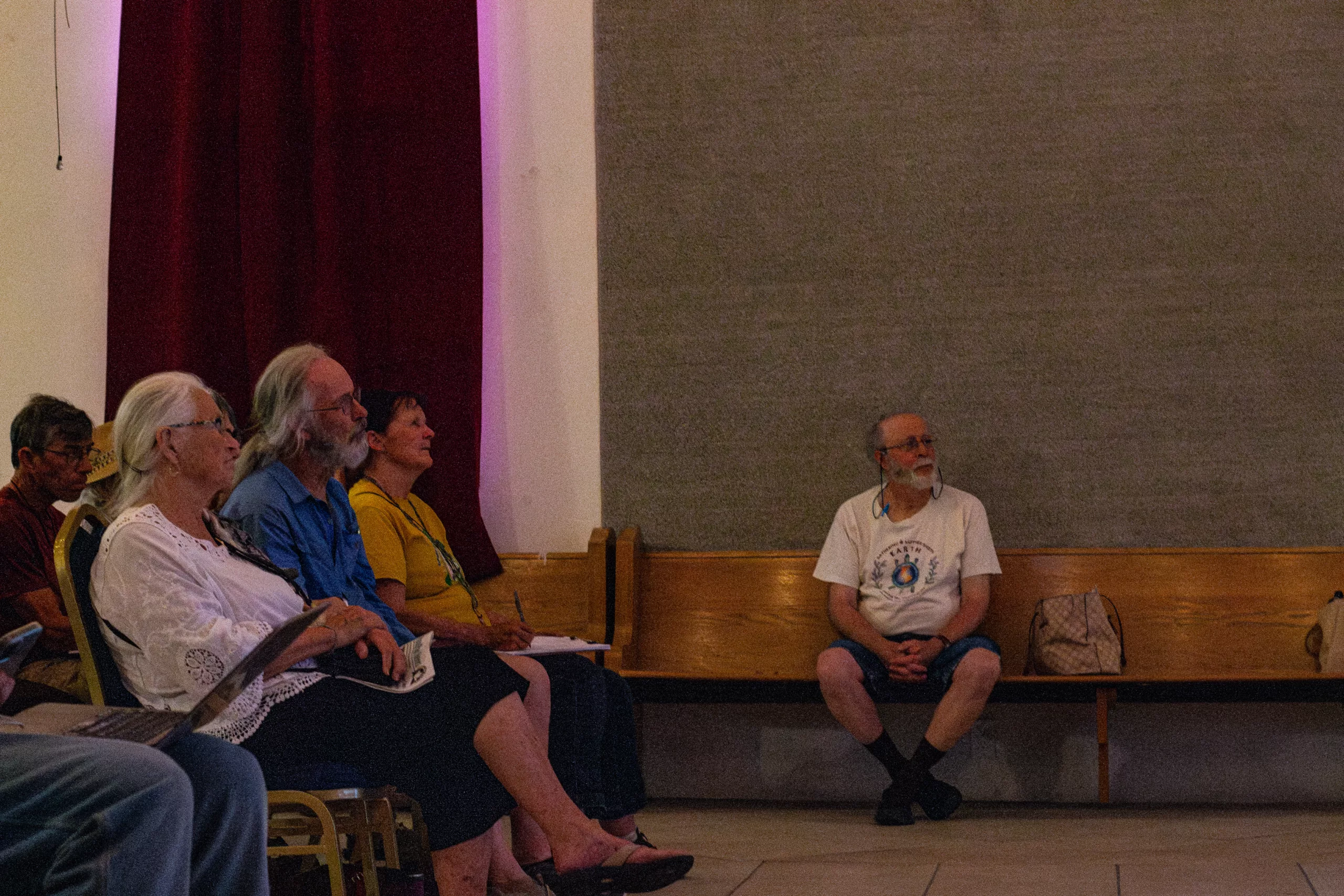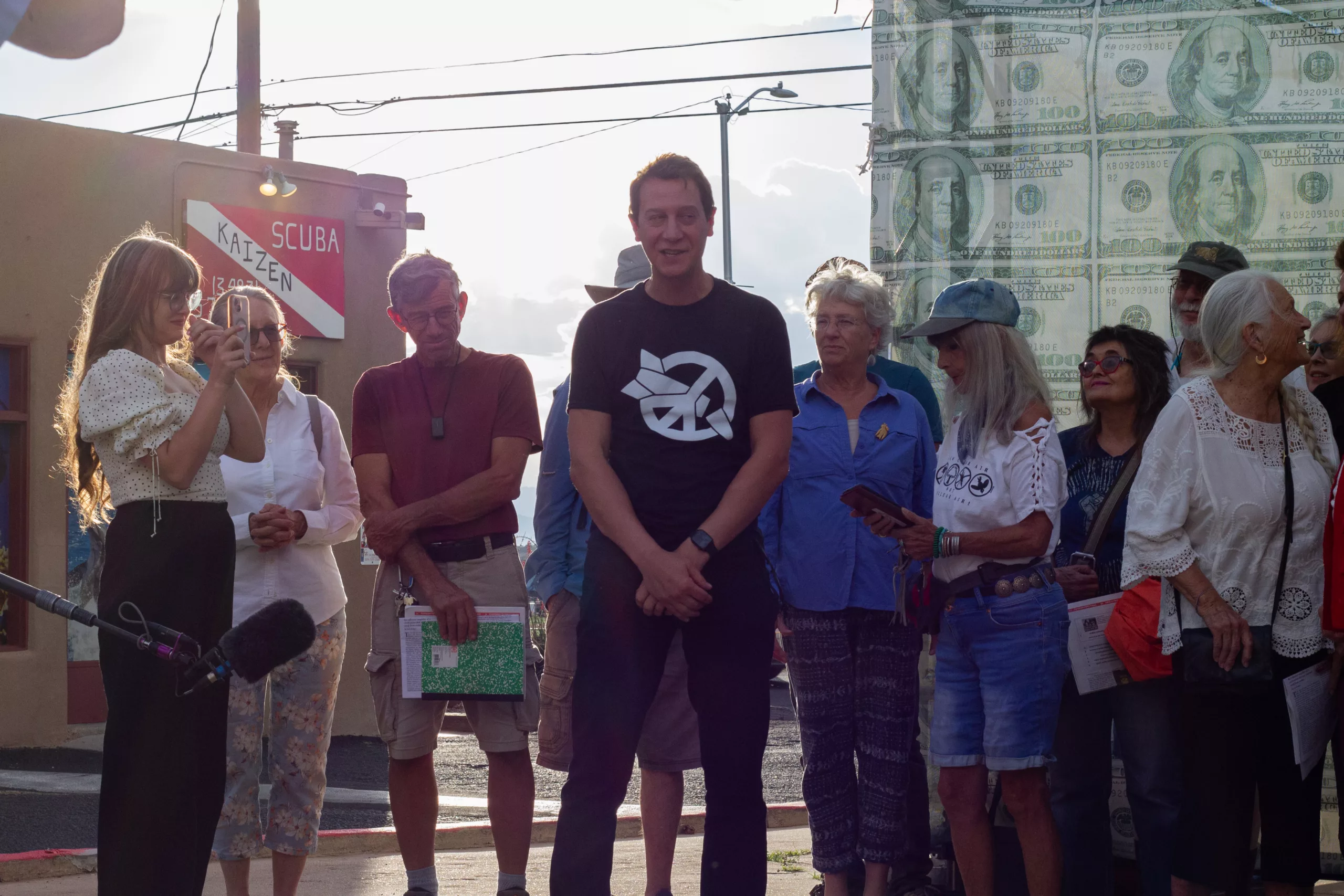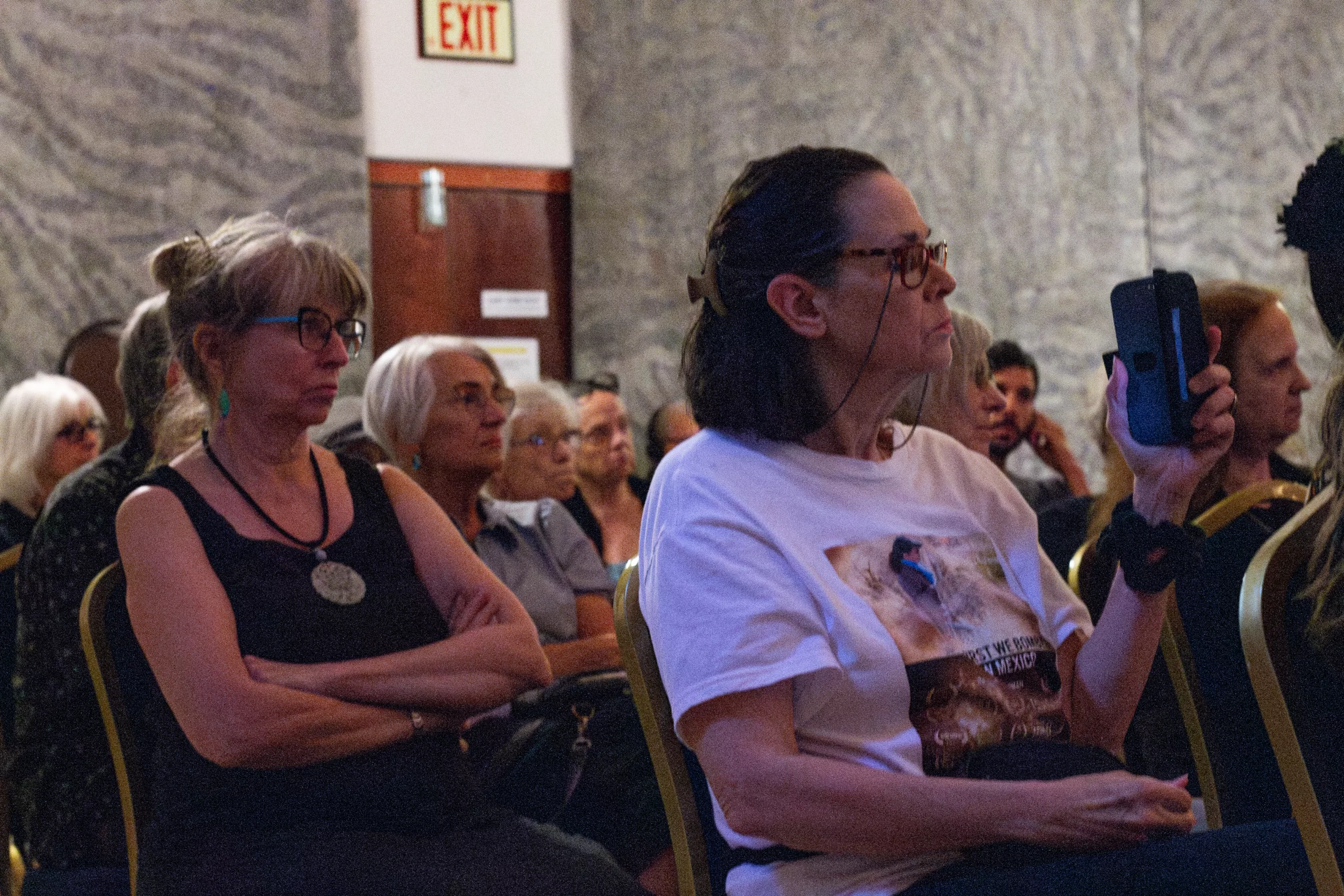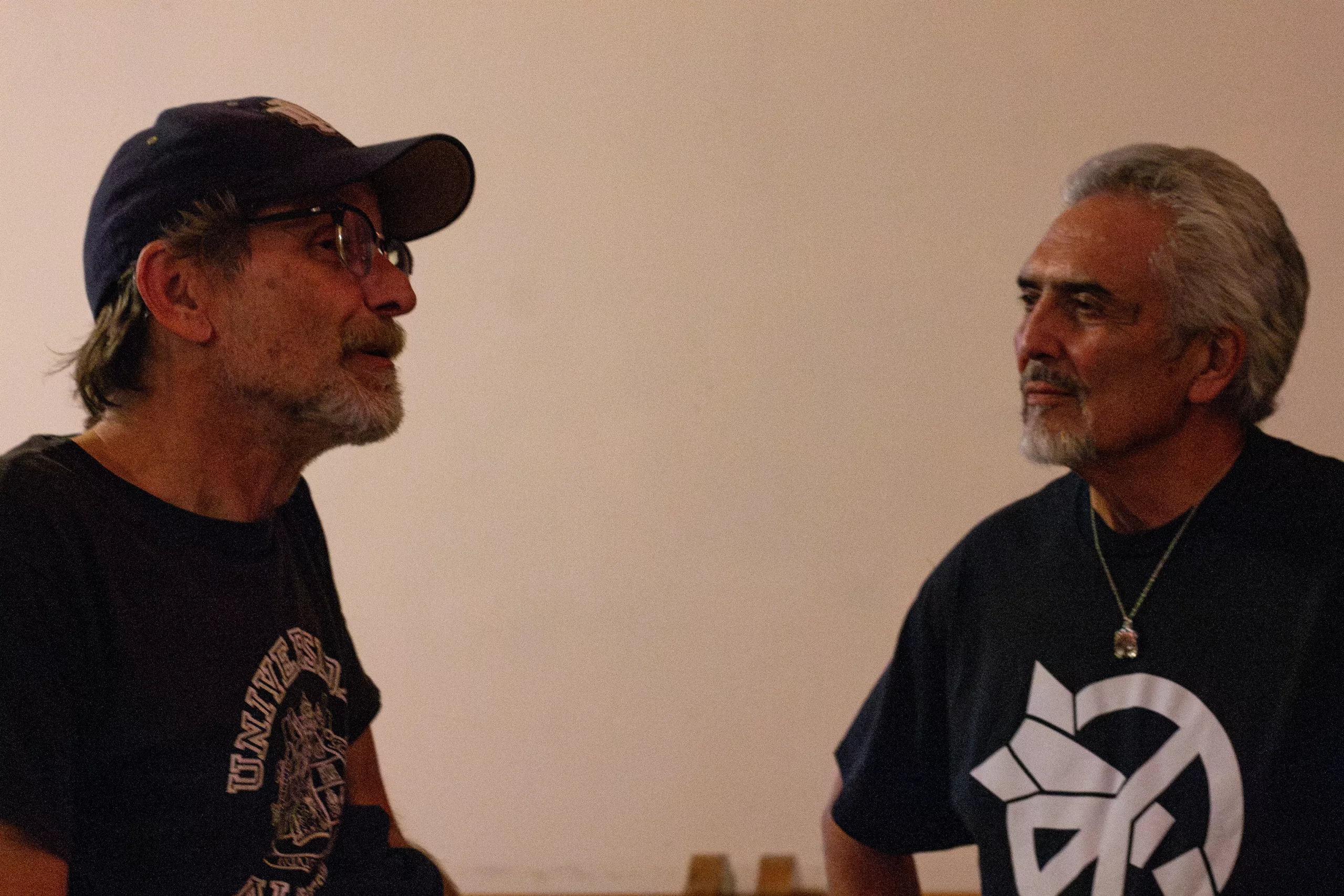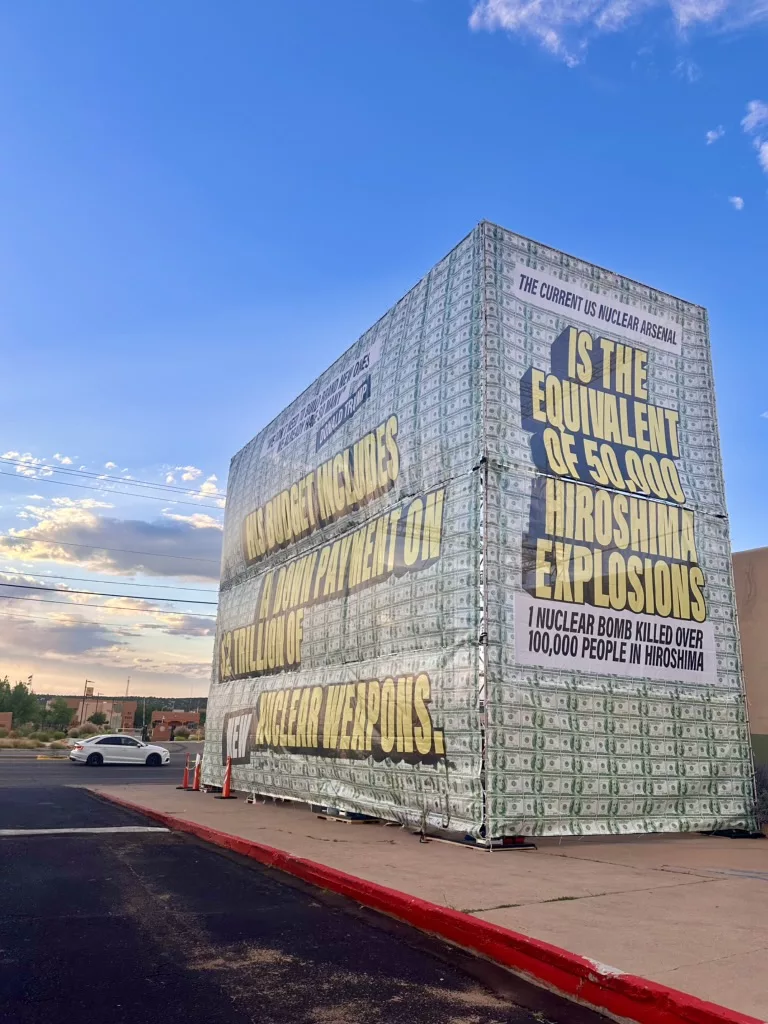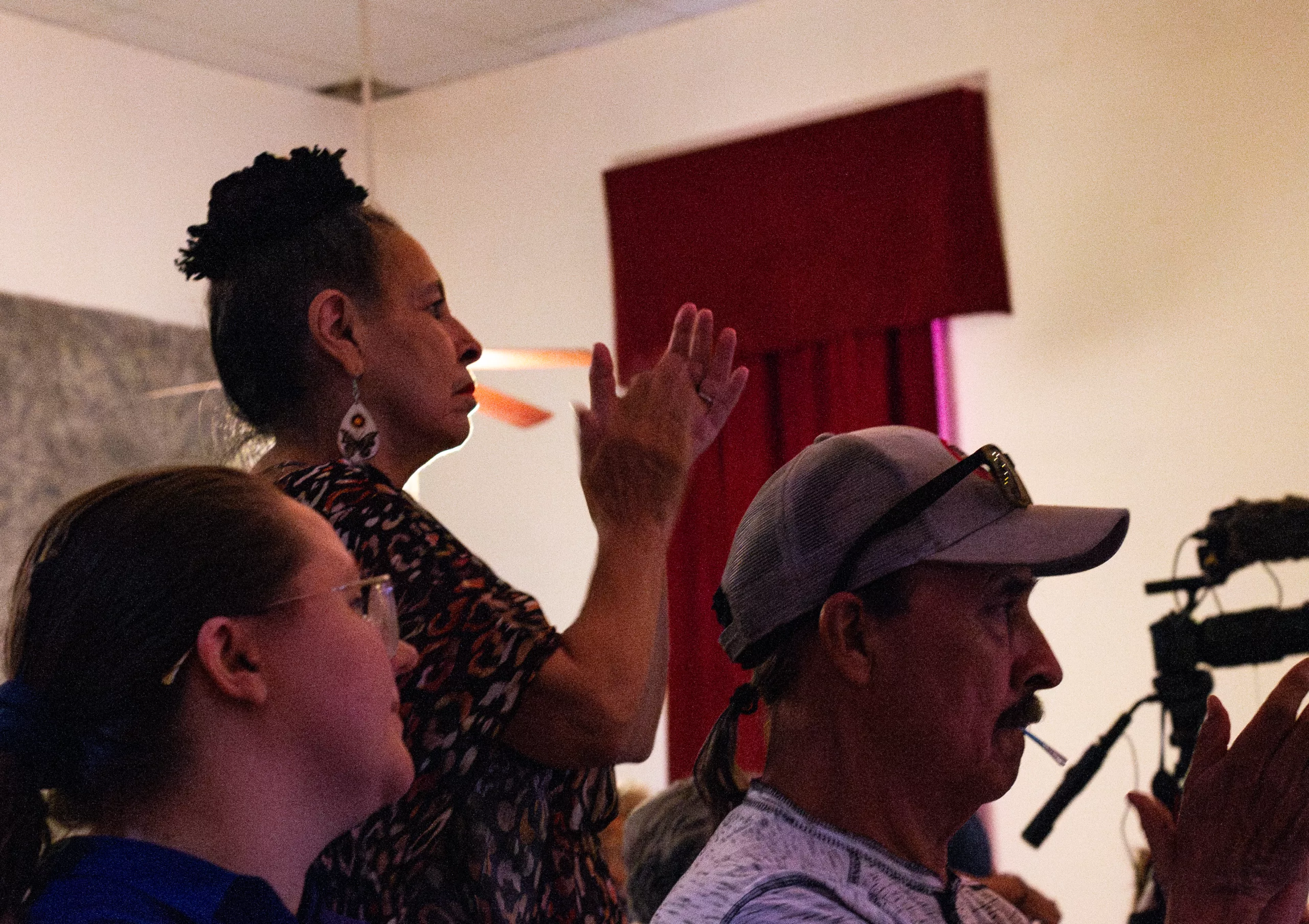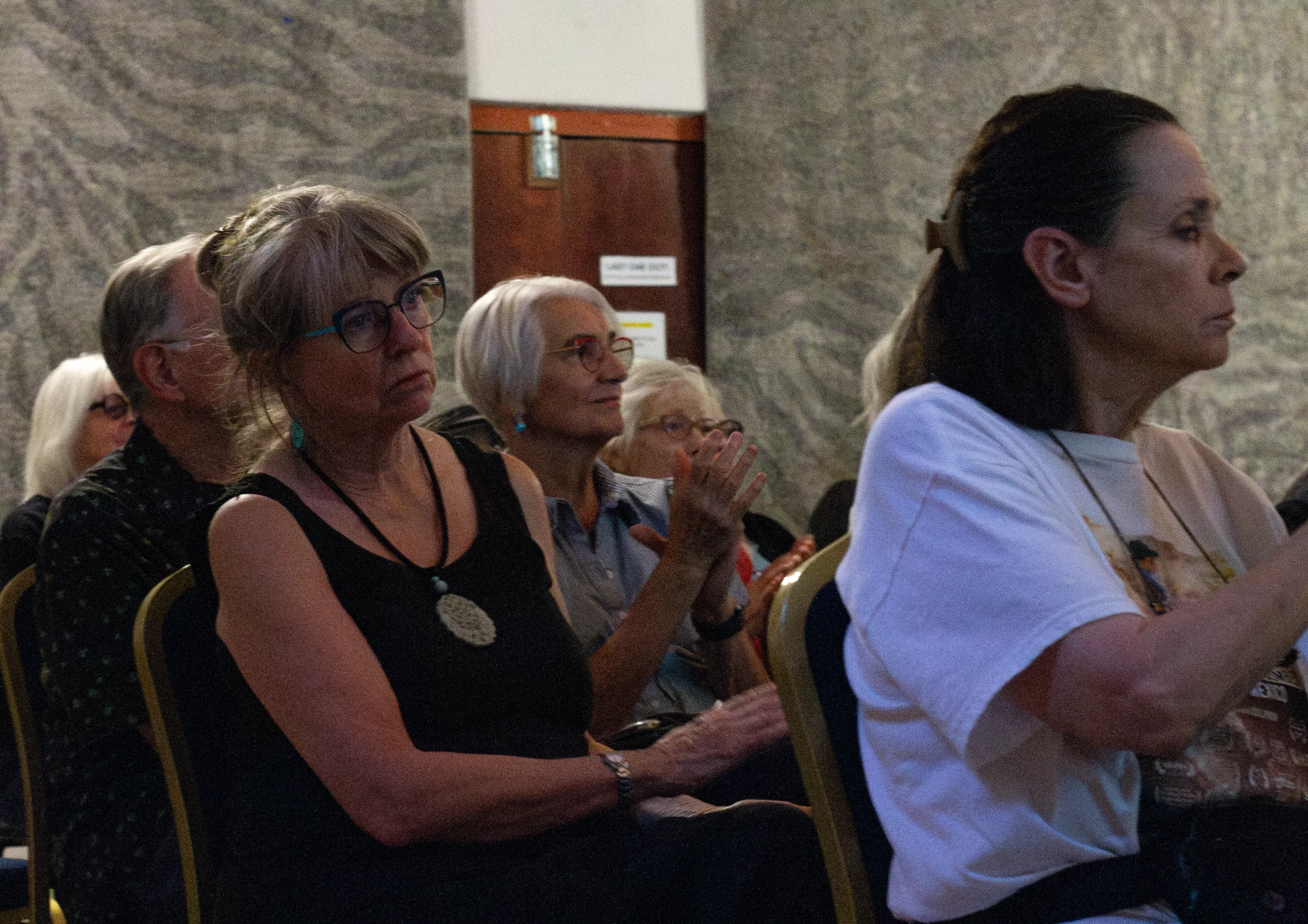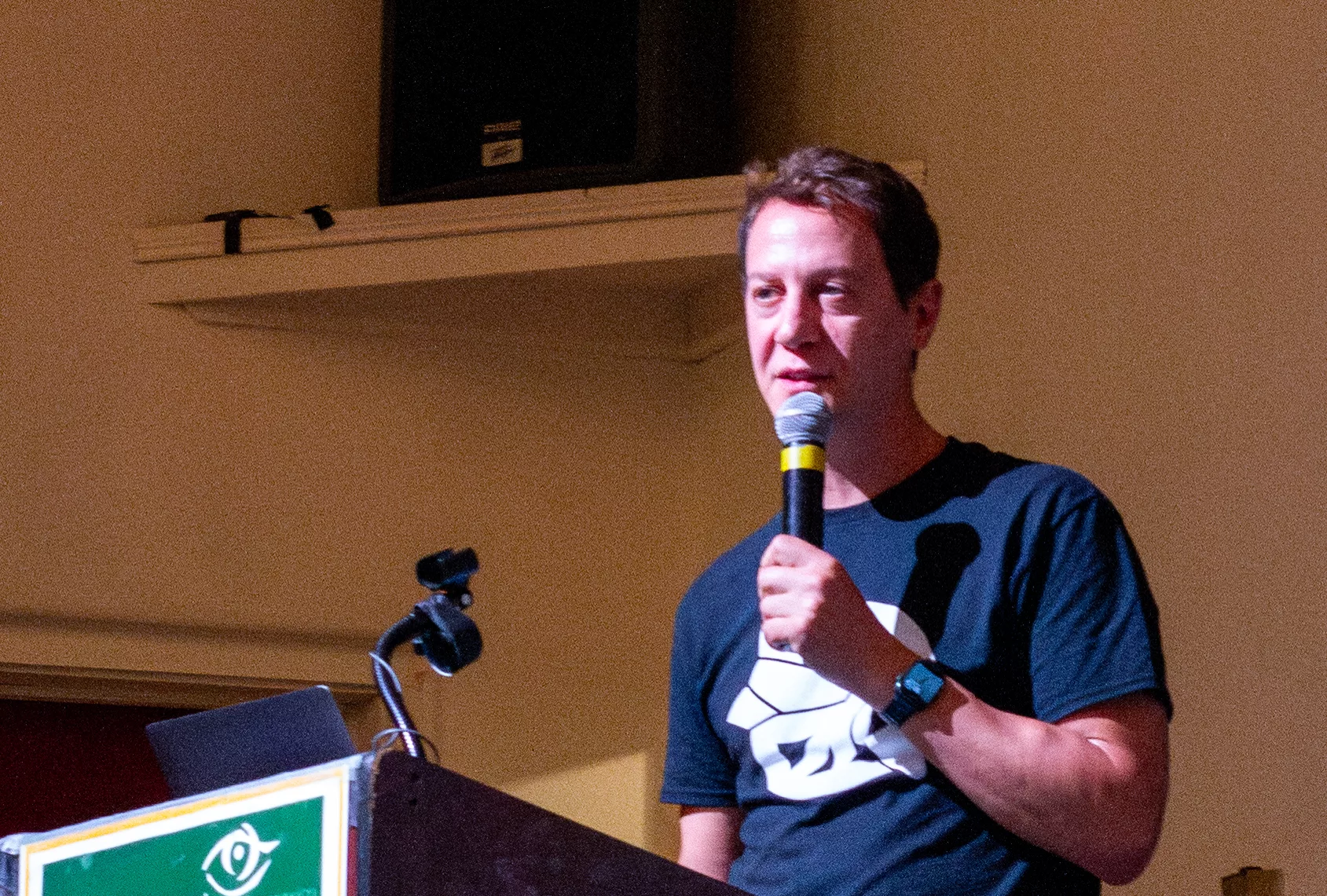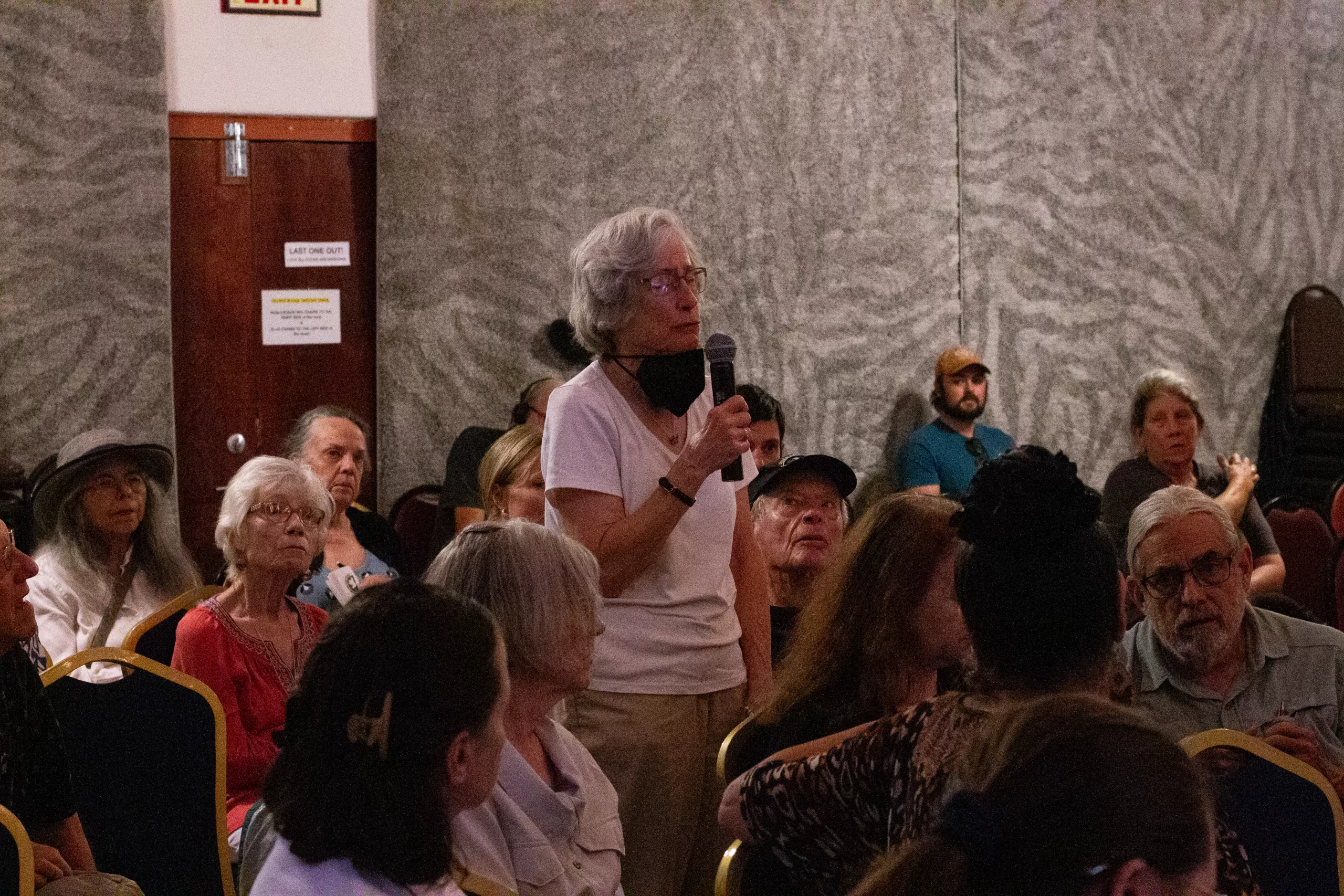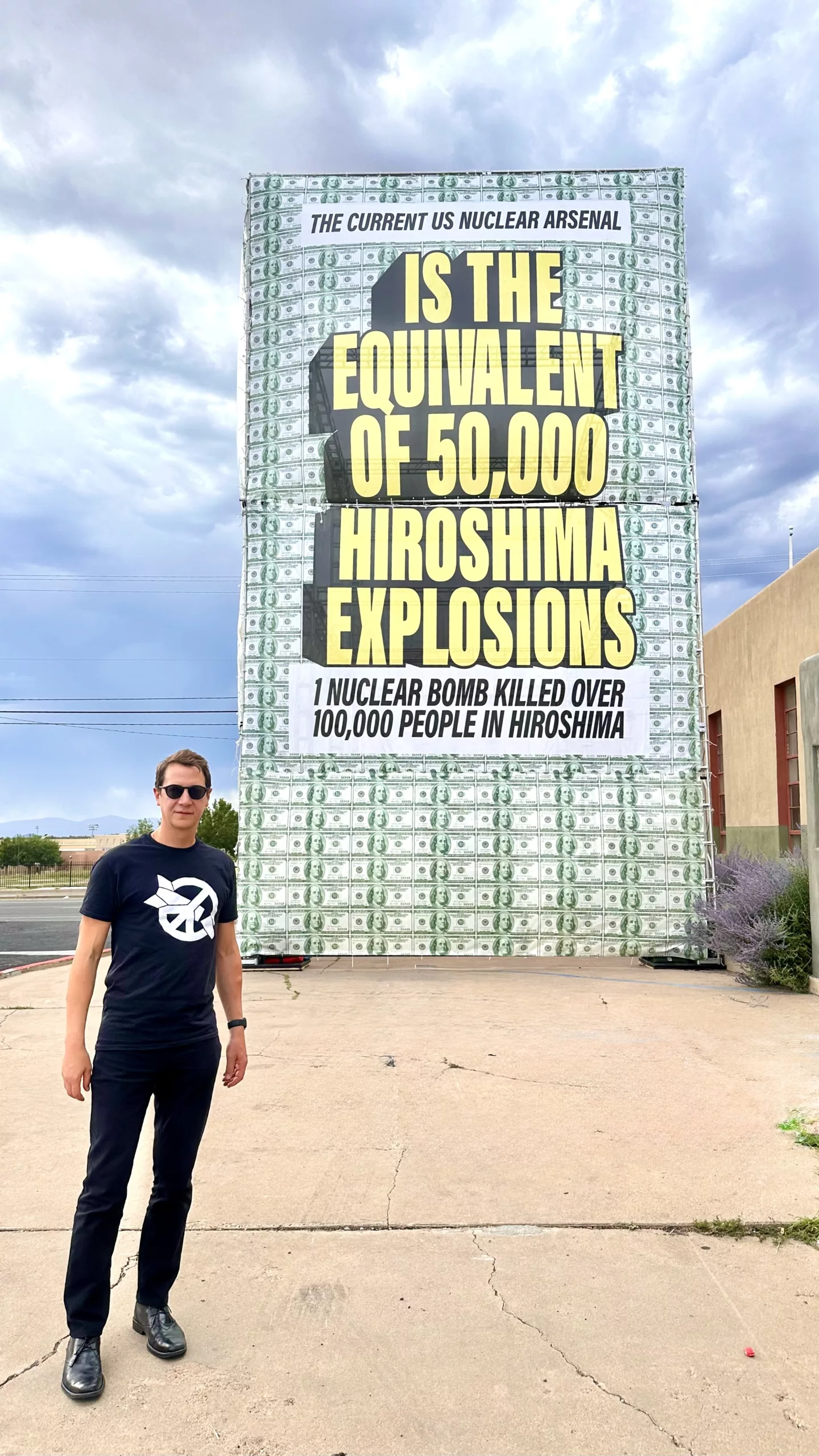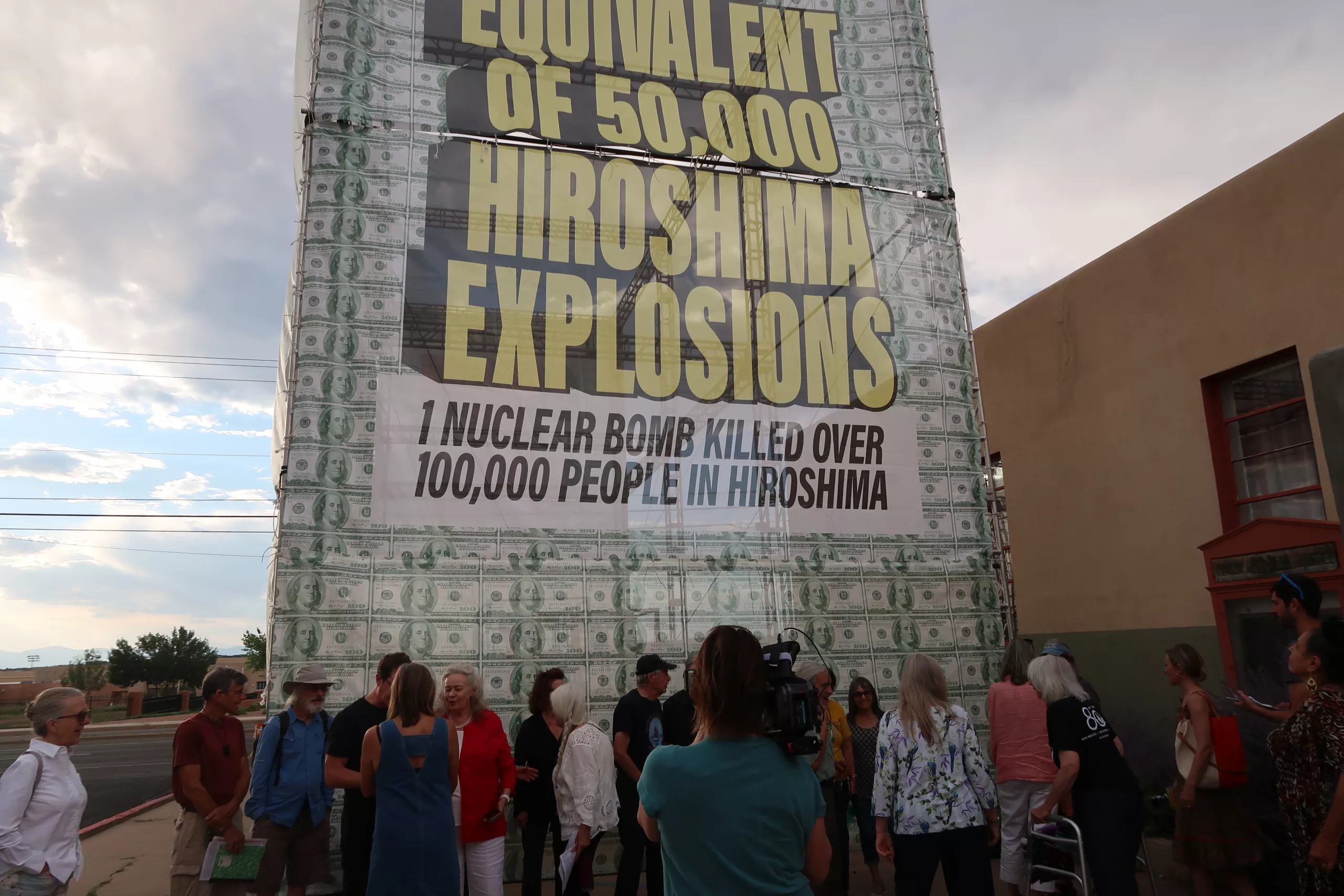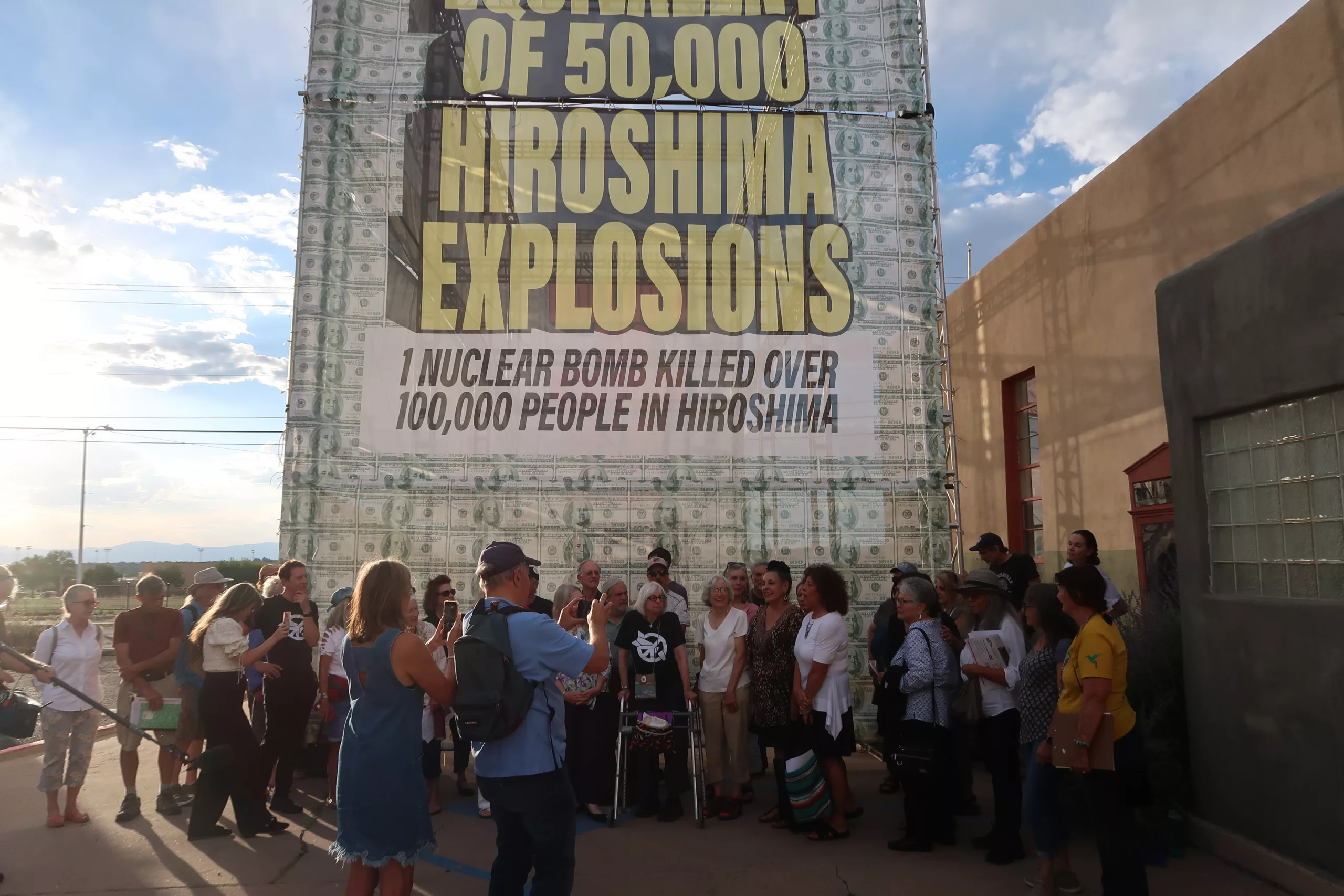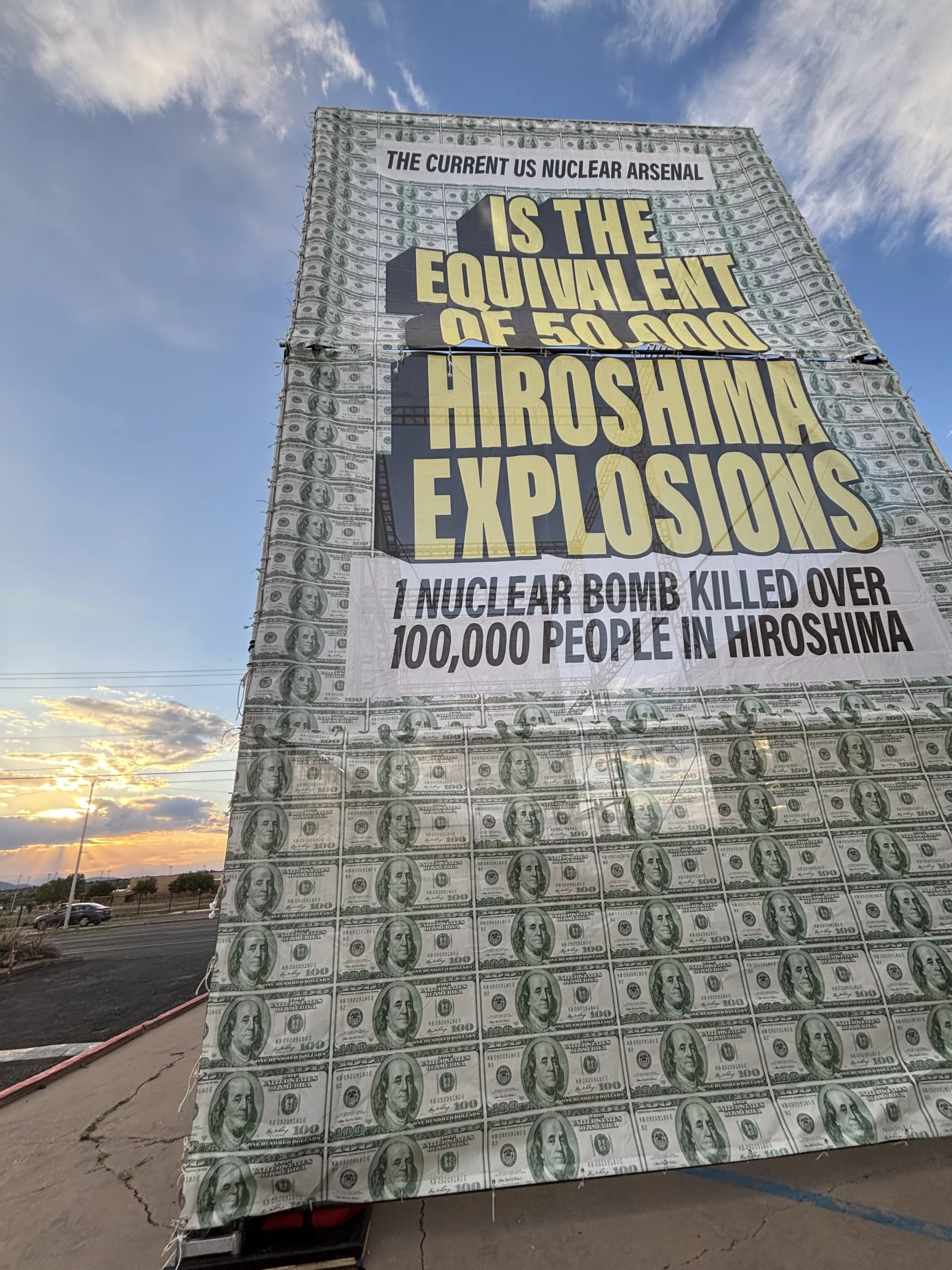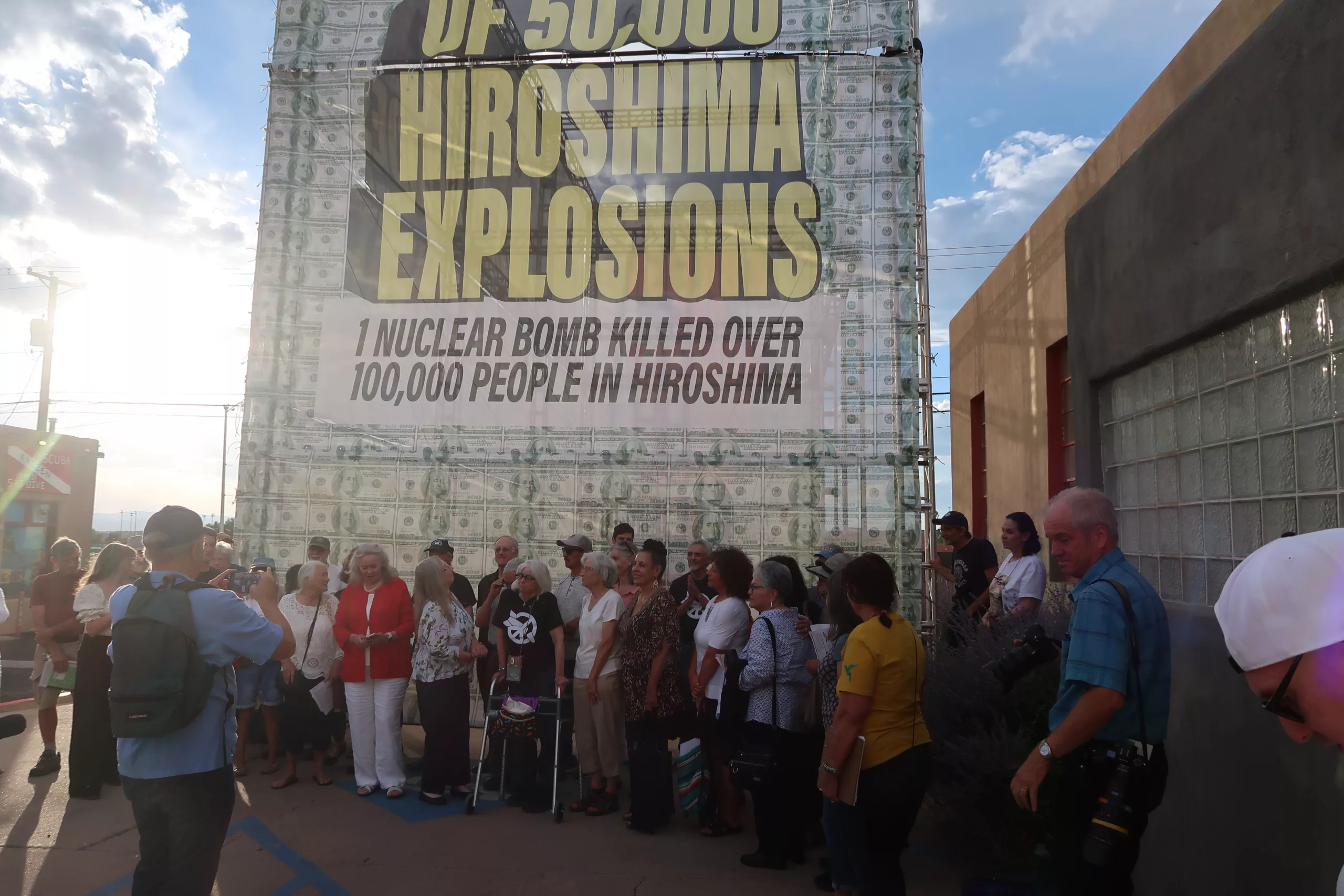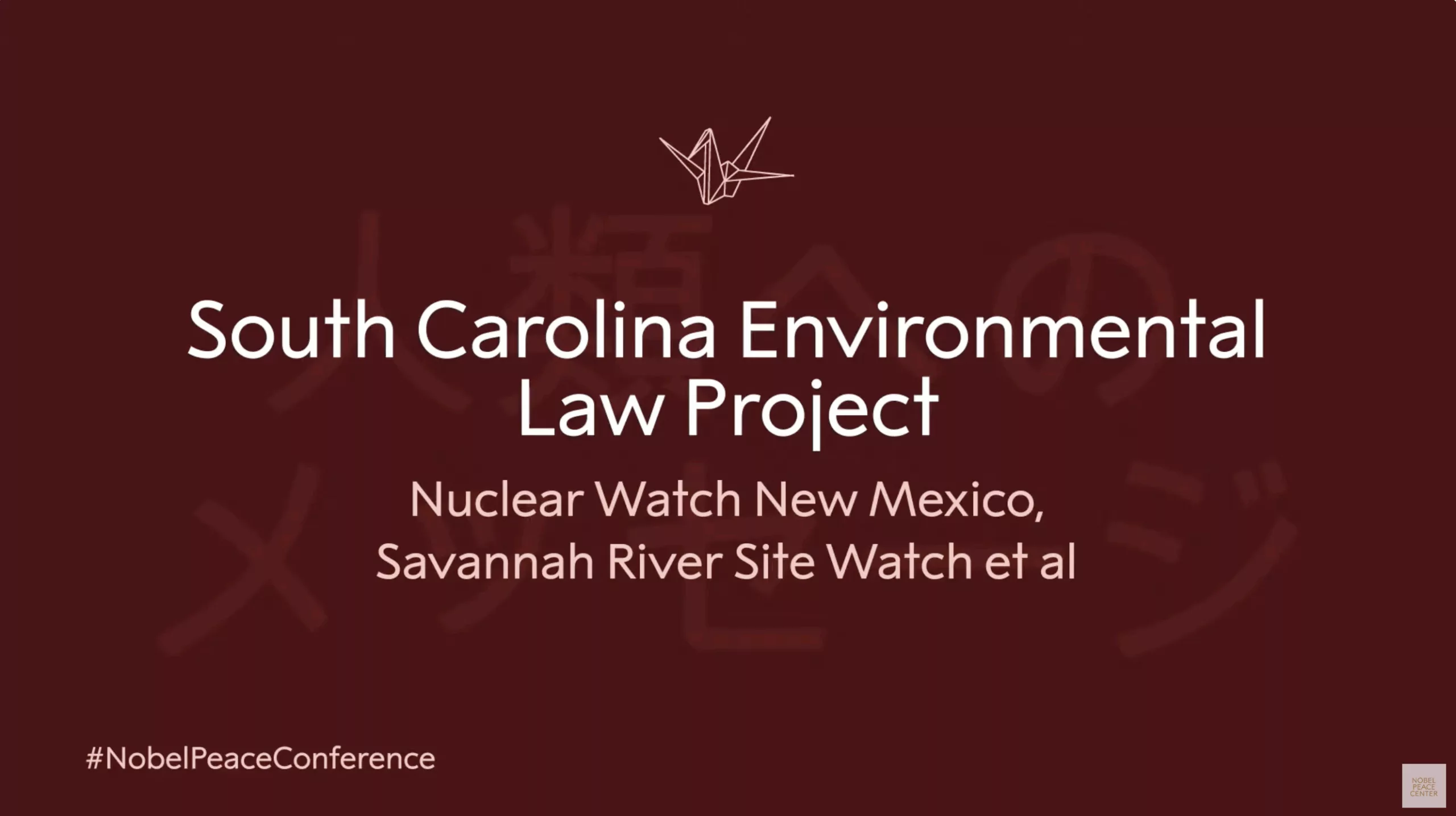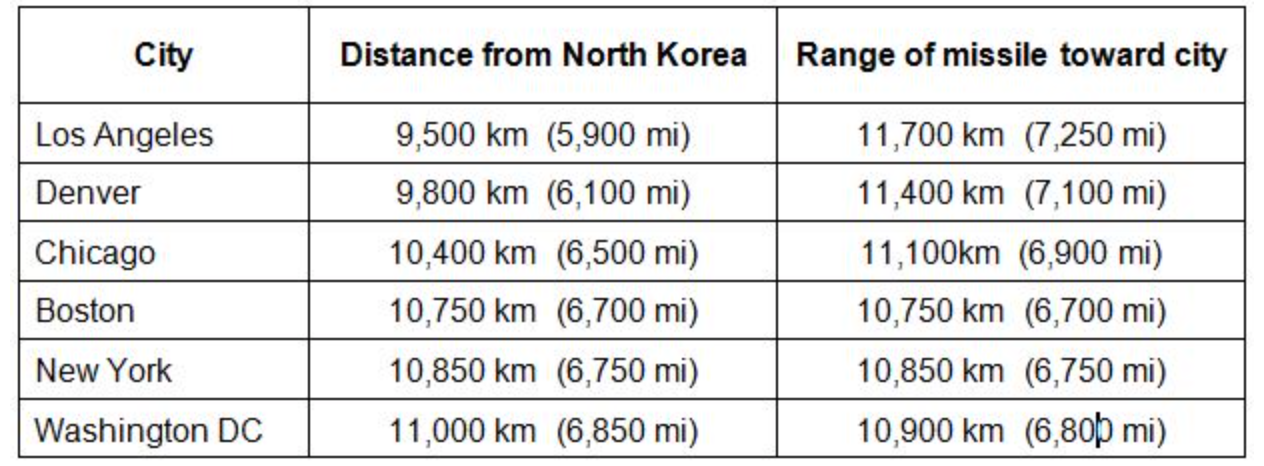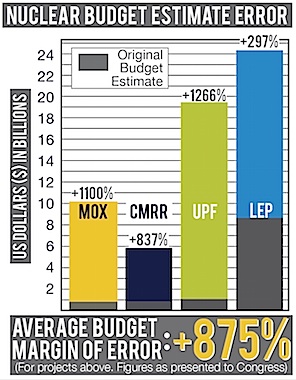Trump Orders Nuclear Weapons Testing for New Nuclear Arms Race
New Plutonium “Pit” Bomb Cores at Los Alamos Lab Could Make It Real
Just minutes before meeting with Chinese President Xi Jinping, Trump posted on his Truth Social media platform that “Because of other countries testing programs, I have instructed the Department of War to start testing our Nuclear Weapons on an equal basis. That process will begin immediately.” House Speaker Mike Johnson soon followed on CNN saying, “I think it is an obvious and logical thing to ensure that our weapons systems work.”
No other countries are currently testing nuclear weapons (the last was by North Korea in 2017). Further, any nuclear weapons tests by the U.S. would be performed by the Department of Energy (whose last test was in 1992), not the Department of War (until recently the Department of Defense). Trump was likely referring to Vladimir Putin’s recent claims of a new nuclear powered cruise missile and a tsunami-causing nuclear-armed torpedo that could threaten America’s coastal cities. In addition, China is dramatically expanding its own fleet of intercontinental ballistic missiles.
But central to all this is the U.S.’ own $2 trillion “modernization” program that will rebuild every nuclear warhead in the planned stockpile with new military capabilities and produce new-design nuclear weapons as well. This so-called modernization program will also build new nuclear weapons production facilities expected to be operational until ~2080, and buy new missiles, subs, and bombers from the usual rich defense contractors, all to keep nuclear weapons forever.
‘Nuclear weapons are blasphemous’: Archbishop Wester continues disarmament push with talk
This event was organized by the “Santa Fe Ecumenical Conversations Towards Nuclear Disarmament” group at the Santa Maria de la Paz parish near the Santa Fe Community College. They kindly invited NukeWatch to speak before Archbishop Wester for what turned out to be a wonderful event. The full recording can be viewed at https://www.youtube.com/@SMDLP/streams
By Cormac Dodd cdodd@sfnewmexican.com | October 28, 2025 santafenewmexican.com
Despite saying he has received a somewhat muted response from the local faithful, Santa Fe’s Catholic archbishop is still pushing nuclear disarmament as vital to humanity’s spiritual well-being and continued existence.
“I think nuclear weapons are blasphemous, because I think nuclear weapons are humanity’s attempt to build a Tower of Babel, an attempt to eat from the apple of the tree of the Garden of Eden, to become like God, to become gods,” Archbishop John C. Wester said in a roughly 30-minute address at Santa Maria de la Paz Catholic Church south of Santa Fe.
“In humility, we must avoid inventing anything that, in a matter of hours, can destroy what God has created,” the leader of the Archdiocese of Santa Fe continued. “The story of Adam and Eve is archetypal, I think: When human beings try to become as God, they lose the Garden of Eden and they must endure the cruel reality of paradise lost.”
The archbishop’s comments followed a journey he undertook to Japan on the 80th anniversary of the U.S. military’s decision to drop atomic bombs on Hiroshima and Nagasaki toward the end of World War II. He spoke in front of an audience of about 50 people — who gave Wester a standing ovation — at Monday’s event
In a Looming Nuclear Arms Race, Aging Los Alamos Faces a Major Test
The lab where Oppenheimer developed the atomic bomb is the linchpin in the United States’ effort to modernize its nuclear weapons. Yet the site has contended with contamination incidents, work disruptions and old infrastructure.
By Alicia Inez Guzmán | October 28, 2025 The New York Times nytimes.com
In a sprawling building atop a mesa in New Mexico, workers labor around the clock to fulfill a vital mission: producing America’s nuclear bomb cores.
The effort is uniquely challenging. Technicians at Los Alamos National Laboratory must handle hazardous plutonium to create the grapefruit-size cores, known as pits. They do so in a nearly 50-year-old building under renovation to address aging infrastructure and equipment breakdowns that have at times disrupted operations or spread radioactive contamination, The New York Times found.
Now, the laboratory is under increasing pressure to meet the federal government’s ambitions to upgrade the nation’s nuclear arsenal. The $1.7 trillion project includes everything from revitalizing missile silos burrowed deep in five states, to producing new warheads that contain the pits, to arming new land-based missiles, bomber jets and submarines.
But the overall modernization effort is years behind schedule, with costs ballooning by the billions, according to the Congressional Budget Office. In 2018, Congress charged Los Alamos with making an annual quota of 30 pits by 2026, but by last year it had produced just one approved for the nuclear stockpile. (Officials have not disclosed whether more have been made since then.)
*The featured image differs from the article photo due to usage rights.
Why Putin’s ‘invincible’ nuclear-powered missile is more likely to become a disastrous ‘flying Chernobyl’ for Russia
The US abandoned efforts to build nuclear-powered missile weapons during the 1950s arms race with the Soviet Union as a nuclear-powered missile would effectively be a huge radiation risk.
Jeffrey Lewis, a nuclear nonproliferation expert at Middlebury College, described it as a “tiny flying Chernobyl,” referencing the Soviet power plant that melted down and covered a 1,600-mile area with toxic radiation…While Lewis believes the Burevestnik is only capable of subsonic speed and easy to intercept, he warned that Russia’s ambition poses a return to the Cold War era.
“NATO aircraft could intercept it. The problem is that Burevestnik is yet another step in an arms race that offers no victory for either side,” he wrote on X.
By Ronny Reyes | October 28, 2025 nypost.com
Russian strongman Vladimir Putin’s latest threats that Moscow is preparing to deploy its new “invincible” nuclear-powered cruise missile has drawn a rebuke from President Trump and a reminder of America’s own nuclear might.
But experts say the Burevestnik missile could end up being more like a disastrous “flying Chernobyl” for Russia — and proves Putin is actually nervous about the possibility of the US giving Tomahawk cruise missiles to Ukraine.
George Barros, of the Washington-based Institute for the Study of War, described Putin’s ominous Sunday announcement as a form of fear mongering from a Kremlin afraid that the US could give Kyiv a much more conventional weapon — the tried and true Tomahawk.
Russia tested new nuclear-powered Burevestnik cruise missile
“For Trump, who has cast Russia as a “paper tiger” for failing to swiftly subdue Ukraine, the message is that Russia remains a global military competitor, especially on nuclear weapons, and that Moscow’s overtures on nuclear arms control should be acted on.”
By Guy Faulconbridge and Lidia Kelly Tim Balk | October 26, 2025 reuters.com
- Russia tests nuclear-capable Burevestnik missile
- Missile flew for 14,000 km, 15 hours
- Putin says it can pierce any missile defences
Trump Administration Providing Weapons Grade Plutonium to Sam Altman
“If there were adults in the room and I could trust the federal government to impose the right standards, it wouldn’t be such a great concern, but it just doesn’t seem feasible.”
By: Joe Wilkins | October 24, 2025 futurism.com
With the economy the way it is these days, it’s nice to have a little walking around money.
Donald Trump certainly thinks so. Since his return to the White House, the president has labeled 440 federal properties for possible sale, leased 13.1 million acres of public land for strip mining, and held a fire sale for satellites developed by NASA’s Jet Propulsion Lab.
In one of his wildest money moves to date, the Financial Times reports that Trump is now offering companies access to plutonium from America’s arsenal of cold war nuclear missiles.
On Tuesday, the US Department of Energy (DOE) launched an application for interested parties to apply for access to a maximum of 19 metric tonnes — a little under 42,000 pounds — of weapons-grade plutonium, which has long been a key resource undergirding the US nuclear arsenal.
One of the companies anticipated to receive shipments of the fissile isotope from the DOE is Oklo, a “nuclear startup” backed — and formerly chaired — by OpenAI CEO Sam Altman. Earlier in October, Oklo was one of four US companies chosen by the DOE to join a new pilot program meant to rush the testing and approval of experimental reactor designs.
As the FT reports, we won’t know for certain until December 31, when the DOE announces the companies selected to purchase the plutonium, but it’s likely Oklo will be among them. That’s stirring up plenty of anxiety throughout the scientific community, who say the relaxed approach to nuclear development is a major cause for alarm.
“If there were adults in the room and I could trust the federal government to impose the right standards, it wouldn’t be such a great concern, but it just doesn’t seem feasible,” Edwin Lyman, a physicist with the Union of Concerned Scientists told the FT.
U.S. Agency That Protects Nuclear Arsenal to Furlough Workers
Jay Coghlan, the executive director of Nuclear Watch New Mexico, a private group that monitors the agency, said it was unclear if the furloughs would have any immediate effect on nuclear safety. “As a baseline, the nuclear safety officers have always been understaffed. There is simply not enough federal oversight as is. And then you’re talking about furloughing more,” he added.
By Tim Balk | October 17, 2025 nytimes.com
![]() The National Nuclear Security Administration said 1,400 workers would be affected by Monday.
The National Nuclear Security Administration said 1,400 workers would be affected by Monday.
Nuclear weapons safety oversight in decline with Trump, Biden inaction
The lone independent federal agency responsible for ensuring safety at U.S. nuclear weapons sites — including Hanford in Washington state — will lose its ability to issue recommendations for safer work by January if the Trump administration doesn’t replenish its board, which this month dwindles to one member.
By Patrick Malone | October 15, 2025 seattletimes.com
The Defense Nuclear Facilities Safety Board ensures adequate public health and worker safety by scrutinizing hazardous work conducted by the U.S. Department of Energy and its contractors that produce and maintain the nuclear arsenal. If the Trump administration and Congress don’t move quickly to populate the board, it will be incapable of issuing formal safety recommendations to the Energy Department, according to a report last month from the Government Accountability Office, Congress’ investigative arm.
If the board is without a quorum of at least three members for a year, “the agency would essentially be able to offer only nonbinding advice to DOE,” according to the report.
“The whole idea of having the board in place is to provide the optics in addition to the substance,” Nathan Anderson, a Washington state-based director in the GAO’s natural resources division, told The Seattle Times.
The board does not have regulatory or enforcement authorities, but its advice carries significant weight and cannot be easily dismissed or disregarded, the GAO report states. The board’s recommendations to the U.S. secretary of energy are published for public comment, and the secretary must respond in writing. The board also reports each year to selected congressional committees on its recommendations to the Energy Department and any outstanding safety problems.
FULL ORIGINAL ARTICLE (SEATTLE TIMES)
YOU CAN HELP SAVE THE DNFSB TODAY:
Continue reading
New Article about “Participatory Democracy in Action” Describes WIPP Permit Negotiations
Thanks to our friends at Concerned Citizens for Nuclear Safety for this article:
In an essay for NYU’s Democracy Project, David F. Levi, a former federal judge and director emeritus of the Bolch Judicial Institute at Duke Law, reflected on the negotiations he facilitated in New Mexico about the renewal of the hazardous waste permit for the Waste Isolation Pilot Plant (WIPP), a deep geologic repository for plutonium-contaminated waste generated in the fabrication of nuclear weapons. Judge Levi’s essay is entitled “Participatory Democracy in Action.” He wrote:
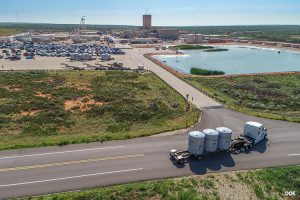 “A couple of years ago, I was asked to mediate a dispute between the U.S. Department of Energy (DOE) and the New Mexico Environment Department (NMED) concerning the renewal of a required state permit for DOE’s Waste Isolation Pilot Plant (WIPP), the nation’s only deep underground nuclear waste storage facility, located outside of Carlsbad, New Mexico. I thought I could help the two government entities but quickly came to realize that under the mediation procedures followed by New Mexico, the mediation would also involve citizen groups whose ultimate concurrence was essential to any complete resolution. This was entirely new to me.
“A couple of years ago, I was asked to mediate a dispute between the U.S. Department of Energy (DOE) and the New Mexico Environment Department (NMED) concerning the renewal of a required state permit for DOE’s Waste Isolation Pilot Plant (WIPP), the nation’s only deep underground nuclear waste storage facility, located outside of Carlsbad, New Mexico. I thought I could help the two government entities but quickly came to realize that under the mediation procedures followed by New Mexico, the mediation would also involve citizen groups whose ultimate concurrence was essential to any complete resolution. This was entirely new to me.
“In this case, there were seven such citizen groups entitled to participate and representing a variety of points of view. There was one group representing some of the government and business leaders of the town of Carlsbad who favored permit renewal on terms ensuring the continued long-term operation of WIPP. There were six groups expressing a variety of concerns about nuclear waste coming to New Mexico. They sought a more restrictive permit.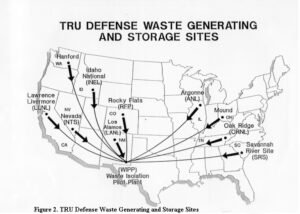
“To my astonishment, over the course of four full days, we worked through the multitude of issues and came to complete agreement. Something magical had happened. Thanks to the goodwill of the DOE and its contractor, the remarkable daily attendance and attentiveness of the NMED Secretary and the measured and well-informed way in which the various citizen groups made their points, we were able to find consensus and craft permit language that was acceptable to everyone.
“For me, as a former judge and mediator, the experience was thrilling. It was an experience of participatory democracy in action that made me proud of our fellow citizens and our government. Three aspects of the experience stand out. First, everyone in the room had taken responsibility for the way in which our nation’s only deep underground nuclear storage facility would be operated for the next 10 years. The citizen participants were not just making suggestions; they were assuming many of the attributes of decision makers. Second, all participants were advocating, compromising, and collaborating on behalf of what they saw as the public interest. These are the essential skills of democracy—the civic virtues so central to the Founders’ vision of what would make democracy work in America—and they require practice. Finally, over four days around a table, the citizens were able to take the measure of the DOE and NMED representatives. They came to realize, as I did, that these public servants, as well as the DOE contractor, were very well-informed, experienced, and intentioned. The government representatives had a similar experience of coming to appreciate the citizen questions and points of view. A government that relies on trust needs this kind of interaction to maintain that trust.
“It seems our democracy would be strengthened if we could extend the benefits of this kind of participatory structure to other areas of our legal and regulatory systems.”
“In Democracy in America, Alexis de Tocqueville made some of these points in reference to the jury trial in civil cases. He emphasized the importance of the civil jury trial as a free “public school” [https://contextus.org/Tocqueville,_Democracy_in_America_(1835),_Book_I,_Chapter_XVI_Causes_Mitigating_Tyranny_In_The_United_States_(Part_II).13?ven=Gutenberg&lang=en]  educating jurors in the democratic virtues and skills and teaching them to assume responsibility. In the same vein, every trial judge I know would attest to the importance of the jury experience for building confidence in the courts. After a trial, judges often hear words of gratitude from jurors who are deeply impressed by the legal process and are honored to have participated despite their initial dismay at being called to jury service. Sadly, the number of jury trials has diminished, particularly in federal court. Reversing that trend is a worthy goal, particularly for a branch of government that depends so heavily on public confidence.
educating jurors in the democratic virtues and skills and teaching them to assume responsibility. In the same vein, every trial judge I know would attest to the importance of the jury experience for building confidence in the courts. After a trial, judges often hear words of gratitude from jurors who are deeply impressed by the legal process and are honored to have participated despite their initial dismay at being called to jury service. Sadly, the number of jury trials has diminished, particularly in federal court. Reversing that trend is a worthy goal, particularly for a branch of government that depends so heavily on public confidence.
“As a final reflection: any persons involved as litigants will have an experience of the legal system. The experience can advance their sense of agency and participation, their ability to disagree civilly, and their trust in the courts. But how can these objectives be obtained when so many Americans cannot afford a lawyer? We can do so much better to provide understanding of and access to our justice system.”
The six New Mexico based non-governmental organizations were Citizens for Alternatives to Radioactive Dumping (CARD), Concerned Citizens for Nuclear Safety (CCNS), Conservation Voters New Mexico (CVNM), Nuclear Watch New Mexico, Southwest Alliance for a Safe Future (SAFE), and Southwest Research and Information Center (SRIC). The individual was Steve Zappe, a grandfather and former NMED WIPP Program Manager.
“A House of Dynamite” New Netflix Nuclear Catastrophe Film: Fiction, for Now
The reviews are rolling in for “A House of Dynamite,” which premiered in Europe earlier this month before coming to the U.S. on October 10th, with a full Netflix release scheduled for the 24th. Here’s the trailer, and see the schedule for Santa Fe theater showings here:
This Week! Santa Fe Theater Screenings for the Film “A House of Dynamite”
I attended one of these screenings last night, and I’ll let the professional critic reviews give the gist:
The Kathryn Bigelow thriller looks at what might happen if a ballistic missile were headed to the U.S. The director hopes the movie will start a conversation. New York Times: At Venice, ‘A House of Dynamite’ Is Scarier Than Most Horror Films
“The Netflix thriller captures from multiple perspectives the White House response to an unattributed missile launch headed for a major U.S. city in the harrowing 20 minutes until projected impact…”An unrelenting chokehold thriller so controlled, kinetic and unsettlingly immersive that you stagger out at the end of it wondering if the world will still be intact.” ‘A House of Dynamite’ Review: Idris Elba and Rebecca Ferguson in Kathryn Bigelow’s Precision-Tooled, Viscerally Unsettling Nail-Biter
“Told from the perspective of soldiers at a remote Alaskan missile base, staffers in the White House situation room, military officials at US Central Command (CENTCOM), and the president of the United States, the film weaves an overlapping timeline to show how the United States would respond to a missile attack…The film doesn’t want viewers to ask themselves how to thwart a nuclear attack on the United States. Rather, it wants the viewer to question the value of having nuclear weapons at all. ‘None of this makes sense,’ the President (Idris Elba) bemoans, ‘Making all these bombs and all these plans.'”
“A House of Dynamite is a terrifying examination of how terribly wrong things can go even with highly competent people in charge…But that’s also not necessarily the world we’re living in…The film shows why the worst can happen, even when competent, well-meaning people are trying to do the right thing.
But what if competence and decency are in short supply?” A House of Dynamite: Bigelow’s latest thriller shows why nuclear bombs are only part of the danger
This film left me reeling with tension and anxiety and exactly as the Times article titles it, is scarier than most horror films. Unlike ‘Oppenheimer,’ which largely glorified the invention of the atomic weapon, ‘A House of Dynamite’ makes it impossible to ignore the threat that nuclear weapons pose to our world. Working backwards from perspectives, and focused on how we can actually improve our odds of keeping this story a fictional one, here is what struck me most about this film:
-
-
Only one person decides what happens. But the real threat isn’t one reckless leader — it’s a reckless system. The final segment of the film features the “nuclear football” heavily, a briefcase containing launch procedures and options. In the United States, the president holds the sole and absolute authority to order the use of nuclear weapons. In the film, there are many voices in the President’s ear, but two primary perspectives quickly emerge after the defense fails and the ICBM remains inbound to its U.S. target: “One side advocates a retaliatory strike; the other, nothing. ‘It’s surrender or suicide,’ one adviser tells the President,” – thebulletin.org. The military aide carrying the nuclear football is tasked with providing the President the list of options if retaliation is chosen. An absolute must-read, Daniel Ellsberg’s book “The Doomsday Machine” breaks down many of the themes in the film with pure and terrifyingly honest account of Cold War-era nuclear strategy. In terms of launch authority, he describes how the inherent instability of the delegated command structure of the nuclear apparatus makes accidental or unwanted war an ever-present danger.
-
LANL tritium containers to head to Texas after last treatment
Four flanged tritium waste containers have been depressurized and transported to Los Alamos National Laboratory’s Weapons Engineering Tritium Facility, where they will be treated further before heading out-of-state for disposal.
By Alaina Mencinger amencinger@sfnewmexican.com | October 15, 2025 santafenewmexican.com
The containers’ final destination is Waste Control Specialists, a West Texas facility that handles the storage and disposal of radioactive waste.
The more than 1,300-acre facility in Andrews County is located on an approximately 14,000 acre property, which is sited on a thick clay formation which the company describes as “nearly impermeable.”
New documents have been added to the Los Alamos Legacy Cleanup Contract Electronic Public Reading Room.
All legacy cleanup documents required to be posted after April 30, 2018, are available on the site linked above.
For legacy cleanup documents that were posted prior to April 30, 2018, please visit the LANL electronic public reading room.
- Review, Notice of Completion of Off-Site Waste Shipments for Final Disposal, Activities 3.1.5, 3.1.8, and 3.3.4, Compliance Plan, Site Treatment Plan, Federal Facility Compliance Order Los Alamos National Laboratory [July 31, Aug. 21, 2025]
https://ext.em-la.doe.gov/GovFTPFiles/api/GetFiles/GetFile?fileName=EMID-703933_NMED_Review_STP_Shpmt_Jul_31_Aug_21_101525.pdf
Strong Political and Public Opposition Means Consolidated Interim Storage Facility (CISF) in NM “Impossible in the Near Future”
NEW UPDATE OCTOBER 10, 2025:
Holtec abandons plan to build New Mexico storage facility for spent nuclear fuel
This is excellent news. The Governor and state legislature (specifically Senator Jeff Steinborn and Representative McQueen) are to be commended for not allowing New Mexico to become the nation’s dumping ground for highly radioactive commercial spent fuel rods, especially when the Land of Enchantment has never had its own nuclear energy plant. Hard work from many New Mexicans made this happen.
So-called “interim” storage would never be interim when the federal government has failed for more than four decades to find a permanent repository for these lethal wastes. This also shows how hollow all the hype is about the claimed renaissance of nuclear power, when on the front end the industry can’t survive without taxpayer handouts, and on the back end can’t solve its radioactive waste problem.
Holtec’s quote that “New Mexico’s acquiescence is necessary” for interim storage to go forward is interesting, implying that we have to surrender as the nuclear colony that we are. Well, guess what, we didn’t surrender, and I predict you’ll see more of this. Moreover, whether you’re pro-nuclear or anti-nuclear, Holtec is an ethically questionable company, which is why the attorneys general of New Jersey and Massachusetts have sued it.
Adiós and good riddance, Holtec!
New York Times: Tax Break Scandal Leads to $5 Million Fine for N.J. Energy Company
SEE MORE:
Nuclear Weapons Issues & The Accelerating Arms Race: September 2025
Nuclear Weapons Update:
Putin has offered Trump a one-year extension of the numerical cap on strategic nuclear weapons in the new Strategic Arms Reduction Treaty which is 1,550 warheads (however, B52s are counted as one warhead while they can carry a dozen). New START expires in February 2026, which will be the first time the world will be without any nuclear arms control treaties since the mid-1970s. Trump has said it sounded like a good idea.
Note: New START ratification in 2010 provided the opportunity for Republicans in the Senate to attach the condition of $88 billion for nuclear weapons “modernization” that has since metastasized to ~$2 trillion. Nuclear disarmament must be prioritized as the ultimate goal over simply continued arms control.
A mere extension of the numerical cap would not involve Congressional ratification. The extension of New START’s numerical cap is in part to allow for a year in which to begin negotiations for a treaty replacement.
Plutonium Pit Production:
A draft plutonium pit production programmatic environmental impact statement is expected to be released next year in early 2026.
Accelerating Arms Race:
Is North Korea set to become world’s ‘fourth ICBM power’ after missile breakthrough? | Park Chan-kyong | South China Morning Post | September 11, 2025
A new era in North Korea’s missile programme may be dawning, as analysts warn of an imminent test launch of an intercontinental ballistic missile capable of carrying multiple warheads to the US mainland. Fresh from his appearance at China’s Victory Day parade in Beijing last week, North Korean leader Kim Jong-un personally oversaw the trial of a lighter, more robust solid-fuel ICBM engine, state media reported on Tuesday, touting the achievement as a “strategic” breakthrough.
Saudi Arabia signs a mutual defense pact with nuclear-armed Pakistan after Israel’s attack on Qatar | MUNIR AHMED & JON GAMBRELL | AP NEWS | September 18, 2025
DUBAI, United Arab Emirates (AP) — Pakistan’s defense minister says his nation’s nuclear program “will be made available” to Saudi Arabia if needed under the countries’ new defense pact, marking the first specific acknowledgment that Islamabad had put the kingdom under its nuclear umbrella.
Defense Minister Khawaja Mohammad Asif’s comments underline the importance of the pact struck this week between Pakistan and Saudi Arabia, which have had military ties for decades.
The move is seen by analysts as a signal to Israel, long believed to be the Middle East’s only nuclear-armed nation. It comes after Israel’s attack targeting Hamas leaders in Qatar last week killed six people and sparked new concerns among Gulf Arab nations about their safety as the Israel-Hamas war devastated the Gaza Strip and set the region on edge.
Russia suspected of helping North Korea build nuclear submarines, Seoul investigating | Park Chan-kyong | South China Morning Post | September 18, 2025
South Korea is investigating reports that Russia has supplied North Korea with nuclear submarine reactor modules, a move analysts see as highly plausible and one that could mark a breakthrough in Pyongyang’s decades-long push for a nuclear-powered navy… At the 8th Party Congress in January 2021, North Korea declared five core defence goals, including the development of nuclear-powered submarines and submarine-launched strategic nuclear weapons.
China Hardens Military Stance Against U.S. With Nuclear Weapons and Tough Talk | Brian Spegele | The Wall Street Journal| September 18, 2025
China played down its rapidly rising military might for years. In the past few weeks, Beijing has broadcast a steady drumbeat of firepower displays and muscular rhetoric, carrying an unmistakable warning for the U.S… Part of China’s confidence stems from the rapid growth of its firepower. The Pentagon estimates that China’s stockpile of nuclear warheads has more than doubled since 2020, alongside a growing array of options to launch those weapons, from mobile ground-launch systems to increasingly stealthy submarines.
Holtec Pulls Out of New Mexico Spent Nuclear Fuel Interim Storage Project
Holtec International has confirmed it is canceling plans to build a consolidated interim storage facility for spent nuclear fuel in southeastern New Mexico.
By Radwaste Solutions | October 9, 2025 ans.org
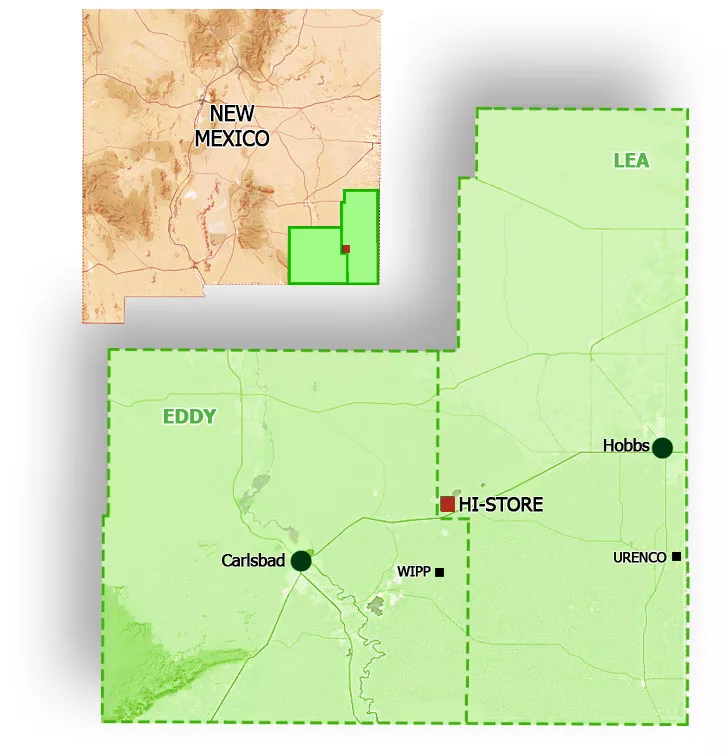
Named the HI-STORE CISF, the facility would have stored up to 10,000 canisters of commercial SNF on land owned by the Eddy-Lea Energy Alliance (ELEA) near the towns of Carlsbad and Hobbs.
“After discussions with our longtime partner in the HI-STORE project, the Eddy-Lea Energy Alliance, and due to the untenable path forward for used fuel storage in New Mexico, we mutually agreed upon canceling the agreement. This allows for ELEA to work to redevelop the property in a manner that fits their needs and allows Holtec to work with other states who are amenable to used fuel storage based on the recent DOE work on public education and outreach,” Holtec said in a statement (emphasis added).
Following the U.S. Supreme Court’s June ruling in NRC v. Texas, which found that petitioners did not have standing to challenge the Nuclear Regulatory Commission’s licensing of Interim Storage Partners’ CISF in Texas, Holtec said it expected to have its HI-STORE CISF license reinstated, allowing the company to move forward with the project. Holtec and ISP’s NRC licenses were vacated by the 5th Circuit Court of Appeals in a 2023 ruling.
Despite the court’s decision, New Mexico Gov. Michelle Lujan Grisham said she remained committed to preventing the HI-STORE CISF from being built. In 2023, New Mexico passed a bill barring the storage and disposal of high-level radioactive waste in New Mexico without the state’s explicit consent.
The AI Doomsday Machine Is Closer to Reality Than You Think
“Most troubling to experts on AI and nuclear weapons is that it’s getting harder and harder to keep decisions about targeting and escalation for nuclear weapons separate from decisions about conventional weapons.”
“There is no standing guidance, as far as we can tell, inside the Pentagon on whether and how AI should or should not be integrated into nuclear command and control and communications,” says Jon Wolfsthal, director of global risk at the Federation of American Scientists.
By Michael Hirsh | September 2, 2025 politico.com
Jacquelyn Schneider saw a disturbing pattern, and she didn’t know what to make of it.
Last year Schneider, director of the Hoover Wargaming and Crisis Simulation Initiative at Stanford University, began experimenting with war games that gave the latest generation of artificial intelligence the role of strategic decision-makers. In the games, five off-the-shelf large language models or LLMs — OpenAI’s GPT-3.5, GPT-4, and GPT-4-Base; Anthropic’s Claude 2; and Meta’s Llama-2 Chat — were confronted with fictional crisis situations that resembled Russia’s invasion of Ukraine or China’s threat to Taiwan.
Director Kathryn Bigelow is Sounding the Nuclear Alarm – Washington Post New Review
“A House of Dynamite” asks: How would the White House respond in the face of a nuclear attack?
By Max Boot | October 2, 2025 washingtonpost.com
VIEW MORE: “A House Of Dynamite” Q&A w/ Director Kathryn Bigelow, Tracy Letts, Jared Harris, And More At New York Film Fest —
80th Commemorations of Ban the Bomb – Trinity, Hiroshima & Nagasaki Remembrances in New Mexico
Exchange Monitor: DNFSB makes agency fixes, but needs members, GAO finds
The Defense Nuclear Facilities Safety Board (DNFSB) has tackled all but a few third-party recommendations to improve its culture over the past decade but suffers from a depleted board, according to a new report.
By ExchangeMonitor | September 5, 2025 santafenewmexican.com
Progress is tough with the five-person board probably…
China Hardens Military Stance Against U.S. With Nuclear Weapons and Tough Talk
Xi positions Beijing as powerful center of new global order as security forum convenes in capital
By Brian Spegele | September 18, 2025 wsj.com
BEIJING—China played down its rapidly rising military might for years. In the past few weeks, Beijing has broadcast a steady drumbeat of firepower displays and muscular rhetoric, carrying an unmistakable warning for the U.S….
Saudi Arabia signs a mutual defense pact with nuclear-armed Pakistan after Israel’s attack on Qatar
While not specifically discussing the bomb, the agreement states “any aggression against either country shall be considered an aggression against both,” according to statements issued by both Pakistan’s Foreign Affairs Ministry and the state-run Saudi Press Agency.
By MUNIR AHMED and JON GAMBRELL | September 18, 2025 apnews.com
ISLAMABAD (AP) — Saudi Arabia and nuclear-armed Pakistan have signed a mutual defense pact that defines any attack on either nation as an attack on both — a key accord in the wake of Israel’s strike on Qatar last week.
The kingdom has long had close economic, religious and security ties to Pakistan, including reportedly providing funding for Islamabad’s nuclear weapons program as it developed. Analysts — and Pakistani diplomats in at least one case — have suggested over the years that Saudi Arabia could be included under Islamabad’s nuclear umbrella, particularly as tensions have risen over Iran’s atomic program.
COMMUNITIES FOR CLEAN WATER: LANL Radioactive Tritium Venting Fails to Provide Transparency, Assurance, and Respect for Local Communities
FOR IMMEDIATE RELEASE: September 18, 2025
Santa Fe, NM — As NNSA and LANL continue operations to depressurize Flanged Tritium Waste Containers, Communities for Clean Water (CCW) calls out federal agencies for issuing vague assurances instead of transparent, verifiable data — and for dismissing community concerns with contradictory and incomplete statements that disregard what independent experts have found, the Department of Energy’s (DOE) own legal obligations, and the New Mexico Environment Department’s (NMED) acknowledgment that LANL has a long record of compliance failures.
“How can our communities be expected to trust LANL when they won’t give us access to the raw, real-time monitoring data – independently verified by the EPA,” asks Joni Arends with Concerned Citizens for Nuclear Safety. “Without this transparency, LANL is continuing a legacy of empty assurances, not accountability.”
Key Concerns:
-
Lack of real-time transparency – Since Friday (Sept. 12), the public has been forced to rely on NMED’s Facebook page for piecemeal updates. While LANL’s website provides very brief daily summaries, no near-real-time monitoring dashboard from DOE, NNSA, or LANL has been made available.
-
Vague assurances, not real information – NNSA’s updates claim “no tritium was released” while simultaneously telling the public to expect “very low levels of tritium” for subsequent venting. Without numbers, monitoring data, or detection thresholds, these phrases do not provide reassurance.
-
Weather risks – LANL has not disclosed thresholds for wind, rain, or humidity that would postpone venting. Communities watch weather shifts in real time but are left in the dark about how safety decisions are being made.
-
Dismissal of public health concerns – When asked for plain-language guidance that NMED stated LANL would provide, LANL responded only with “no offsite impact anticipated.” This is not meaningful and reassuring guidance, it’s a blanket dismissal that disregards independent expert findings and fails to meet DOE’s obligations to protect vulnerable populations.
-
Ignoring daily lifeways – Avoiding Pueblo Feast Days is not enough. This is harvest season, when outdoor cultural events, youth programs, and farming are in full swing. LANL’s scheduling continues to disregard these realities.
Unanswered Questions
Independent experts and community advocates have raised critical unanswered questions:
-
Unclear “depressurization” – LANL said “no internal pressure was found” in a container, but also claimed it was “depressurized.” If no pressure existed, what was released?
-
Unanswered helium questions – NMED stated helium was released, but LANL has not explained its origin. Was it introduced at sealing of the outer container, or a decay product of tritium?
-
Monitoring limits undisclosed – LANL has not disclosed the detection limits of its monitoring equipment. Readings “indistinguishable from zero” could still mask releases.
DOE NNSA Gives Misleading Statements on Native America Calling
On a recent Native America Calling program, DOE NNSA’s Los Alamos Field Office Deputy Director Pat Moss compared LANL venting to global natural tritium stocks. Independent expert Dr. Arjun Makhijani pointed out this comparison as misleading: “The problem is not global background, but local contamination. If venting occurs in rain and calm winds, local rainfall could exceed U.S. drinking water standards by hundreds to thousands of times.”
In their most recent public meeting, LANL admitted that infants could receive three times the radiation dose as adults. During the interview, Dr. Makhijani pressed this point – if adults are modeled at 6 mrem, that means infants could be at 18 mrem, nearly double the EPA’s 10 mrem compliance limit. Instead of addressing this directly, Mr. Moss provided a stock line, “We will be compliant with the regulatorily imposed release threshold and will be doing the calculations per the regulation.”
That is exactly the problem – hiding behind regulatory caps while ignoring clear evidence that infants, our most vulnerable, face exposures above legal limits.
DOE NNSA also pointed to the Defense Nuclear Facilities Safety Board (DNFSB) – an independent federal oversight body created by Congress – as if it had declared the tritium venting operation as “fully protective of the public”. That is misleading. First, the DNFSB has been operating without a quorum for months, limiting its ability to issue independent recommendations. Second, what the Board staff said in its July 2025 presentation was that the overall nuclear safety risk to the public is low if DOE’s proposed controls are followed. The DNFSB has also flagged ongoing safety concerns at LANL including deficiencies in Area G’s safety analysis and risk to workers.
First of four containers of tritium waste at LANL has been vented
The first of four flanged tritium waste containers awaiting removal from Los Alamos National Laboratory has been vented, the New Mexico Environment Department announced Tuesday afternoon.
By Alaina Mencinger amencinger@sfnewmexican.com | September 16, 2025 santafenewmexican.com
The container can now be moved for treatment at LANL and then, eventually, to an off-site disposal area.
No internal pressure was found in the first container, according to the National Nuclear Security Administration, suggesting the inner containers in the flanged tritium waste container hadn’t leaked. Air monitoring did not show an increase of tritium beyond background levels, the federal agency wrote.
No tritium emissions were released, the Environment Department wrote in its Tuesday post on X, formerly Twitter. Both the state agency and the U.S. Environmental Protection Agency are monitoring the process.
The depressurization of the containers is set to continue at 7 a.m. Wednesday, although the NNSA noted the schedule is subject to change due to weather. The four containers will be vented one at a time over an estimated two-week period.
*The featured image differs from the article photo due to usage rights.
New Mexicans Can Save the DNFSB; Contact Our Senators Today
From our friends at Concerned Citizens for Nuclear Safety:
The independent Defense Nuclear Facilities Safety Board has been dwindling from a five-member board to one member and may disappear if we, the People, do not raise our voices to support its essential nuclear safety work. The Safety Board needs at least two new members. And that needs to get done by Saturday, October 18th. https://www.dnfsb.gov/about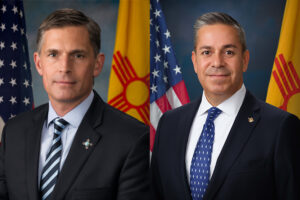
New Mexico U.S. Senators Heinrich and Lujan have key roles to play to ensure the Safety Board’s work continues unimpeded. https://www.heinrich.senate.gov/ and https://www.lujan.senate.gov/ Our voices of support are essential to ensure communities continue to receive the essential services of the Safety Board and its staff.
Right now members of the Safety Board’s staff are monitoring the venting of radioactive tritium from Area G at Los Alamos National Laboratory (LANL). Their expertise in the field of nuclear safety and their demonstrated competence and knowledge relevant to their independent investigative and oversight functions are an essential part of the process. They will be part of the follow-up once the venting of the four flanged tritium waste containers is completed. https://tewawomenunited.org/?s=tritium, https://www.ccwnewmexico.org/tritium, https://nuclearactive.org/
Not only does the Safety Board have staff at LANL, but also at Sandia National Laboratories in Albuquerque and at the Waste Isolation Pilot Plant, the burial site for plutonium contaminated nuclear weapons waste, near Carlsbad. https://ananuclear.org/facilities/
Russia suspected of helping North Korea build nuclear submarines, Seoul investigating
Analysts said such a technology transfer was plausible given Pyongyang’s support for Russia’s ongoing war in Ukraine
By Park Chan-kyong | September 18, 2025 scmp.com
South Korea is investigating reports that Russia has supplied North Korea with nuclear submarine reactor modules, a move analysts see as highly plausible and one that could mark a breakthrough in Pyongyang’s decades-long push for a nuclear powered navy…
Holy See tells nations at UN to end threat of nuclear weapons, even as deterrence
Amid a global arms race, ending the threat of nuclear war — and even the testing of nuclear weapons — is imperative, said the Holy See’s diplomat to the United Nations.
By Gina Christian, OSV News | September 8, 2025 catholicreview.org
Archbishop Gabriele G. Caccia, the Holy See’s U.N. permanent observer, shared his thoughts in a statement he delivered Sept. 4 at U.N. headquarters in New York, during the General Assembly High-level Plenary Meeting to Commemorate and Promote the International Day Against Nuclear Tests, observed that same day.
“The pursuit of a world free of nuclear weapons is not only a matter of strategic and vital necessity, but also a profound moral responsibility,” Archbishop Caccia in his remarks.
He pointed to the introduction of nuclear weapons — first detonated by the U.S. in 1945 over the Japanese cities of Hiroshima and Nagasaki, killing an estimated 110,000 to 210,000 people, during World War II — as unveiling to the world “an unprecedented destructive force.”
Historic peace vigil partially dismantled after Trump orders: ‘Take it down’
Law enforcement officials on Sunday removed parts of the White House Peace Vigil, which has sat just outside the White House for decades.
By Marissa J. Lang, The Washington Post | September 8, 2025 washingtonpost.com
But over the past week, it faced a new threat as Trump turned his attention to the vigil and federal officers picked apart the structure that shields protesters and their signs from the elements. The vigil is maintained by a rotating cast of volunteers who keep the protest going 24 hours a day, seven days a week.
On Friday, Brian Glenn, a correspondent for the conservative network Real America’s Voice, told the president during a gathering with reporters that there was “a blue tent” in front of the White House that was “an eyesore.” Trump initially said he was unaware of it, but he then quickly ordered its removal.
Photo by Sig. Chiocciola, Creative Commons: The White House Peace Vigil on March 30, 2025 staffed by volunteers, Philipos Melaku-Bello (left) and Joe Brown (right).
For 80 years, nuclear weapons have been the unused threat
Amid a global arms race, ending the threat of nuclear war — and even the testing of nuclear weapons — is imperative, said the Holy See’s diplomat to the United Nations.
By Matt Kelly, mkelly@virginia.edu, September 3, 2025 news.virginia.edu
In the 80 years since World War II, which ended with the use of two atomic bombs, the world has maintained a tenuous relationship with nuclear weapons.
Philip Potter, professor of public policy at the University of Virginia’s Frank Batten School of Leadership and Public Policy and director of the National Security Data and Policy Institute, said he worries about the current delicate nuclear balance.
“Eighty years of non-use is the product of both good diplomacy and a recognition of the potential consequences,” Potter said. “The fearsome power of nuclear weapons causes countries pause before they use them, but a great deal of work has also gone into nonproliferation and the management of crises to keep them away from the nuclear brink. In some ways the dynamics of the Cold War made managing the potential for nuclear confrontation easier.”
It’s a very different strategic scenario now, where there are nine nuclear powers and less capacity to manage them.
A House of Dynamite review – Kathryn Bigelow’s nuclear endgame thriller is a terrifying, white-knuckle comeback
★★★★★: Amid a global arms race, ending the threat of nuclear war — and even the testing of nuclear weapons — is imperative, said the Holy See’s diplomat to the United Nations.
By Peter Bradshaw, The Guardian | September 2, 2025 theguardian.com
Kathryn Bigelow has reopened the subject that we all tacitly agree not to discuss or imagine, in the movies or anywhere else: the subject of an actual nuclear strike. It’s the subject which tests narrative forms and thinkability levels.
Maybe this is why we prefer to see it as something for absurdism and satire – a way of not staring into the sun – to remember Kubrick’s (brilliant) black comedy Dr Strangelove, with no fighting in the war room etc, rather than Lumet’s deadly serious Fail Safe.
NEW UPDATED INFORMATION: MUST READ!!! PROVIDED BY: THE TULAROSA BASIN DOWNWINDERS CONSORTIUM — WHAT TO KNOW ABOUT THE COMPENSATION AVAILABLE THROUGH THE RECA PROGRAM
 SEEKING JUSTICE FOR THE UNKNOWING, UNWILLING, AND UNCOMPENSATED INNOCENT VICTIMS OF THE JULY 16, 1945 TRINITY BOMB
SEEKING JUSTICE FOR THE UNKNOWING, UNWILLING, AND UNCOMPENSATED INNOCENT VICTIMS OF THE JULY 16, 1945 TRINITY BOMB
A Message From Tina
The DOJ is now accepting claims and has provided guidance on the claims process. They will only accept mail in claims at this time. They have indicated that an electronic process will be implemented by the end of the year. For more information you can go to the DOJ website at: https://www.justice.gov/civil/reca
Please be careful when supplying documentation via the regular mail. If you decide to file this way you may want to send the documents via certified mail. Once the electronic process begins it will be easier to assure that your documents are safe and being handled properly with little to no risk.
There are organizations/attorneys who are soliciting people to file claims with them. They use all sorts of tactics to get people to believe their services are necessary and often guarantee results. Please be aware that if an entity files a RECA claim on your behalf they will charge a fee. They receive the check, deduct their fee, and then pay you.
There will be Radiation Exposure Screening and Education Program (RESEP) clinics in our State that will assist people with claims. The claims process is not necessarily difficult and we’ll be training people to assist with the application process when needed. We’ll also be looking to government agencies to cooperate in locating necessary documentation for the application process. PLEASE DO NOT TURN OVER YOUR RECORDS TO ANYONE THAT YOU ARE NOT SURE ABOUT. You can remain updated about the application process, the training we’re going to organize or other questions you might have by going to our website at: www.trinitydownwinders.com
What does the expansion of RECA do?
The Radiation Exposure Compensation Act program has been re-authorized and extended through Dec 31, 2028 but the application deadline is Dec 31, 2027.
Downwinders who lived in New Mexico for one year from 1944 through Nov. 1962 will be eligible and family members can apply on behalf of a deceased loved one.
There are 19 cancers that are covered by the expansion.
The cancers covered are:
Leukemia (except chronic lymphocytic Leukemia); Lymphoma (other than Hodgkins); Primary cancers of the Thyroid, Breast, Esophagus, Stomach, Pharynx, Small Intestine, Pancreas, Bile Duct, Gall Bladder, Salivary Gland, Urinary, Bladder, Brain, Colon, Ovary, Liver (unless cirrhosis/Hepatitis B present), and Lung.
Compensation for downwinders will be increased to $100,000 and Downwind coverage is expanded to cover the entire state of New Mexico
Coverage for uranium miners and workers would be expanded:
To workers through Dec 31, 1990
To core drillers and remediation workers
To cover additional kidney disease for uranium miners
To allow for combined work histories
What does this mean?
This is the biggest expansion of RECA in the history of the program and it wouldn’t have happened without the tireless advocacy of Senator Lujan, Representative Leger Fernandez, Senator Heinrich, Representative Stansbury and Representative Vasquez.
While it is a significant win, it still leaves out many impacted communities, including the parts of Nevada and Arizona not previously covered, along with Montana, Colorado, and Guam.
The 2-year extension will likely not be adequate time to get all the people in New Mexico who qualify enrolled and this bill does not have health care benefits for Downwinders. We will continue to fight for a longer extension and the addition of healthcare benefits. This is an important first step because it reinstates the program keeping it operational so people can continue to apply for benefits and get the help they need, and it shows that expansion is possible and provides an opportunity to address concerns raised about the cost of expansion.
We are grateful for the win and consider this a big step in the right direction. We look forward to the day that claims are successfully filed and the people of New Mexico begin to see the benefit of the expansion of RECA. Stay tuned for updates and many thanks to all of you who have stood together with us in this fight!Continue reading
Threads cast and crew suffered ‘trauma’ after film
The creators of a documentary about the making of nuclear apocalypse film Threads say many of the cast and crew had “suffered with the trauma of being involved”.
By Chloe Aslett, BBC News | August 29, 2025 bbc.com
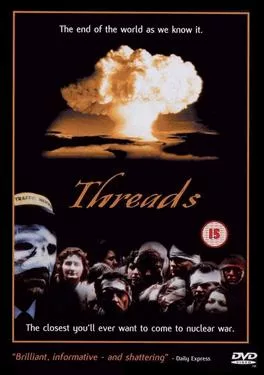
Threads, which tracks the aftermath of a nuclear attack on Sheffield, was first screened on the BBC on 23 September 1984 and fast became a cult classic.
Now filmmakers Craig Ian Mann and Rob Nevitt have spoken to more than 50 people involved in the making of the film for their documentary Survivors: The Spectre of Threads.
Mr Mann said: “[Threads] is a film that more than any I can think of everybody who worked on it it has impacted their lives in some way or another. Sometimes very positively and sometimes somewhat negatively.”
“There are people who have suffered the trauma of having been in and seen Threads,” he told BBC Radio Sheffield.
“There’s one participant in the documentary who has become a Doomsday prepper.
“He lives in America and has a bunker and canned food and weapons and he is prepared for the end of the world at any moment and that’s because he was in and saw Threads.”
Trump wants to stop nuclear proliferation. STRATCOM could play a major role.
Henry Sokolski, executive director of the Nonproliferation Policy Education Center, argues that the US needs to carry a new “big stick.”
By Henry Sokolski, Breaking Defense | August 29, 2025 breakingdefense.com

Last Monday, President Donald Trump pronounced, “We can’t let nuclear weapons proliferate.” Two days later, Secretary of State Rubio met with International Atomic Energy Agency (IAEA) Director General Rafael Mariano Grossi and recommitted the United States to preventing the proliferation of nuclear weapons.
After America’s bombing of Iran’s suspect nuclear sites, there’s cause to take these commitments seriously, but only if it’s more than a one off.
Emphasizing consistency is essential. Historically, America has backed nonproliferation in fits and starts. Under Presidents Gerald Ford and Jimmy Carter, the United States opposed the recycling of plutonium for commercial use because it was too close to bombmaking. It blocked reprocessing activities in South Korea, Taiwan, and Brazil.
Full Event Recording: Press Conference & Commemoration – Hiroshima Atomic Bombing 80th Anniversary Event (August 6, 2025)
DOE and LANL Silence Public and Tribal Community Member Voices While Pushing Radioactive Tritium Venting
For Immediate Release: August 22, 2025
Contact: Kalyn Mae Finnell, Coordinator, Communities for Clean Water
Los Alamos, NM — This week’s so-called “public meeting” regarding Los Alamos National Laboratory’s (LANL) proposal to vent radioactive tritium emphasized the persistence of the Department of Energy (DOE) National Nuclear Security Administration (NNSA) and LANL to disregard communities concerns while prioritizing nuclear weapons projects.
In-person attendees were allotted three minutes to make statements about their concerns. Over 100 online participants—including many Pueblo community members who could not attend the meeting in Los Alamos in-person due to health, distance, or work commitments—were surprised to find that they were not permitted to provide verbal comments and restricted to submitting only one emailed question. DOE/NNSA and LANL gave no prior notice of this change. “This is not meaningful participation. It is exclusion,” said Marissa Naranjo with Honor Our Pueblo Existence.
The stakes are at an all time high. Tritium — produced in the development of nuclear weapons as triated water — is a radioactive isotope of hydrogen that travels quickly through air, water, soil, and food. When exposed to the human body, it can cause cancer, genetic damage, cross the placental barrier, and cause health impacts across generations. DOE/NNSA insists venting is the sole safe option moving forward—however, their own “independent” technical review revealed significant issues with this assertion. The review acknowledged significant deficiencies: the absence of real-time monitoring, a lack of container-specific risk analysis, and insufficient examination of safer alternatives such as filtration or storage until decay occurs. Community members are also asking: How can a review be independent when DOE managed the process, designated the reviewer, and defined the scope? This does not represent independence—it signifies a conflict of interest.
“This is the same broken pattern we’ve seen for decades,” said Joni Arends with Concerned Citizens for Nuclear Safety. “LANL creates the danger, then tells us radioactive releases are our only option. They force the public and Pueblo communities into what NMED itself has called ‘untenable situations.'”
Local community leaders also noted that DOE has consistently overlooked reports by Tewa Women United, Communities for Clean Water, and scientific experts regarding the risks associated with tritium. These technical reports documented exposure pathways unique to Pueblo communities, including impacts on women, children, and traditional farming lifeways. By sidelining this research, DOE has once again dismissed Indigenous voices and lived experiences—further diminishing trust and perpetuating environmental racism.
“If our gathering here today is to mean anything, it must mean that in fidelity to all those whose lives were destroyed or savagely damaged on August 6, 80 years ago, we refuse to live in such a world of nuclear proliferation and risk-taking. We will resist, we will organize, we will pray, we will not cease, until the world’s nuclear arsenals have been destroyed.”
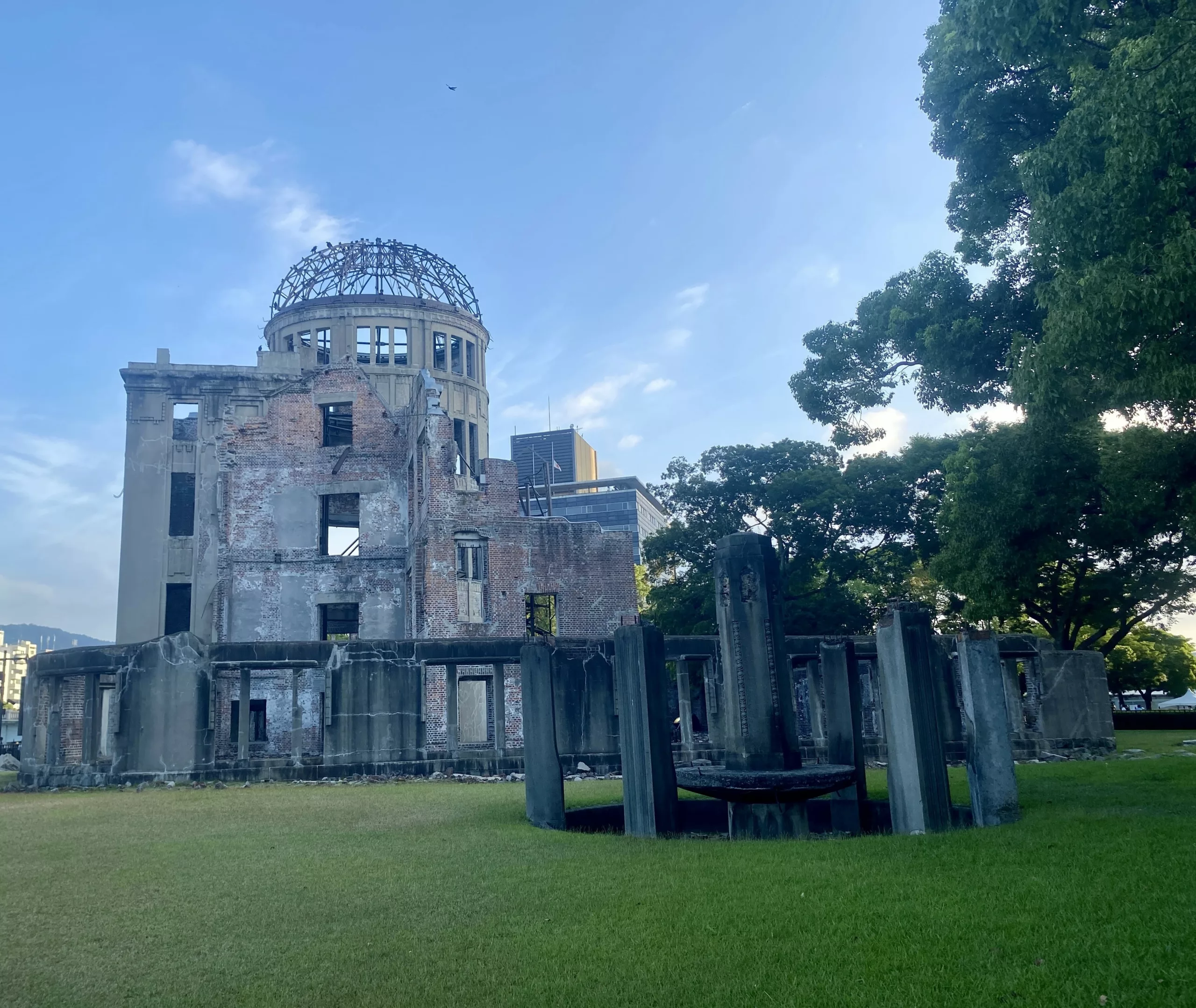 — Cardinal Bob McElroy of Washington, DC, August 5, 2025, at the World Peace Memorial Cathedral in Hiroshima, Japan.
— Cardinal Bob McElroy of Washington, DC, August 5, 2025, at the World Peace Memorial Cathedral in Hiroshima, Japan.
Nuclear Weapons Issues & The Accelerating Arms Race: August 2025
Nuclear Weapons Budget:
• NNSA’s detailed budget was finally released, the latest ever. $2.8 billion is for “plutonium modernization” (i.e., pit production) projects, of which $1.8 billion for LANL. The Lab’s nuclear weapons programs are having a full billion dollars added to them for FY 2026 (which begins this October 1) on top of the $4 billion they already have. The Lab’s $6 billion FY 2026 budget is now 84% nuclear weapons. Meanwhile cleanup and nonproliferation programs are being cut by 5% and renewable energy research completely eliminated.
• Over for the next four years the “reconciliation” bill adds another $750 million for plutonium modernization (mostly at SRS) and $1 billion “to accelerate the construction of National Nuclear Security Administration facilities.”Continue reading
August 6th U.S. Atomic Bombing of Hiroshima Commemoration in Santa Fe
Eighty Years Later, it is Beyond Time to Get Rid of Nuclear Weapons.
Last week on August 6, 2025, the 80th anniversary of the U.S. atomic bombing of Hiroshima, community members gathered at the Center for Progress and Justice on Cerrillos Road in Santa Fe to honor the solemn occasion and demand an end to the ongoing nuclear weapons harm and destruction that first began here in New Mexico.
The event was organized by Nuclear Watch New Mexico in collaboration with the Up in Arms campaign by Ben Cohen, co-founder of Ben & Jerry's, to reduce military and nuclear weapons spending, the International Campaign to Abolish Nuclear Weapons (winners of the 2017 Nobel Peace Prize), the Santa Fe Archdiocese, the Back from the Brink New Mexico Hub, and the Tularosa Basin Downwinders Consortium. It centered around a massive public art installation from Up in Arms of a towering cubic structure framed by messages on top of images of $100 bills. The structure is sized to literally hold $100 billion of those bills, respresenting what the U.S. spends every year on nuclear weapons (the total cost of nuclear weapons "modernization" is up to $2 trillion). Visible to thousands of drivers each day, the large installation pressures viewers to reckon with the scale of this cost and to imagine what else those resources could make possible. A prominent message on one of the four sides quotes the president in saying, "'We don't need to build brand new ones. We already have so many,' — Donald Trump" and below it, "His budget includes a down payment of $2 trillion of nuclear weapons." Another side reads, "The current U.S. nuclear arsenal is the equivalent of 50,00 Hiroshima explosions. One nuclear bomb killed over 100,000 people in Hiroshima."
The installation will remain on display for the foreseeable future, GO SEE IT NOW! 1420 Cerrillos Road, Santa Fe, NM 87505.
During the event, speakers Archbishop John C. Wester (by video from Japan), Tina Cordova of the Tularosa Basin Downwinders, Sophie Stroud from Nuclear Watch New Mexico, Anne Pierce-Jones from Back from the Brink, Ben Cohen representing Up in Arms, and Seth Shelden from ICAN all gave concrete steps and actions that concerned citizens can take to help promote a safer world. The speakers were presented by former Santa Fe County Commissioner Anna Hansen, who stated, “Disarmament is the only answer. I have spent my life working to end the nuclear cycle, as many have, and most of us in this room have never known a world without nuclear weapons.”
Speakers drew connections between the devastation in Hiroshima and the continued production of plutonium pits at LANL. At Los Alamos National Lab alone, five billion dollars will be poured into nuclear weapons programs in Fiscal Year 2026, starting this October. One billion dollars was added to last year’s budget, which includes a 42% increase for nuclear warheads. At the same time, nonproliferation programs are being cut, the science budget sliced in half, and funds for renewable energy zeroed out and gone completely. The push for "modernization" of the US’s nuclear arsenal is directly linked to plutonium pit production at Los Alamos, specifically expanding plutonium pit production. LANL will receive $1.7 billion in direct costs for pit production in 2026. Add in the indirect costs, and it’s roughly double that. All of this future pit production is exorbitantly expensive, yet the National Nuclear Security Administration still has no credible cost estimate for these plans.
WHAT YOU NEED TO KNOW: New plutonium pits are not needed to maintain the existing stockpile - it is all for future, new designs. And these new weapons cannot be tested because of the testing moratorium - or conversely could pressure the US to resume testing. In 2006, independent experts concluded that existing plutonium pits last at least a century. Their average age now is about 43 years. A new pit aging study is expected this year. Expansion plans should stop until then.
The U.S.’s $2 trillion “modernization” program is a plan to keep nuclear weapons forever. It is claimed to be essential for “deterrence.” But deterrence relies upon the flawed assumption that all actors will behave rationally, and that accidents or miscalculations will never occur. History says otherwise. Moreover, the U.S. and Russia have always rejected minimal deterrence in favor of nuclear warfighting capabilities that could end civilization overnight. That is why we have 1,000s of nuclear weapons and are funneling billions of dollars into mass death machines, even though everybody knows that a nuclear war must never be fought and can never be won.
See more on the myth of deterrance here:
Deterrence is the Threat: NukeWatch Presentation for Western New Mexico University – April 1, 2025
Media coverage of the event includes the Santa Fe New Mexican articles below:
New Mexico reckons with its role in Japan’s atomic devastation on 80th anniversary of Hiroshima
‘End the nuclear cycle’: Antinuclear New Mexicans speak out 80 years after Hiroshima bombing
View the full event recording - Click HERE or below:
Nobel Peace Conference: A Message to Humanity – Featuring a Video with Nuclear Watch New Mexico on Our Plutonium Pit Federal Lawsuit to Show What Citizen Action on the Legal Front Can Accomplish for Nuclear Disarmament
The video above shows the entire conference (but begins playing at our portion); to view our video alone on YouTube CLICK HERE or watch below!
Santa Fe New Mexican MY VIEW – 80 years on: The immorality of nuclear weapons
By John C. Wester, SANTA FE NEW MEXICAN | August 5, 2024 santafenewmexican.com
Greetings New Mexicans. The lord’s blessings upon you. I am writing to you from Hiroshima, Japan, on the 80th anniversary of its horrific atomic bombing. All wars are against Christ’s teachings. Two wrongs (including Japanese atrocities in World War II) never make a right.
I am here with Cardinal Blase Cupich of Chicago, Cardinal Robert McElroy of Washington, D.C., Archbishop Paul Etienne of Seattle and our brother Japanese bishops to commemorate the dead and to honor the living Hibakusha (the aging atomic survivors). We especially congratulate the Hibakusha organization, Nihon Hidankyo, for winning the 2024 Nobel Peace Prize.Continue reading
‘End the nuclear cycle’: Antinuclear New Mexicans speak out 80 years after Hiroshima bombing
Organized by Nuclear Watch New Mexico, the event featured speakers from the international campaign — which won the Nobel Peace Prize in 2017 — the Back from the Brink New Mexico Hub and the Tularosa Basin Downwinders Consortium, a group that advocates for “downwinders” in New Mexico who say they were sickened by fallout from the 1945 Trinity Test southeast of Socorro.
By Cormac Dodd cdodd@sfnewmexican.com, The Santa Fe New Mexican | August 6, 2025 santafenewmexican.com
The face of Archbishop John C. Wester played over the screen as the Catholic leader, on the same day surreal moments of horror unfolded during the bombing of Hiroshima 80 years ago, pleaded for nuclear disarmament.
“Do we pull back from the brink and choose life, or do we continue to play with fire, hoping our luck will hold out?” the leader of the Archdiocese of Santa Fe said in a video, recently recorded before he traveled to Japan with a delegation of U.S. bishops.
Wester has made antinuclear advocacy a central part of his tenure since he was appointed to the post in 2015. A group of about 50 people entered the Center for Progress and Justice on Cerrillos Road on Wednesday evening to commemorate the nuclear bombing of Hiroshima and Nagasaki toward the end of World War II.
New Mexico reckons with its role in Japan’s atomic devastation on 80th anniversary of Hiroshima
At a Wednesday evening event organized by Nuclear Watch New Mexico, Archbishop John C. Wester of the Archdiocese of Santa Fe, long an outspoken advocate of nuclear disarmament, is set to celebrate Mass in Japan for victims with some other U.S. Catholic bishops and will participate in commemoration services. The event will be played by video at an event in Santa Fe.
By Cormac Dodd cdodd@sfnewmexican.com, The Santa Fe New Mexican | August 5, 2025 santafenewmexican.com
Wesley Burris remembers waking to a morning of potent, white light and panic as the planet’s first atomic bomb went off in a test in the Jornada del Muerto desert near his family’s Southern New Mexico home in July 1945.
He does not recall, however, hearing the news from Hiroshima and Nagasaki in Japan over the radio just weeks later. In fact, because the U.S. government did not tell his family what it was they saw that July, it was years before Burris realized how the Trinity Test he witnessed as a child served as a prelude to the world-altering bombings of Japan on Aug. 6 and Aug. 9, 1945.
Eighty years ago, the U.S. dropped a nuclear bomb on Hiroshima near the end of World War II, unleashing immediate death on a sweeping scale and rendering vast corridors in the southwestern Japanese city charred and fragmented, with buildings reduced to rubble with harrowing speed.
Nuclear News Archive – 2022
On the 7th Anniversary of Fukushima Disaster, It’s Still a Long Way From Over
7 years on, the decontamination process scheduled for March 2018 has been suspended due to “extremely high” radiation levels (one hour, you’re dead). (ref)
In Surprise Move, Trump Tweets He’ll Meet With Kim Jong Un by May
-
President Donald Trump agrees to meet with North Korean leader Kim Jong Un, a significant development in the decades-long effort to denuclearize the Korean Peninsula.
-
“Great progress being made but sanctions will remain until an agreement is reached,” Trump tweeted Thursday.
- Trump’s decision bypasses the traditional negotiation process in favor of a top-level face-to-face meeting.
The worrisome aspects of Trump’s Nuclear Posture Review represented the arguments of the “Second Nuclear Age” hawks, i.e. that the world is no longer bi-polar, that the US needs more small nukes widely deployed so as not to be caught with either no response or a strategic response in regional conflicts, where the adversary might doubt we would go strategic. Thus US ‘deterrence’ had weakened. In this view, numerous smaller, widely deployed nukes are meant to sustain ‘deterrence’ into the more chaotic “Second Nuclear Age”.
On the other hand, the Russian response is framed by their overriding anxiety that the US, with its missile defense systems surrounding Russia, and NATO troops on Russian borders, is intent on developing the ability to win a nuclear war with Russia. Russia is afraid of the destabilization of the Cold War strategic equilibrium model, wherein neither side sought an advantage so great that it might consider a surprise attack. ABMs – anti-ballistic missile systems- were banned so that neither side could hope to launch a first strike and take out the remaining retaliatory missiles with a missile defense system.
The Russian high command stated last year that they in fact did now think the US was working to develop this capability (ref). The Trump Nuclear Posture Review, with its emphasis on war-fighting nukes, only reinforced Russian command fears that the US could be preparing for a fight. The weapons systems Putin announced last week were all noted for their ability to defeat missile defenses and thus, in the Russian view, to preserve ‘MAD’- mutually assured destruction- the Cold War’s solution to preventing a nuclear war. To understand better the Russian view, it’s worth remembering what Yuri Andropov said in 1981:
“The US is preparing for war but it is not willing to start a war… They strive for military superiority in order to ‘check’ us and then declare ‘checkmate’ against us without starting a war.” (ref)
Putin’s speech to the Federal Assembly March 1, 2018:
“Back in 2001, the US announced its withdrawal from the Anti-Ballistic Missile Treaty. Russia was categorically against this. We saw the Soviet-US ABM Treaty signed in 1972 as the cornerstone of the international security system…
Together with the Strategic Arms Reduction Treaty, the ABM Treaty not only created an atmosphere of trust but also prevented either party from recklessly using nuclear weapons, which would have endangered humankind, because the limited number of ballistic missile defense systems made the potential aggressor vulnerable to a response strike.
We did our best to dissuade the Americans from withdrawing from the treaty. All in vain. The US pulled out of the treaty in 2002…
Despite our numerous protests and pleas, the American machine has been set into motion, the conveyer belt is moving forward. There are new missile defense systems installed in Alaska and California; as a result of NATO’s expansion to the east, two new missile defense areas were created in Western Europe: one has already been created in Romania, while the deployment of the system in Poland is now almost complete…”
Defeating missile defenses, from Putin’s speech to the Federal Assembly, March 1:
– The Sarmat ICBM “is untroubled by even the most advanced missile defense systems.”
– A nuclear-powered, nuclear-capable cruise missile: “invincible against all existing and prospective missile defense and counter-air defense systems.”
– A high-speed, deep ocean nuclear drone “There is simply nothing in the world capable of withstanding them.”
– The RS-26 “Avangard” (aka YU-71) A nuclear-capable hypersonic glide vehicle that can travel at 20 times the speed of sound. “It flies to its target like a meteorite, like a ball of fire”
The intersection of these two contrasting frames of reference could see misunderstandings, confusion, and conflict. Putin seemed to feel obliged to make a clear warning.
“We are greatly concerned by certain provisions of the revised Nuclear Posture Review, which… reduce the threshold for use of nuclear arms… in response to conventional arms attacks and even to a cyber-threat.”
As such, I see it as my duty to announce the following.
Any use of nuclear weapons against Russia or its allies, weapons of short, medium or any range at all, will be considered a nuclear attack on this country. Retaliation will be immediate, with all the attendant consequences.”
But he continued:
“There should be no doubt about this whatsoever. There is no need to create more threats to the world. Instead, let us sit down at the negotiating table and devise together a new and relevant system of international security and sustainable development for human civilization. We have been saying this all along. All these proposals are still valid. Russia is ready for this.
And in closing,
“I hope that everything that was said today would make any potential aggressor think twice, since unfriendly steps against Russia such as deploying missile defenses and bringing NATO infrastructure closer to the Russian border become ineffective in military terms and entail unjustified costs, making them useless for those promoting these initiatives.
It was our duty to inform our partners of what I said here today under the international commitments Russia had subscribed to. When the time comes, foreign and defense ministry experts will have many opportunities to discuss all these matters with them, if of course our partners so desire.”
Stephen Cohen: How Washington Provoked- and Perhaps Lost- a New Nuclear-Arms Race
WIPP Could Get $79M Budget Increase Under Trump’s DOE Funding Proposal
“The potential increase would mark a $79 million boost in WIPP’s funding compared with enacted spending in FY 2017, while several infrastructure projects are ongoing at the site to increase airflow and continue to expand the facility’s underground nuclear waste repository.”
Trump: On the US Nuclear Arsenal
“We’re modernizing and creating a brand new nuclear force. And frankly, we have to do it because others are doing it. If they stop, we’ll stop. But they’re not stopping. So, if they’re not gonna stop, we’re gonna be so far ahead of everybody else in nuclear like you’ve never seen before. And I hope they stop. And if they do, we’ll stop in two minutes. And frankly, I’d like to get rid of a lot of ’em. And if they want to do that, we’ll go along with them. We won’t lead the way, we’ll go along with them…
But we will always be number one in that category, certainly as long as I’m president. We’re going to be far, far in excess of anybody else.”
For more see Politico
Pence Snubs Peace Initiative at Winter Olympics
Experts have been saying for some time that there is no good military solution to the Korea crisis. The best way to see the crisis defused would, of course, start with a rapprochement of the two Koreas. In fact the State Dept. recently said that the US would have no objection to a unified Korea as long as it was de-nuclearized. So that path was in the wind, but when the two Koreas initiated a peace and reconciliation effort at the Olympics, US Vice President Pence refused to go along.
Pence spent the days leading up to Friday’s opening ceremonies warning that the North was trying to ‘hijack the message and imagery of the Olympic Games’ with its ‘propaganda.’
But the North was still welcomed with open arms to what South Korean President Moon Jae-in called ‘Olympic games of peace’ and the U.S. appeared to be the one left out in the cold.
Pence sat stone-faced in his seat as Moon and North Koreans officials stood together with much of the stadium to applaud their joint team of athletes. White House officials stressed that Pence had applauded only for the American team, but Asia experts said the vice president’s refusal to stand could be seen as disrespectful to the hosts.
While South Korean President Moon did not hesitate to shake hands and smile with his North Korean visitors, Pence didn’t appear to even look in the direction of the North Korean delegation during the Friday event.
Seems the Trump administration would rather threaten than talk.
Pence’s Anti-North Korea PR Campaign Bombs
US Vice-President Mike Pence rains on Olympic parade with Korea team snub
DPRK Develops its Nukes For The Same Reason We Keep Ours: Deterrence
We often hear these days that the North Korean nuclear weapons program is a failure of deterrence. It is not. DPRK’s nuke forces were developed for the same reasons ours exist: to deter another state from attacking it. (In particular, the US.) DPRK’s program is a confirmation of the concept of deterrence.
The concept of deterrence means a state has nuclear weapons so other states dare not attack. As such all states might aspire to develop a deterrent. Our ‘deterrence’ was never meant to prevent states form going nuclear, only to prevent them from attacking us.
Preventing other states from going nuclear was the purpose of the 1968 Non-Proliferation Treaty. The NPT deal was that non-nuclear weapons states would abstain from developing nuclear arsenals in exchange for a promise from the nuclear weapons states to negotiate in good faith to achieve genuine reductions and eventual abolition of nuclear arsenals. The nuclear weapons states have not done that. They still have 15000 nukes. That is the failure.
DPRK’s nuclear development isn’t down to a failure of deterrence but rather a failure of the nuclear weapons states to abide in good faith by the Non-Proliferation Treaty.
NM Senator Martin Heinrich Letter to Sec.Def. Mattis Warning Against “Bloody Nose” Attack on North Korea
“Massive gamble”, “risk of mass casualties and utter devastation”… Urges diplomatic efforts…
ICAN Honored: 2017 Nobel Peace Prize Ceremony
- 6.36 – Address of Nobel Committee leader Berit Reiss-Andersen on the choice of ICAN for the 2017 Peace Prize (view transcript)
- 35.12 – Presentation of the award to ICAN’s Beatrice Fihn and Setsuko Thurlow
- 44.22 – ICAN Director Beatrice Fihn address (view transcript)
- 1.03.55 – Setsuko Thurlow address (view transcript)
The Particular Problem of ICBMs
The presidential authority to launch a nuclear strike alone stems from the Cold War, when the US feared a Soviet missile strike against US ICBM silos; our missiles had to be launched before theirs hit, and Soviet missiles would reach targets in the US in 20-30 minutes, so there would be no time to consult a larger circle.
This is one of the reasons Former Secretary of Defense William Perry and General James Cartwright, former Commander of the US Strategic Command, cited in a letter to President Trump on October 31, urging him to abandon the ICBM leg of the triad, rather than forging ahead with an expensive full replacement ICBM arsenal. Because of the ‘use them or lose them’ logic, plus the fact that ICBMs cannot be recalled once launched, their letter identifies this leg of the triad as the most susceptible to an unintended or accidental nuclear war.
The Air Force hasn’t waited for the Nuclear Posture Review to be released this winter, already awarding contracts to Northrup Grumman and Boeing for the ‘modernized’ ICBM force, called Ground-Based Strategic Deterrent, or GBSD. (Lockheed is also in the competition – the Air Force will ‘down-select’ from three companies to two for the next phase of the program.) (ref)
James Doyle, The Bulletin, October 25:
“Ballistic missiles armed with nuclear warheads are enablers of the apocalypse.”
Nobel Peace Prize For International Campaign to Abolish Nuclear Weapons
“The Norwegian Nobel Committee has decided to award the Nobel Peace Prize for 2017 to the International Campaign to Abolish Nuclear Weapons (ICAN). The organization is receiving the award for its work to draw attention to the catastrophic humanitarian consequences of any use of nuclear weapons and for its ground-breaking efforts to achieve a treaty-based prohibition of such weapons. We live in a world where the risk of nuclear weapons being used is greater than it has been for a long time. Some states are modernizing their nuclear arsenals, and there is a real danger that more countries will try to procure nuclear weapons, as exemplified by North Korea. Nuclear weapons pose a constant threat to humanity and all life on earth.”
The award was the lead story this morning on Germany’s Deutsche Welle with a video interview with Yanthe Hall of ICAN Germany.
Democracy Now, Oct. 6: Amy Goodman interviews Tim Wright, Asia-Pacific director of ICAN on the Nobel award and the ban treaty. (watch segment).
Hawaii, California Preparing for North Korean Nuclear Attack
A startling headline, but alas, true. Precautionary measures no doubt, in case the angry war of words goes to military violence and a possible nuclear exchange. It’s unlikely Kim would fire a first strike at the US mainland; but in response to a US strike on North Korea, well maybe. Apparently, some people are seeing America’s ‘military option’ becoming more likely.
Hawaii residents told to prepare for nuclear attack as tensions reach new high
“The state will begin testing a siren warning system, a wailing sound, in November. It would give people about 12 to 15 minutes to get to safety, after which they would be required to stay indoors for 48 to 72 hours.”
-North Korea: California’s plans for nuclear attack revealed
“The threat of a nuclear attack on California is real enough that a regional task force circulated a document to help the state prepare for a ‘catastrophic’ strike.”
-From Independent.co.uk
See also October 10, 2017:
-University of Hawaii sent an email to students Monday with tips on how to prepare for a nuclear attack
B-52s Useless Without New Long-Range Nuclear Cruise Missiles
When asked by Hudson Institute Senior Fellow Rebeccah L. Heinrichs whether the LRSO is a weapon the US military truly needs for nuclear deterrence, Hyten said there was a “million reasons” for the program, most of which are classified.
Controversy After Another Test of the B61-12 Nuclear Smart Bomb
The editor-in-chief of Russia’s National Defense magazine, Igor Korotchenko, warned that the second test of the B61-12 could indicate that the US is speeding up its rearmament program while “both Washington and Brussels are considering the scenario of a limited nuclear war in Europe.” He added that NATO forces have already conducted drills in the Baltic Sea, including mock nuclear strikes on Russia. “During regular exercises, including those in the Baltic Sea, the air forces of NATO countries have repeatedly carried out combat training tasks involving tactical nuclear strikes on targets located in the northwest of our country,” Korotchenko told RIA Novosti (ref).
NNSA press release on the B61-12 tests: (view/download PDF)
There are an estimated 180 B61 nuclear bombs stored at NATO bases in Italy, Belgium, the Netherlands, Germany and Turkey.
Mattis: Yes, there are military options that do not put Seoul at Risk
Hans Nichols, NBC Pentagon correspondent, tweeted:
Mattis just dropped by Pentagon bullpen; “There are many military options, in concert with our allies”
Mattis confirms military options against N Korea that do not put Seoul at risk: “Yes there are, but I will not go into details.”
Russia Will Help Japan Clean Up Fukushima Disaster
Russian President Putin made the announcement at the Eastern Economic Forum in Vladivostok, Sept 7.
“Officials say the decommissioning of the wrecked Fukushima reactors will take several decades, and according to some estimates, the cost could reach $200 billion.”
North Korea: Sunday’s test was a hydrogen bomb small enough to fit an ICBM
Sunday morning North Korea set off what is thought to have been a 120 kiloton hydrogen bomb, a day after press pictures were released showing Kim Jong Un and staff with what was said to be a miniaturized thermonuclear warhead ready to load in an ICBM nose cone. [Note Sept 14: 38North has revised the estimated yield to 250 kilotons.
“Based on the seismic signature, the yield of this test definitely is an order of magnitude higher than the yields of the previous tests…”
– Catherine Dill, James Martin Center
In China, the blast was felt as a strong tremor (USGS: 6.3 mags.) shaking windows. Chinese officials said they were carrying out emergency radiation testing along the border with North Korea.
North Korea’s brief period of “restraint”, what Secretary Tillerson called a possible “pathway” to dialogue, is over, following the launch of a missile over Japan on August 28, and now it’s most powerful nuclear test to date. Pres. Trump had said only last week that his threat to rain “fire and fury” on North Korea was working and that Kim was “starting to respect us”. Well, apparently not. Kim probably feels like he’s on a run, and might just as well go full speed ahead; he may well believe he has outplayed the US and won’t be stopped. Some have suggested that when Kim feels he has an effective enough arsenal to deter the US, he may be ready for a freeze or suspension and negotiations toward a peace treaty. On the other hand, one can imagine that he may see no need of that, and just keeps growing his nuclear forces. (Note that at some point he will also be a threat to China.)
The test was rather irritating for China, as Premier Xi is hosting the BRICS Conference this week, an important element of China’s foreign policy agenda, and he will not like being upstaged by Mr Kim’s latest feat.
Regarding the Hwasong-12 missile launch on August 28:
In “North Korea’s Hwasong-12 Launch: A Disturbing Development” Michael Elleman, 38North.org wrote: “An alternative disturbing hypothesis is that tests of the missile have included a small post-boost vehicle (PBV) to provide extra boost to the payload after the main stage is discarded…” read more…
Recommended: End the 67-year war by Robert Alvarez, at the Bulletin. “It’s time to find a path to end the 67-year-long Korean war. As the threat of military conflict looms, the American public is largely unaware of the sobering facts about America’s longest unresolved war and one of the world’s bloodiest.” read more…
September 13: DPRK launches another missile over Japan, with greatest range yet, enough to hit Guam.
What Will Be Different After September 20, 2017?
“So here is a question for all of us to think about: how will it change the global conversation when a treaty is affirmed by so many countries from all over the world? What will it feel like to know the clock is ticking down to nuclear weapons abolition . . . instead of worrying that the clock is ticking down to nuclear war? What will be different about the way people talk about the behavior of the states that still stubbornly hold on to nuclear weapons (and threaten each other with them)? In what light will it cast the countries that rely on the “nuclear umbrella” of countries like the US?”
-Joe Scarry, “Nuclear Weapons Abolition: What Will Be Different After September 20?”
Navy Families Sue Fukushima Operators for Wrongful Death
Families of five Navy service members who died after responding to the Fukushima nuclear meltdown have sued Tokyo Electric Power Co., blaming the deaths on radiation illnesses contracted from the March 2011 disaster.
The families will join a lawsuit from 152 other members or survivors of members of the 7th Fleet who performed humanitarian response from March 11, 2011 until March 14, when the USS Ronald Reagan aircraft carrier was moved away from Fukushima due to detection of nuclear radiation in the air and on helicopters returning to the ship.
USAF awards contracts for new nuclear missile to Lockheed, Raytheon
The Air Force is on track to replace the aging AGM-86B Air Launched Cruise Missile with modernized weapon capabilities designed for its nuclear bomber fleet, to include the B-21.
Today, the Air Force awarded contracts to Lockheed Martin Corporation and Raytheon Company to mature design concepts and prove developmental technologies for the new Long Range Standoff weapon.
North Korea: Red Lines Crossed, Threats Intensify
“If they do not now accept our terms, they may expect a rain of ruin from the air,
the like of which has never been seen on this earth.”
“They will be met with fire and fury the likes of which this world has never seen before…”
Within hours of Trump’s “fire and fury” warning, North Korea announced it was “carefully examining” plans to launch 4 missiles toward Guam.
Could we be seeing the confluence of events that bookends a 72-year hiatus with another nuclear bombing in Asia?
August 8: The Washington Post is reporting that a ‘confidential assessment’ by the “intelligence community” that Kim has already miniaturized his bombs, that he has as many as 60 nukes, that he’s scaling up his ICBM missile production… in other words, red lines crossed.
Senator Lindsay Graham, Aug 1, 2017: Trump has “got to choose between homeland security and regional stability… If there’s going to be a war to stop [Kim Jong Un], it will be over there. If thousands die, they’re going to die over there. They’re not going to die here. And [Trump’s] told me that to my face. That may be provocative, but not really. When you’re president of the United States, where does your allegiance lie? To the people of the United States.” Read More…
So here we stand on the brink of nuclear hostilities. Note that the nuclear weapons state with the smallest arsenal and a barely functioning ICBM is still an existential threat, even to the country with the largest arsenal and the most advanced delivery systems on the planet.
It seems that the nuclear weapon is most useful to the smallest power, transforming it from a military gnat into a lethal danger to even the most powerful states.
One would think that it would be in the interest of the powerful country to seek the complete removal of nuclear weapons from the picture. ASAP. But in fact, given the opportunity- of the Ban Treaty negotiations for example- the US has refused to have anything to do with any such effort. (“We do not intend to sign, ratify or ever become party to it.”) Instead, a trillion dollar renewal and ‘modernization’ of our nuclear forces are planned.
Where does that road lead?
UCS: North Korean ICBM in latest test appears able to reach major US cities, including New York
Union of Concerned Scientists Reports that, like the previous test on July 8, North Korea launched its missile on a highly lofted trajectory; a standard intercontinental trajectory, accounting for the Earth’s rotation, would give it range to hit New York City, and only 100 kilometers short of Washington DC.
Black Saturday, October 27, 1962.
In the midst of the Cuban Missile Crisis, this was the day Vasily Arkhipov did not use the nuclear torpedo against the US ship dropping depth charges on it. It was also the day a US U2 was shot down over Cuba, killing the pilot. It was also the day this happened.
60 yrs ago, the biggest nuclear weapon in the US arsenal was accidentally dropped 5 miles south of Albuquerque, New Mexico
On May 27, 1957, 5 miles south of the Albuquerque airport, a Mark 17 H-bomb (pictured at left) was accidentally dropped from a B-36 Peacemaker on it’s way to Kirtland AFB. The plutonium pit was not on board, but the fissile ‘spark plug’ detonated. Bits of the bomb, the biggest ever deployed by the US at 15-20 megatons, could still be found in the area (see picture below). But the authors of this 2010 report urged the collecting public to hurry, as the area would soon be covered over by a development called “Mesa del Sol”. And so it now is.(source: Carl Willis, “Albuquerque, Ground Zero”)
Fukushima Robot Finds Potential Fuel Debris Hanging Like Icicles in Reactor Three
TEPCO plans to decide on the procedure for removing the melted fuel from each unit this summer; it will confirm the procedure for the first reactor during fiscal 2018 ending in March 2019, with removal slated to begin in 2021. Decommissioning the reactors will cost $72 billion.
The Ban Treaty: What’s Next?
Ray Acheson
“The next process is going to be signing on to the treaty. It’ll open for signature at the U.N. in New York on the 20th of September. And after that, they’ll have to go through a national ratification process in order for it to enter into force. But that should all happen within the next year or two, and then it will be international law that is binding on all of the countries that have adhered to it, which means, in some cases, they’re going to have to change their practices and policies that may enable or facilitate the use or the possession of nuclear weapons.
“There could be economic divestment, for example, from nuclear weapon-producing companies. There could be changes of national law that currently permit transit of nuclear weapons through territorial waters. There could be different shifts in policies and practices around military training exercises that currently involve the preparation to use nuclear weapons. And it will also be an iterative process of building up the stigmatization and the norm against nuclear weapons through the public policy, through parliaments and through national discourse.”
Ray Acheson is director of Reaching Critical Will, the disarmament program of the Women’s International League for Peace and Freedom; she represents WILPF on the steering committee of the International Campaign to Abolish Nuclear Weapons.
Interview with Rick Wayman and Ira Helfland on the Ban Treaty
Rick Wayman:
“I think one of the most exciting things about this treaty process is the very deep and meaningful involvement of civil society, of my group, the Nuclear Age Peace Foundation, of the International Physicians for the Prevention of Nuclear War. Many of us were under the umbrella of an international campaign called the International Campaign to Abolish Nuclear Weapons. This voice really was unstoppable, but I also want to mention, to the credit of the nations that participated in this UN process, they gave civil society a big voice. It was really unlike any other UN process that I have been a part of before. I think that this, in many ways, revolutionized the way that international diplomacy and international treaties are made, so I’m very excited about that and very hopeful for the future.”
Ira Helfland:
“The nuclear weapons states did not participate in this process and that’s been the root of the problem. They have not wanted to honor their obligations under the Non-Proliferation Treaty to eliminate their nuclear arsenals. The rest of the world has finally lost patience. They’re concerned by the overwhelming medical evidence that even a very limited nuclear war would be a worldwide catastrophe. The rest of the international community has issued a real challenge saying that they will no longer accept a situation in which nine countries hold the entire world, including their own people, hostage to these terribly dangerous nuclear arsenals.”
Read the full interview at The RealNews.com
Rick Wayman is the Director of Programs and Operations at the Nuclear Age Peace Foundation. He also serves on the Board of Directors of the Alliance for Nuclear Accountability, and is Co-Chair of the ‘Amplify: Generation of Change’ network for nuclear abolition.
Ira Helfand is a co-Founder and Past President of Physicians for Social Responsibility and co-President of PSR’s global federation the International Physicians for the Prevention of Nuclear War.
U.S. DOE Documents Obtained via FOIA Request Confirm “Mission Need” to Expand “Dilute and Dispose” Method of Plutonium Disposition at Savannah River Site, Replacing MOX
The “dilute and dispose” process would package and dispose of the plutonium as waste rather than processing it for use as nuclear reactor fuel. The disposal processes consists of mixing plutonium oxide with “stardust,” a secret inert material, into small containers that are then placed in drums for geologic disposal.
UN Adopts Treaty To Prohibit Nuclear Weapons
The treaty prohibits nations from developing, testing, producing, manufacturing, transferring, possessing, stockpiling, using or threatening to use nuclear weapons. It also prohibits them from assisting, encouraging or inducing anyone to engage in any of those activities. In addition, nations must not allow nuclear weapons to be stationed or deployed on their territory. (See FAQs on the treaty provisions at ICAN)
ICAN’s executive director, Beatrice Fihn: “We hope that today marks the beginning of the end of the nuclear age. It is beyond question that nuclear weapons violate the laws of war and pose a clear danger to global security… No one believes that indiscriminately killing millions of civilians is acceptable- no matter the circumstance- yet that is what nuclear weapons are designed to do. Today the international community rejected nuclear weapons and made it clear they are unacceptable.” (ref: ICAN)
Ray Acheson, director of the Women’s International League for Peace and Freedom disarmament program, ‘Reaching Critical Will’: “This is a treaty made by people. By diplomats who got inspired by an idea and went home to change their government’s positions. By activists writing, thinking, and convening, bringing together governments and civil society groups to figure out how to make things happen. By survivors who give their testimony despite the personal trauma of reliving their experiences… By campaigners who mobilize nationally to raise awareness and pressure their governments. By politicians who truly represent the will of their people and speak the truth in parliaments…” (Nuclear Ban Daily July 8)
Perry Project statement: UN Adopts New Treaty on the Prohibition of Nuclear Weapons
Arms Control Assoc: New Nuclear Weapons Prohibition Treaty Marks a Turning Point
Union of Concerned Scientists: Historic Treaty Makes Nuclear Weapons Illegal
Ploughshares Fund: A Stunning Rebuke To The Nuclear-Armed States
US, UK, France joint statement: “We do not intend to sign, ratify or ever become party to it.”
Fishermen Express Fury as Fukushima Plant Set to Release Radioactive Material into Ocean
777,000 tons stored in 580 tanks at the Fukushima plant, which is quickly running out of space… Shunichi Tanaka, chairman of the Nuclear Regulation Authority, has been urging Tepco to release the water. Tepco chief Kawamura says he feels emboldened to have the support of the NRA chairman.
Despite the objections of local fishermen, the tritium-tainted water stored at the Fukushima No. 1 nuclear plant will be dumped into the sea, a top official at Tokyo Electric says.
North Korea Finally Tests an ICBM
“As with most of North Korea’s recent long-range missile tests, this one used a so-called “lofted” trajectory to keep the missile from overflying neighboring countries while still demonstrating high performance. If the data is correct, preliminary trajectory reconstructions indicate that if the missile were fired on a more efficient trajectory it would reach a range of anywhere from 6,700 to 8,000 km. David Wright, who provided the 6,700 km figure, acknowledges that his early analysis did not include the effect of the Earth’s rotation and the performance would probably be higher if the missile were launched in an easterly direction. The United States, of course, is to the east of North Korea. By any standard, this is the performance of an intercontinental ballistic missile. Fired from North Korea, it probably couldn’t reach the contiguous United States, but Hawaii and Alaska would be within reach.”
Final Negotiations Begin on Nuclear Weapons Ban Treaty
Draft Nuclear Weapons Ban Treaty View/download PDF
An Open Letter from Scientists in Support of the UN Nuclear Weapons Negotiations
Selected Elements of a Treaty Prohibiting Nuclear Weapons
Statements and working papers to the conference
The International Association Of Lawyers Against Nuclear Arms is calling for a a prohibition on “threat of use”. (ref)
Unfold Zero, the World Future Council, Parliamentarians for Nuclear Non-Proliferation and Disarmament and the Basel Peace Office are calling for a prohibition on the financing of nuclear weapons production. (ref)
We have a dossier on the background and trajectory of this initiative, and we’ll keep it up to date with news and developments: Ban Treaty dossier.
For further in-depth coverage of these negotiations, see the Reaching Critical Will and ICANwebsites. Also note the ban treaty blog at ICAN for daily news and developments.
Mattis “Open To Rethinking” New ICBMs and Nuclear Cruise Missiles
Pressed by Sen. Dianne Feinstein, who opposes the planned nuclear cruise missile (LRSO), Defense Secretary Mattis told a Senate Budget Hearing June 14 he’s open to rethinking the triad, as well as the LRSO.
Mattis said he would be consulting with former Defense Secretary William Perry, who has advocated eliminating one leg of the triad by phasing out the land-based intercontinental ballistic missiles. Perry met with Mattis on the day of the hearing, and later tweeted, “Very wide ranging, candid, and productive discussion with Sec Def Mattis at the Pentagon today.”
Perry is also strongly opposed to developing new nuclear cruise missiles, which he says are “uniquely destabilizing” weapons, because an adversary cannot tell a conventional missile from a nuclear-armed version, risking miscalculation in a crisis.
“I register loud and clear the potential destabilizing view that some people see this weapon bringing and I’m taking that on board,” Mattis said. see the Washington Examiner
Note that both ICBMs and the nuclear cruise missiles – the two weapons systems most frequently seen by experts as unnecessary and dangerous, are Air Force systems, and that Heather Wilson, a long time pal of the weapons contractors, is now Secretary of the Air Force.
How to Deal With North Korea
There are no good options. But some are worse than others.
This is a detailed long-form report from Mark Bowden at The Atlantic. It’s well worth the read; – or you can listen to a sonorous voice patiently read the whole thing to you (recommended) via Soundcloud. The “no-good options”? Prevention (first strike); Turning the Screws; Decapitation; Acceptance.
Draft Nuclear Weapons Ban Treaty Released Today
(l.) Conference President Elayne Whyte of Costa Rica, and (r.) Tim Wright of ICAN
Lab Fire Highlights Ongoing LANL Waste Problems
The incident highlighted, once again, a pattern of consistent mismanagement in the maintenance and cleanup of some of the most dangerous materials on Earth.
This pattern of problems also has prompted the Defense Nuclear Facilities Safety Board to question whether the facility should continue to operate and handle increasing quantities of plutonium in coming years. On Friday, the board said it will hold a June 7 hearing in Santa Fe to question a number of experts about the lab’s ability to safely carry out future nuclear missions at PF-4 (the “plutonium building”)…
US Energy Secretary Rick Perry visits WIPP
“Perry said he is convinced WIPP is a safe solution for the nation’s nuclear waste, suggesting there are no plans to cut funding….” from KRQE.
Energy Secretary Perry Visits LANL, Promises Cleanup of Nuclear Wastes
Perry said the US can
‘No longer continue to kick the can down the road’ when it comes to cleaning up long-term radioactive and hazardous waste at the nation’s nuclear labs, and that he wants to send a clear message to Americans that ‘their families are not going to live in fear of a country that’s got waste scattered around places it doesn’t need to be….’ There are too many places where ‘the lives and health of our citizens are in jeopardy, because the federal government has failed to respond appropriately by removing this waste in a timely way…’ He wants to send a clear message to Americans that ‘their families are not going to live in fear of a country that’s got waste scattered around places it doesn’t need to be… I want to get things done. I’m a realist, and I realize we’re not going to clean it up overnight. We’re going to make progress.’
From the ABQ Journal
Nuclear News Archives – 2021
Nothing Found
It seems we can’t find what you’re looking for. Perhaps searching can help.


